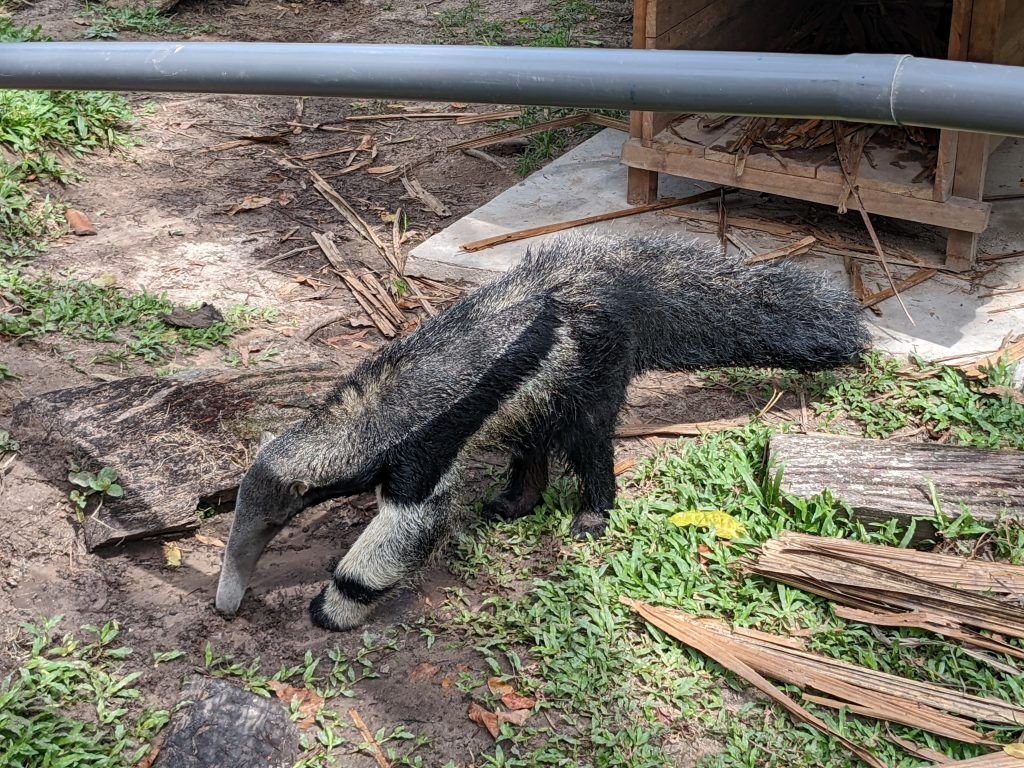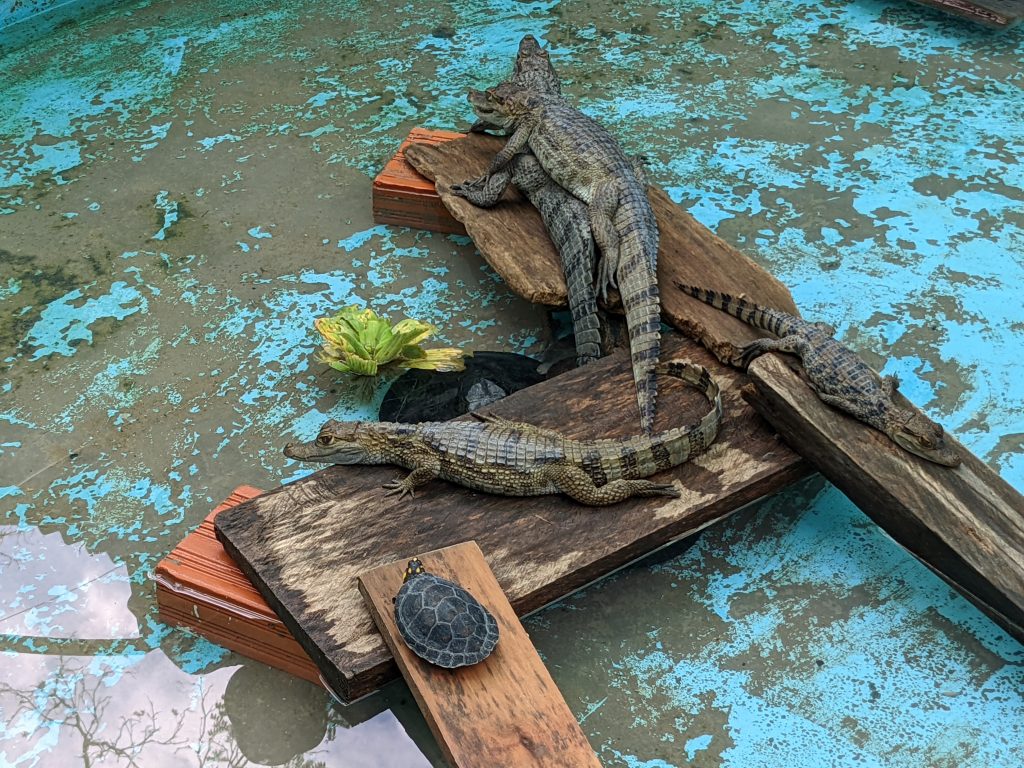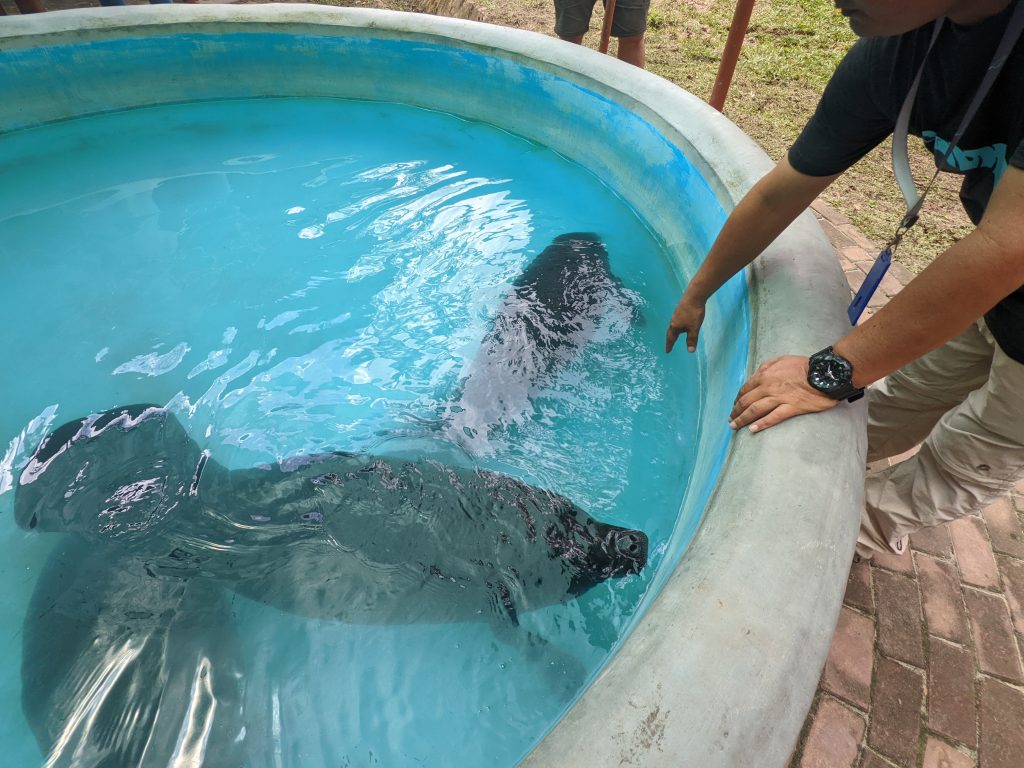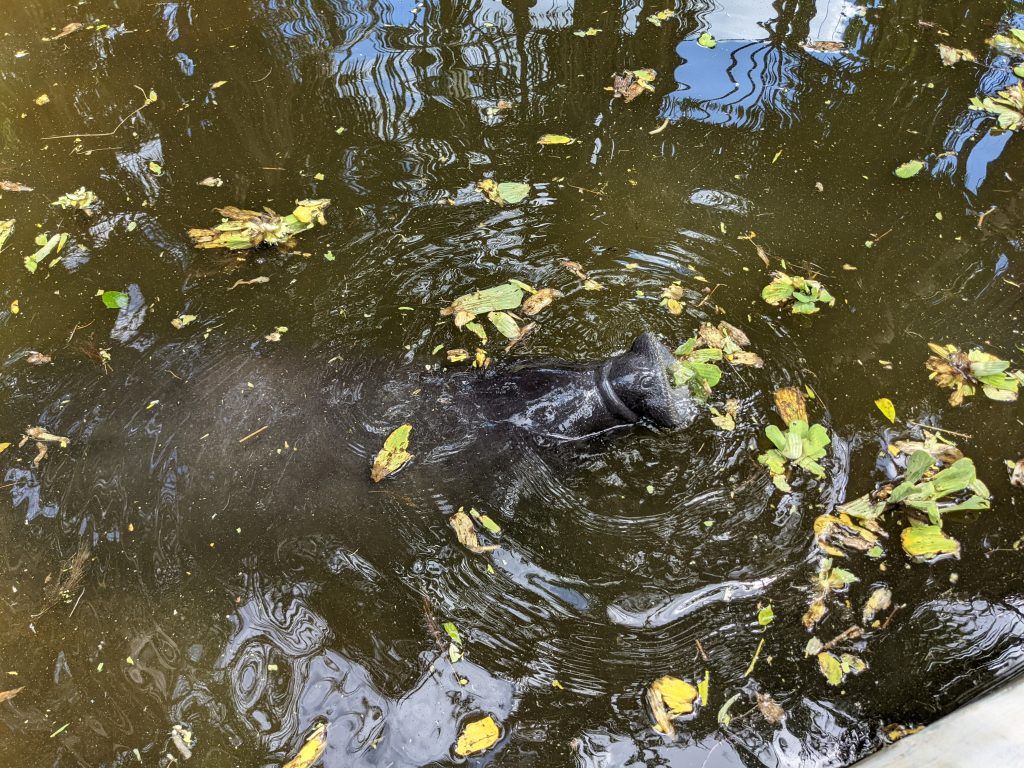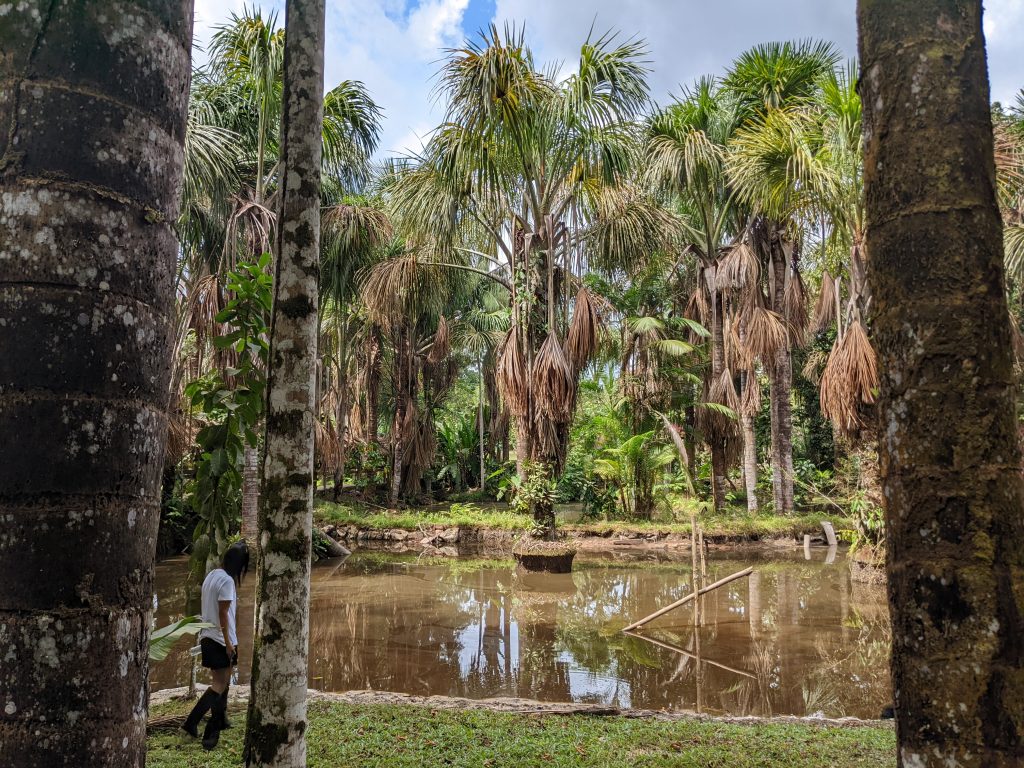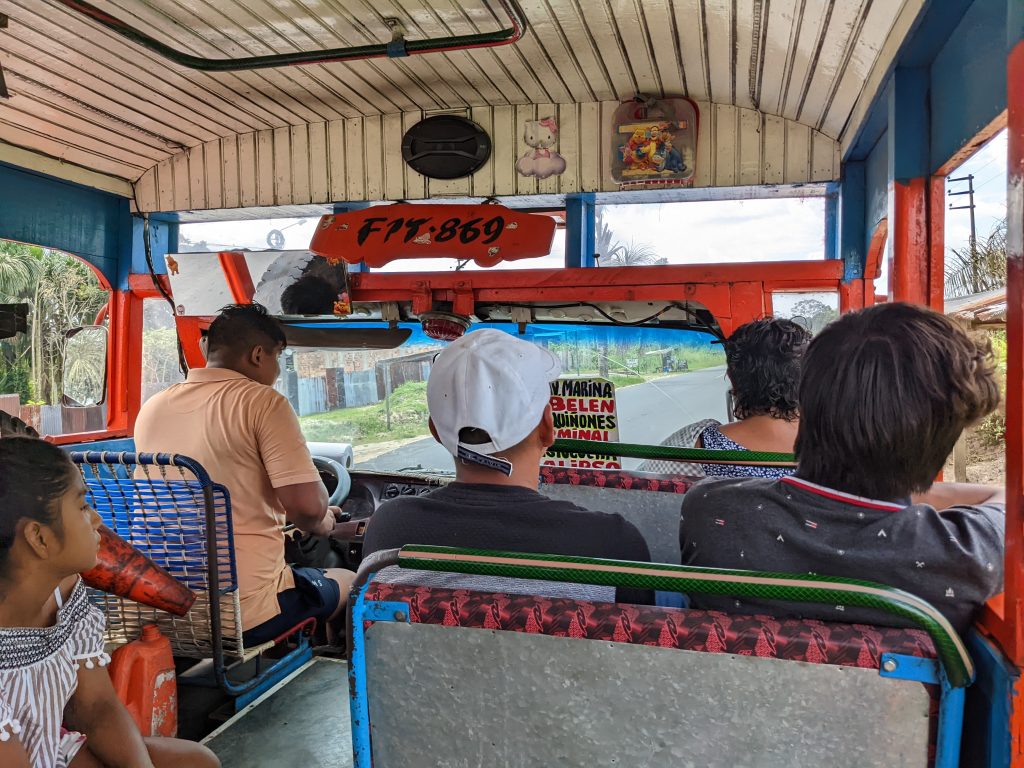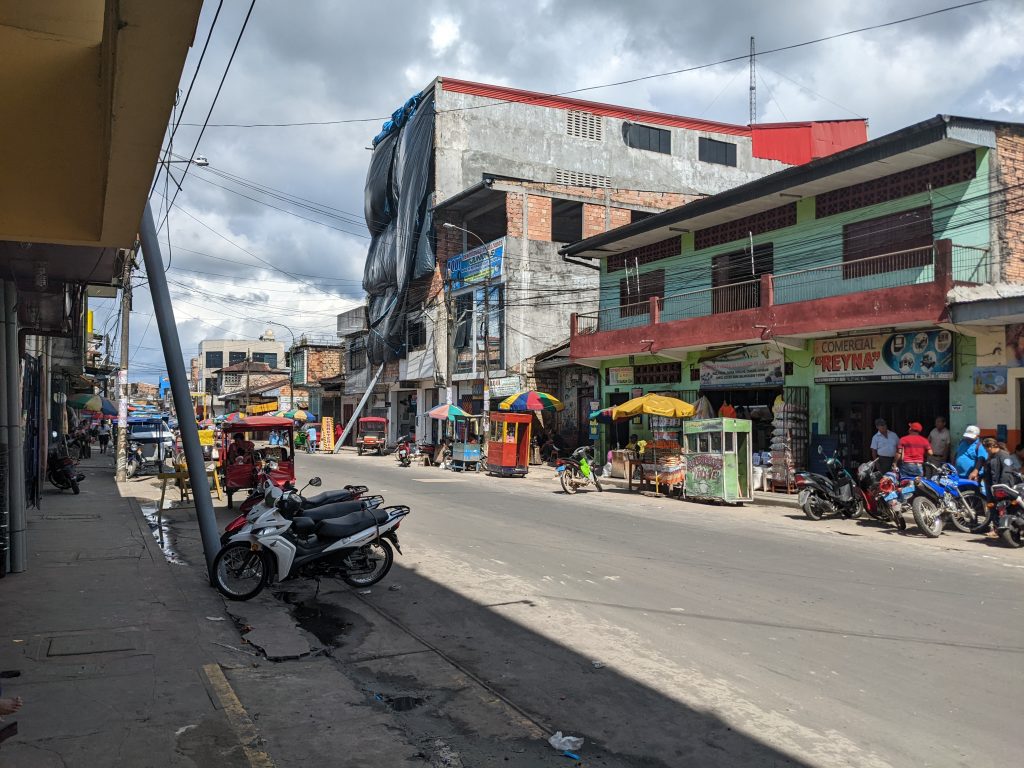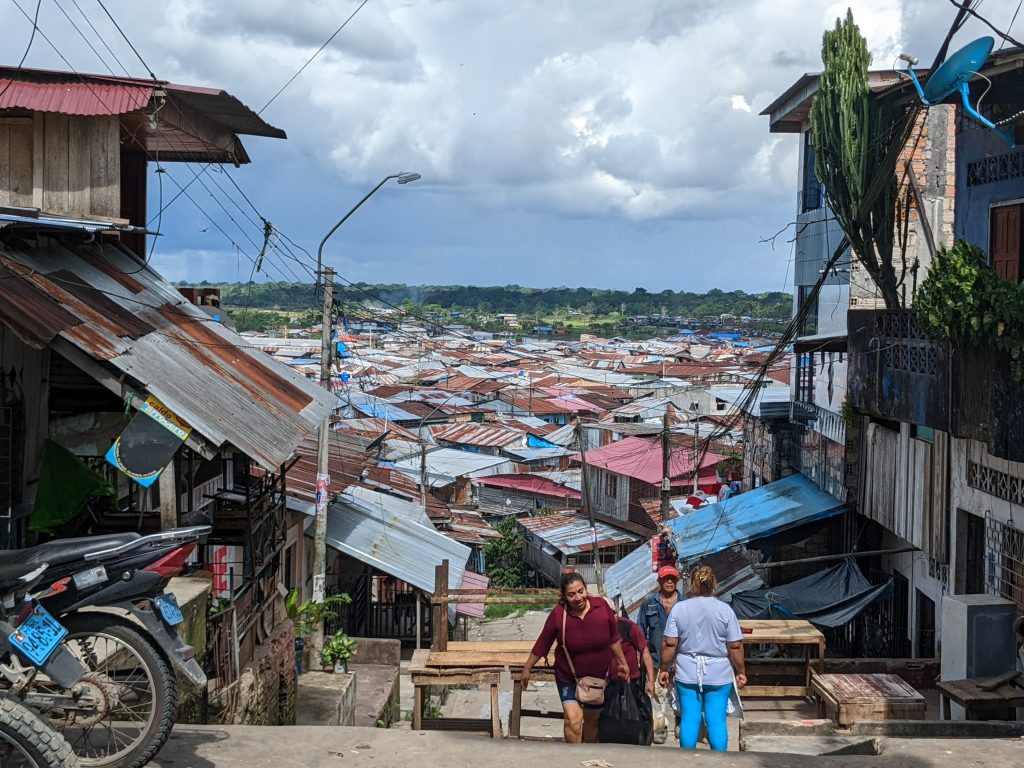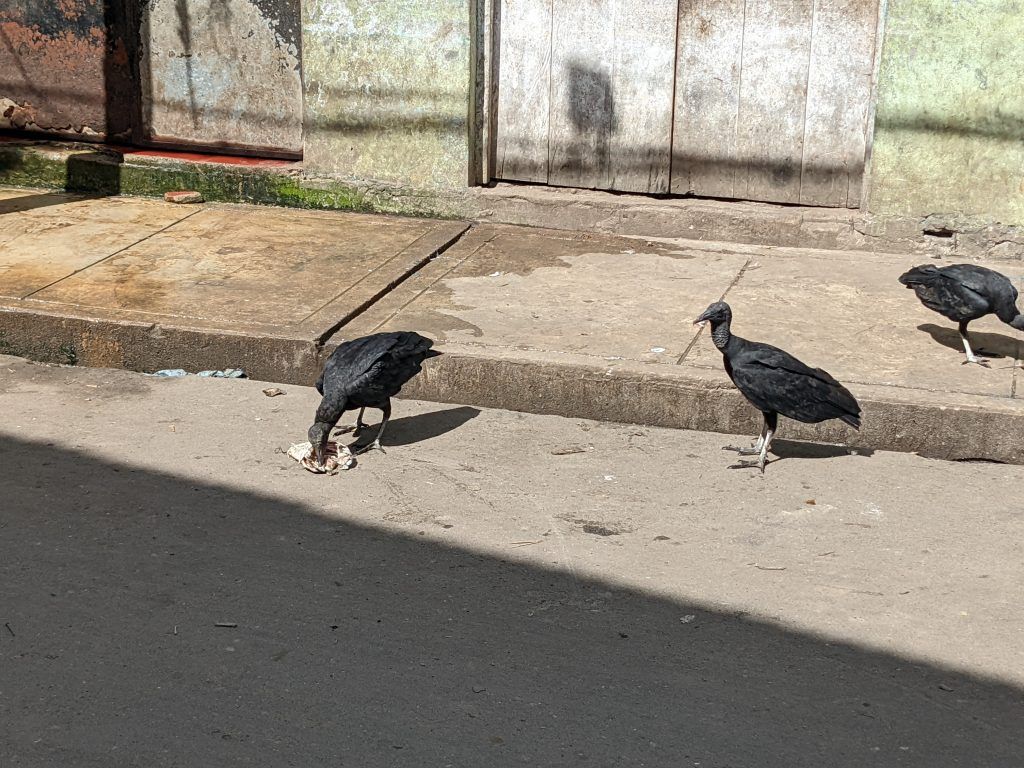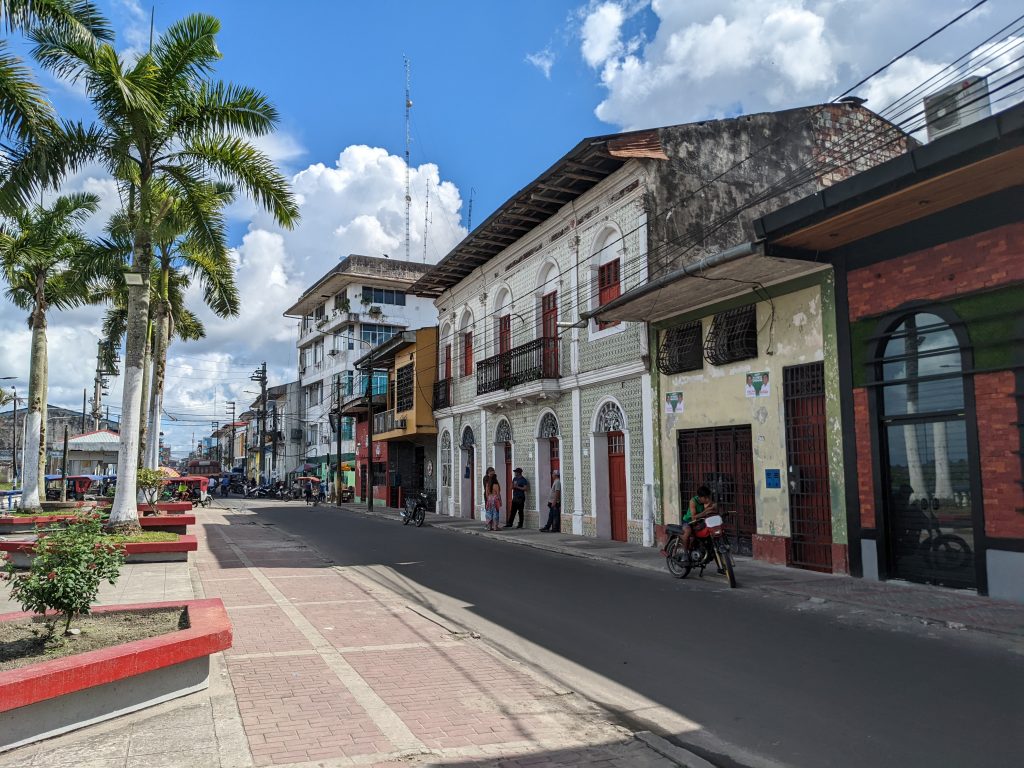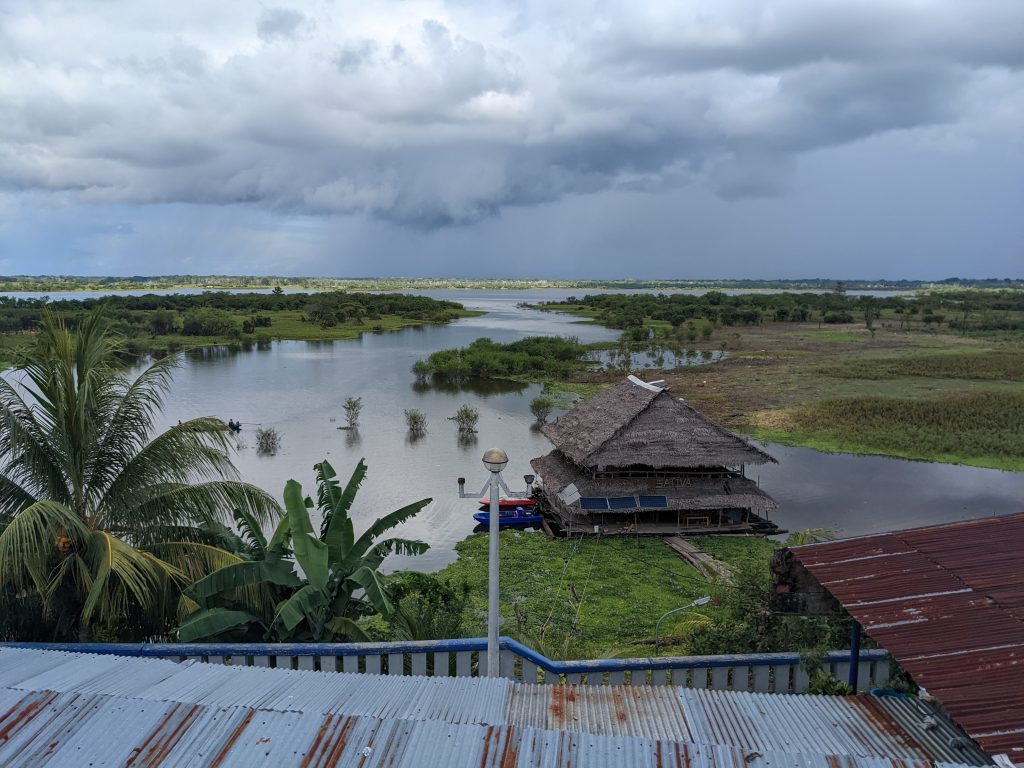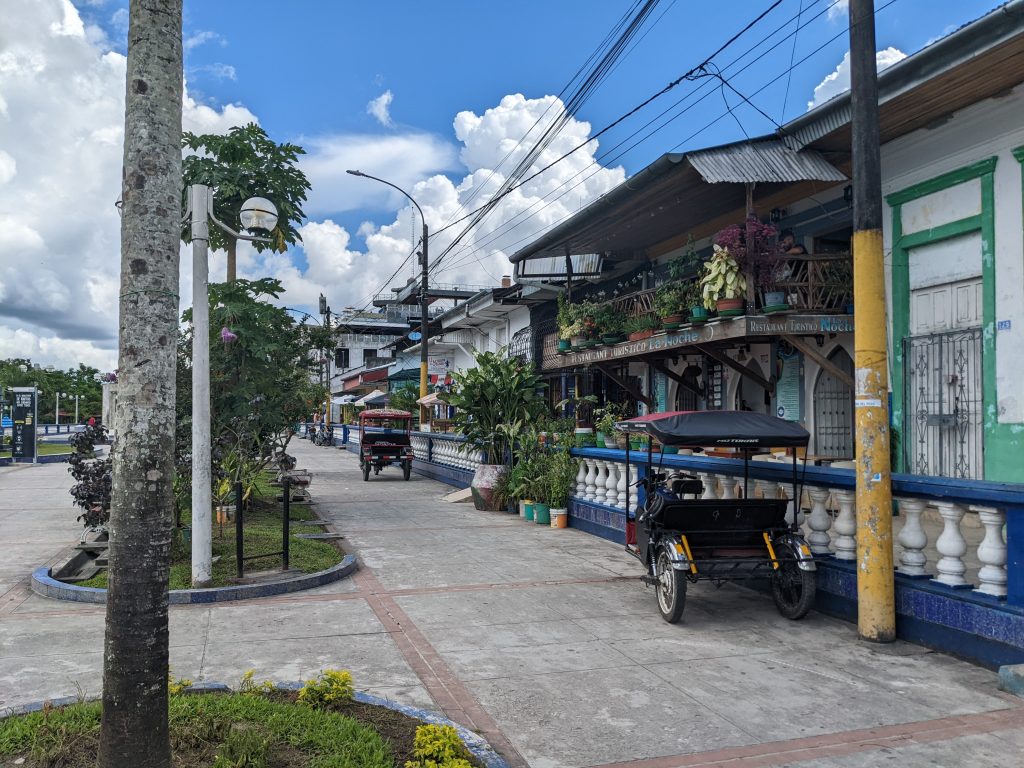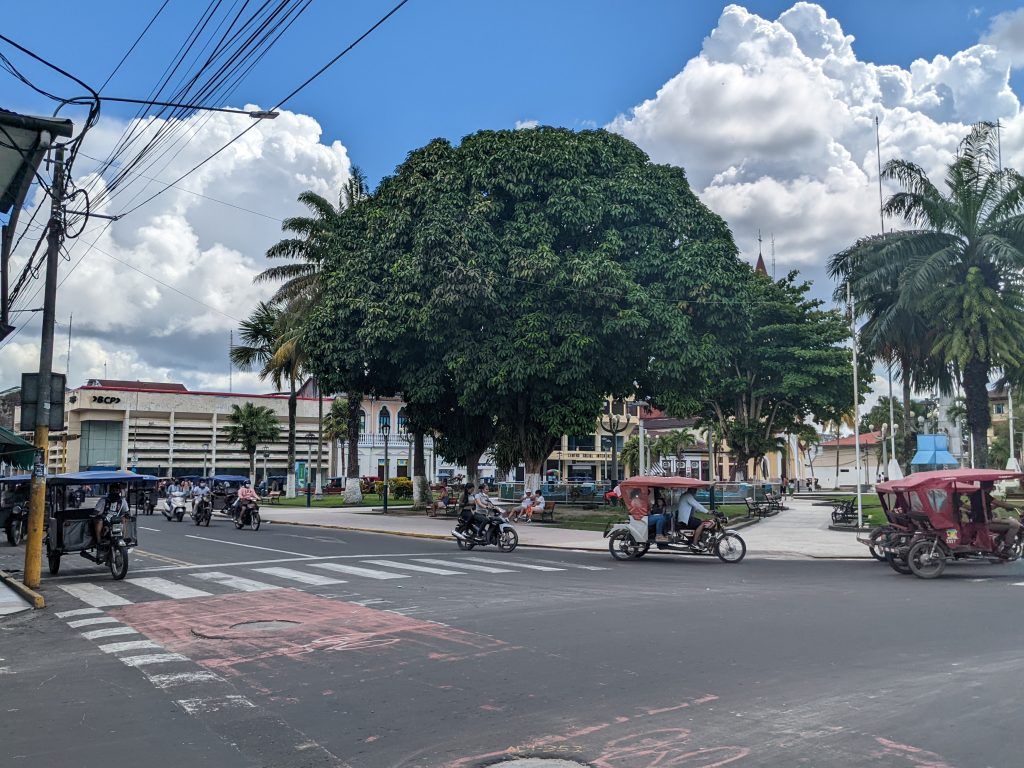I had a wonderful experience visiting the Amazon Basin in Ecuador last month. Now that I was in Peru, I thought I should do the same thing here. So I spent 5 more days exploring another slice of this huge, amazing ecosystem.
The Lodge
Grand Amazon Lodge is owned by an Israeli-Italian couple who are both PhD level biologists. The lodge is located in primary rainforest near the Amazon River. We all had our own private rooms and guides for the duration of our stay there. There were really cool guests from the US, Italy, Spain and Germany while I was there.
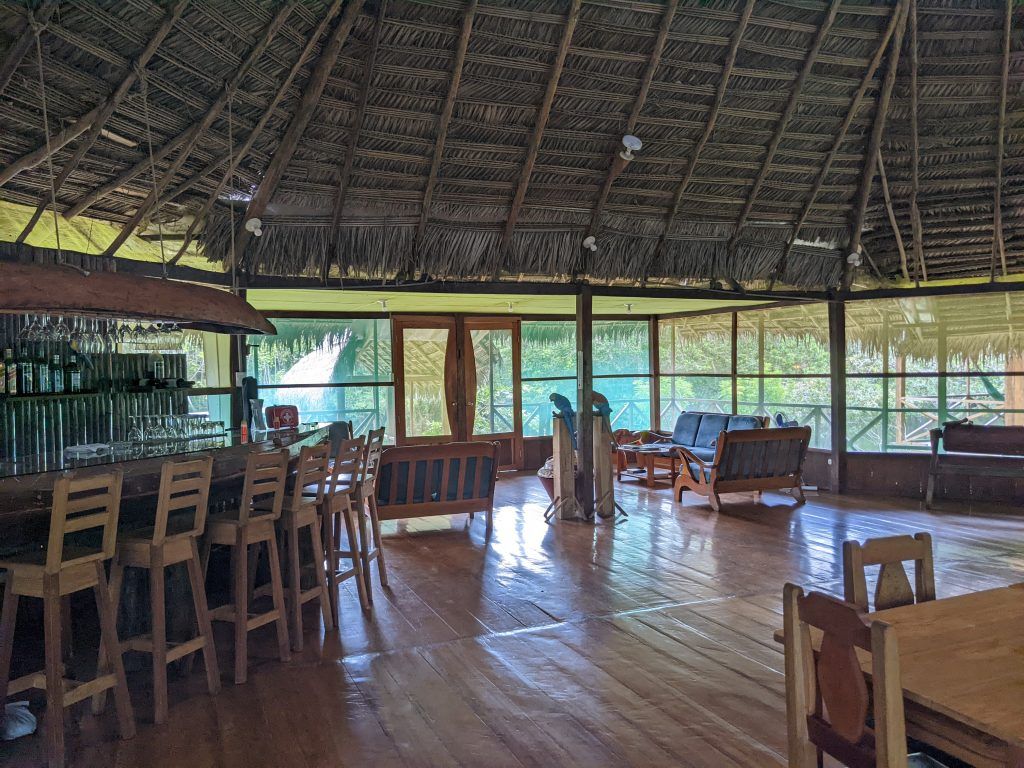
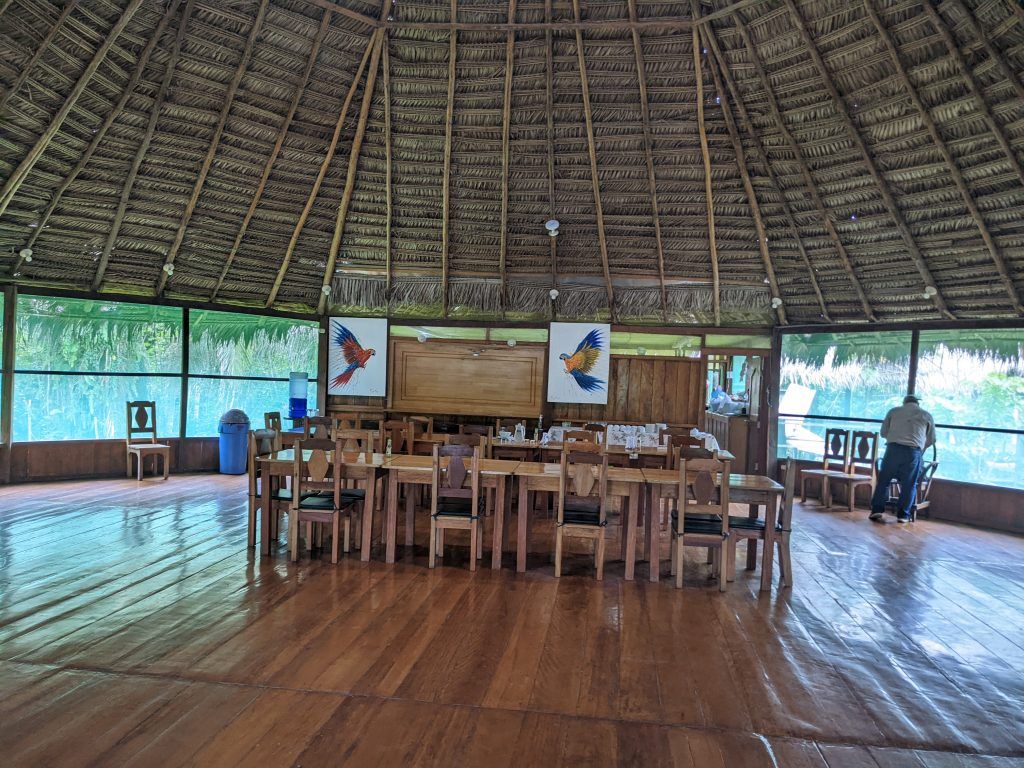
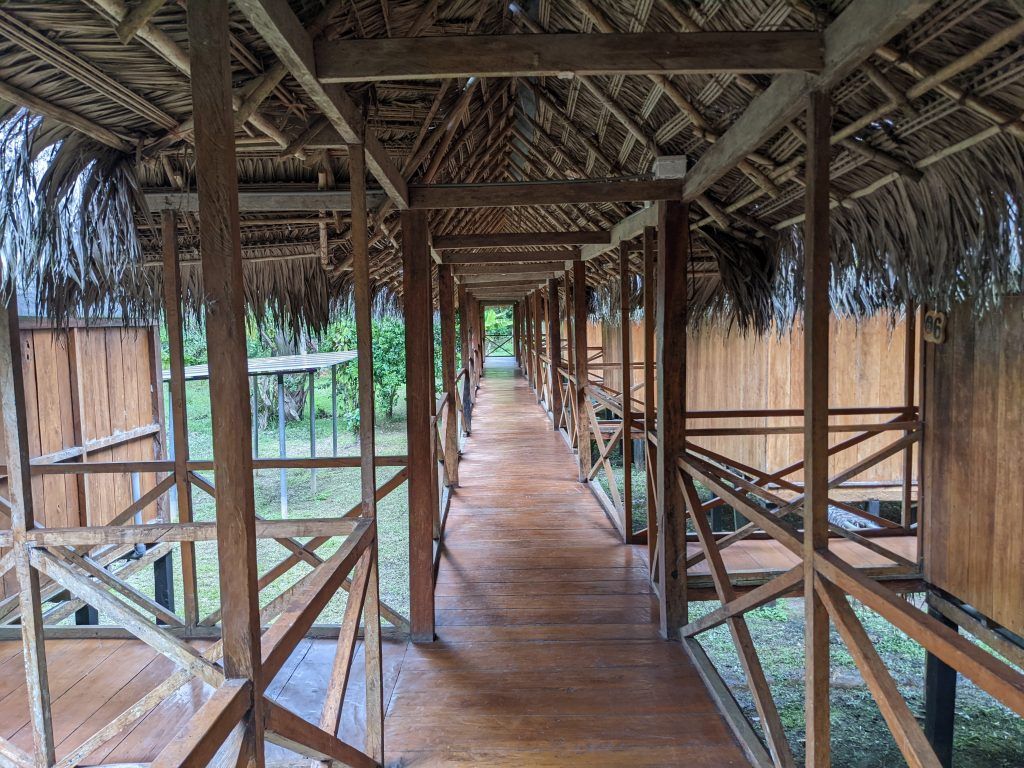
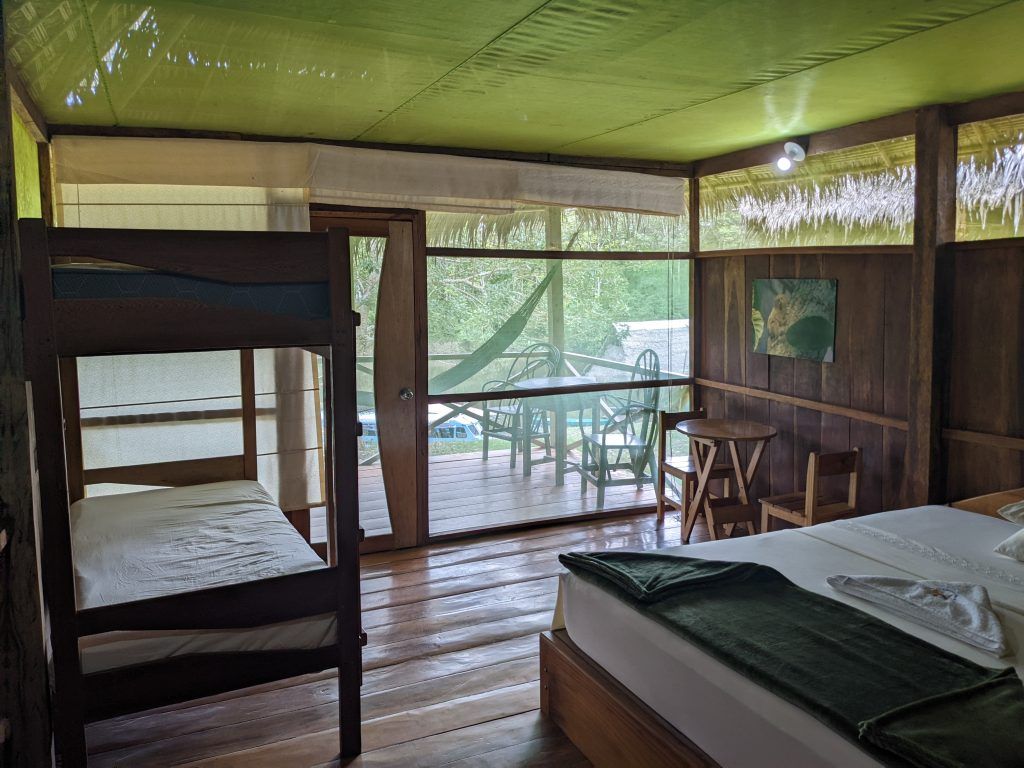
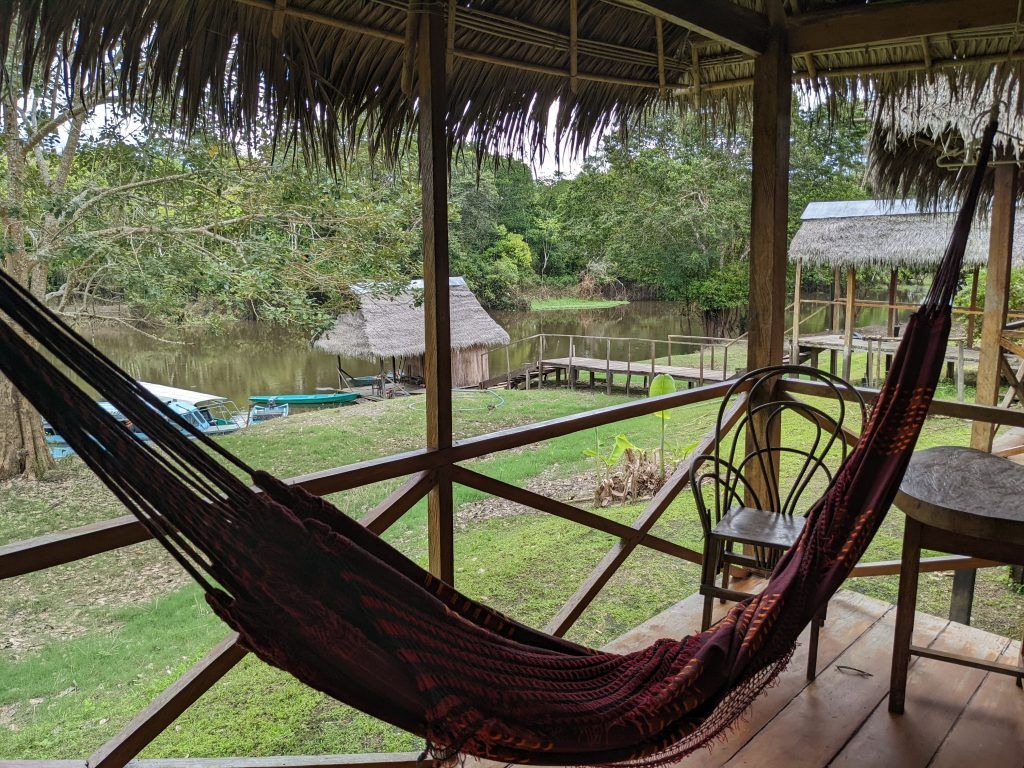
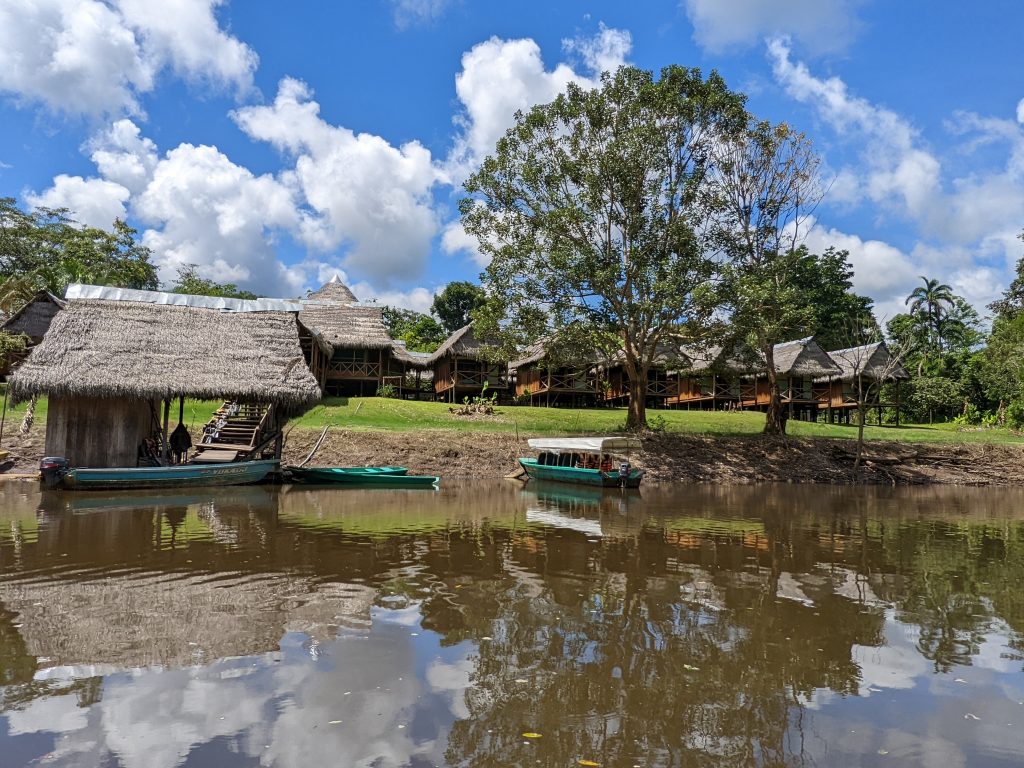
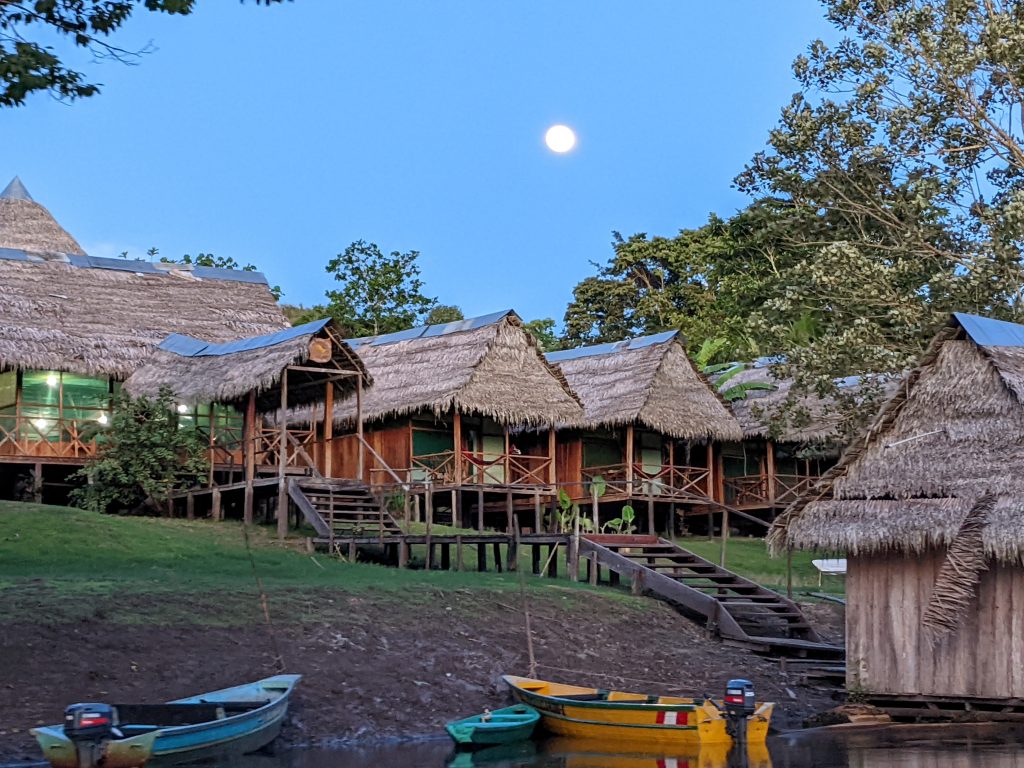
Amazon Dolphins
One afternoon I took the opportunity to go to an area on the Amazon River with a lot of pink and grey dolphins. The pink dolphins here were incredible. A couple of times I saw almost their entire bright pink bodies come out of the water. Unfortunately, they were incredibly difficult to photograph: they don’t have a distinctive dorsel fin and they tend to surface randomly to breath.
The grey dolphins are more like ocean dolphins. They seem to surface more in a straight line and they have a larger dorsel fin that is easier to photograph. That’s why all the photos below are of grey dolphins.
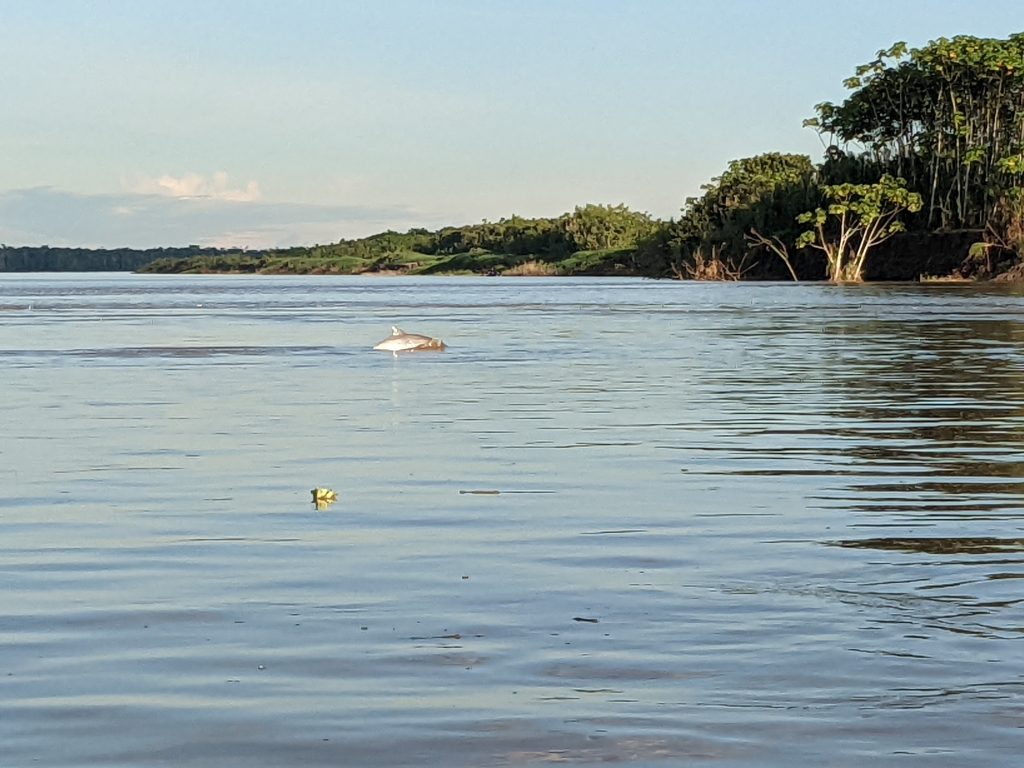
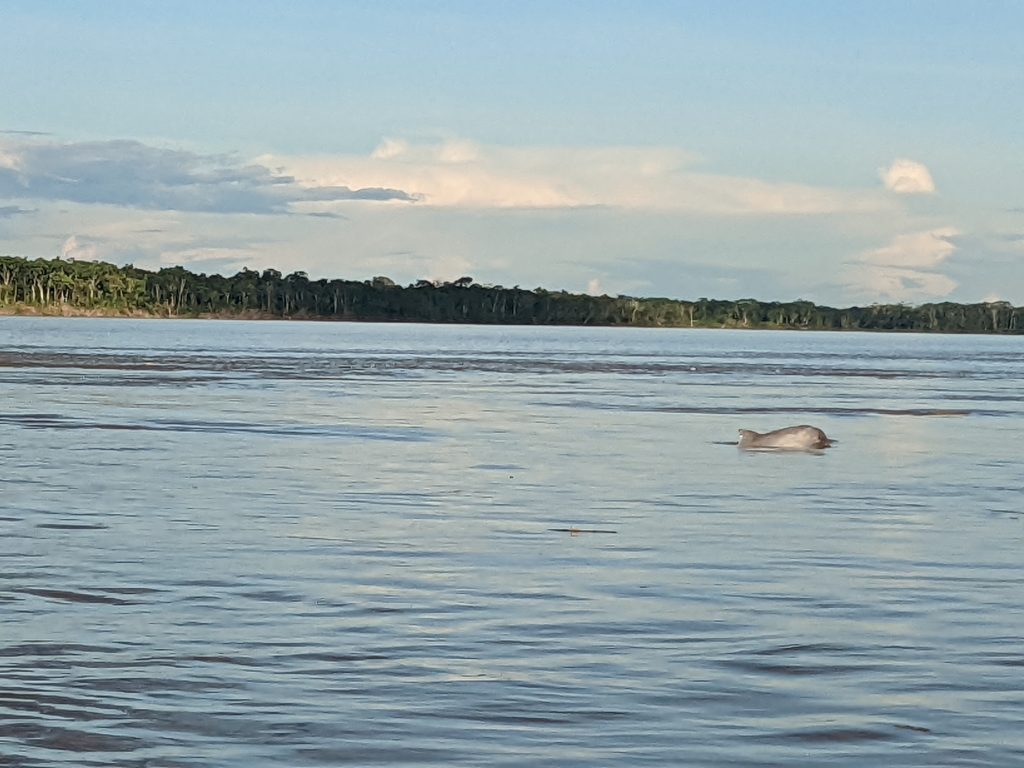
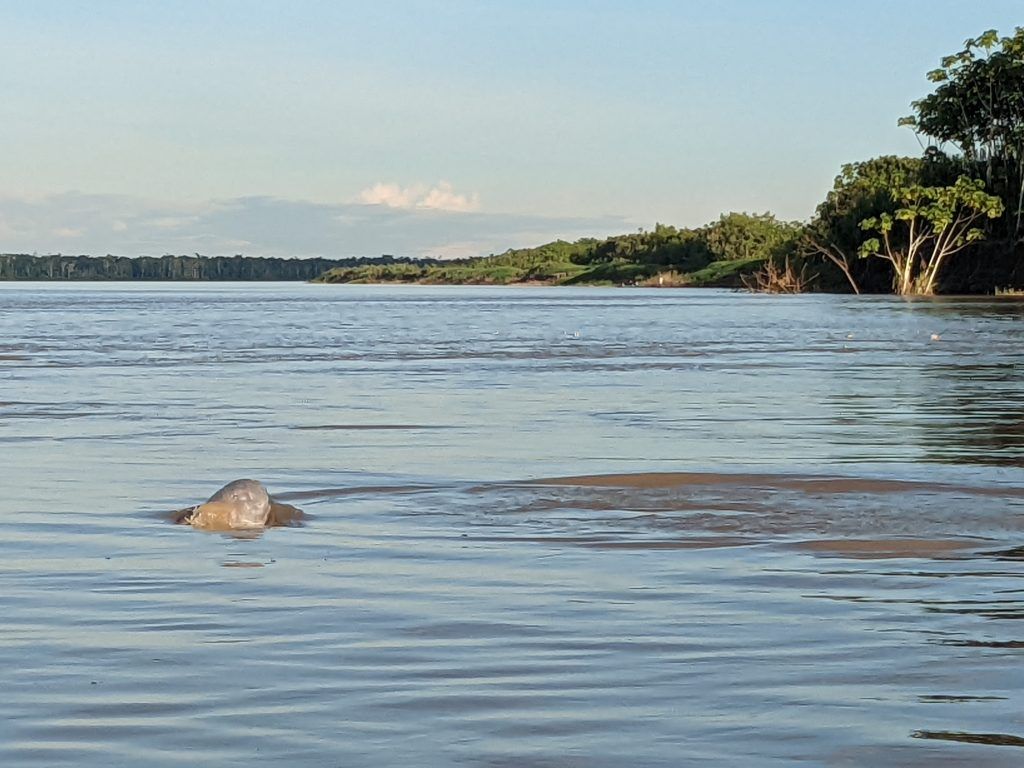
I had a chance to go swimming in the Amazon River near where some dolphins were surfacing.
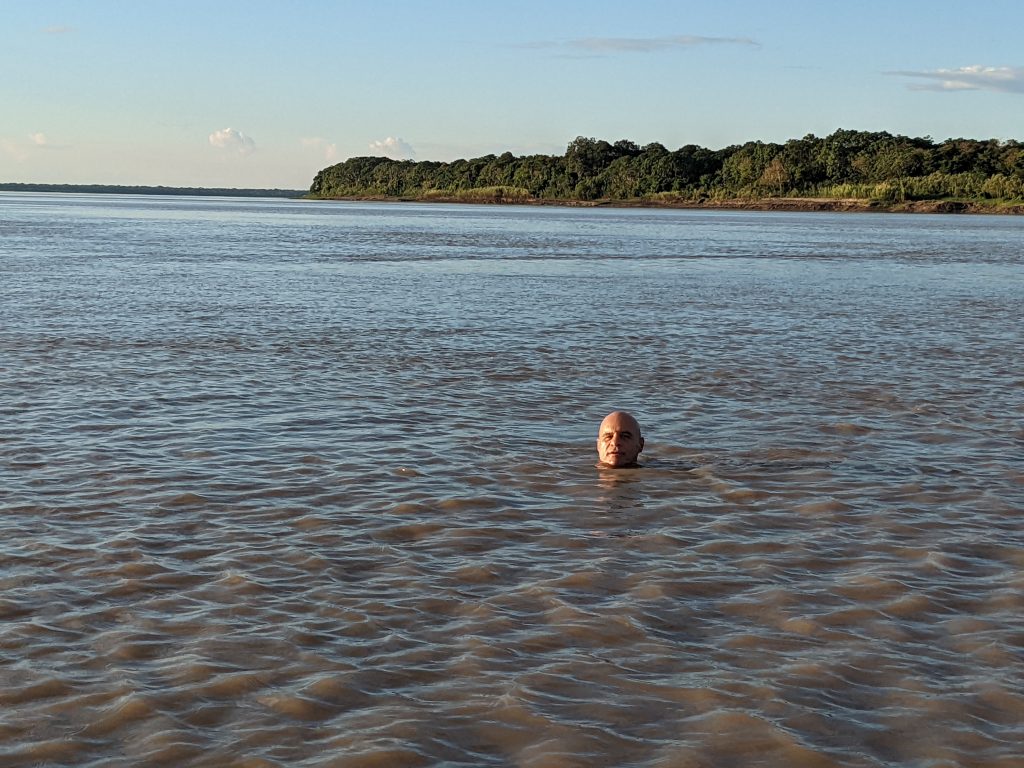
You can see some surfacing near the end of this short video. They were only about 30 meters away, but they looked a lot farther away on the GoPro I was using.
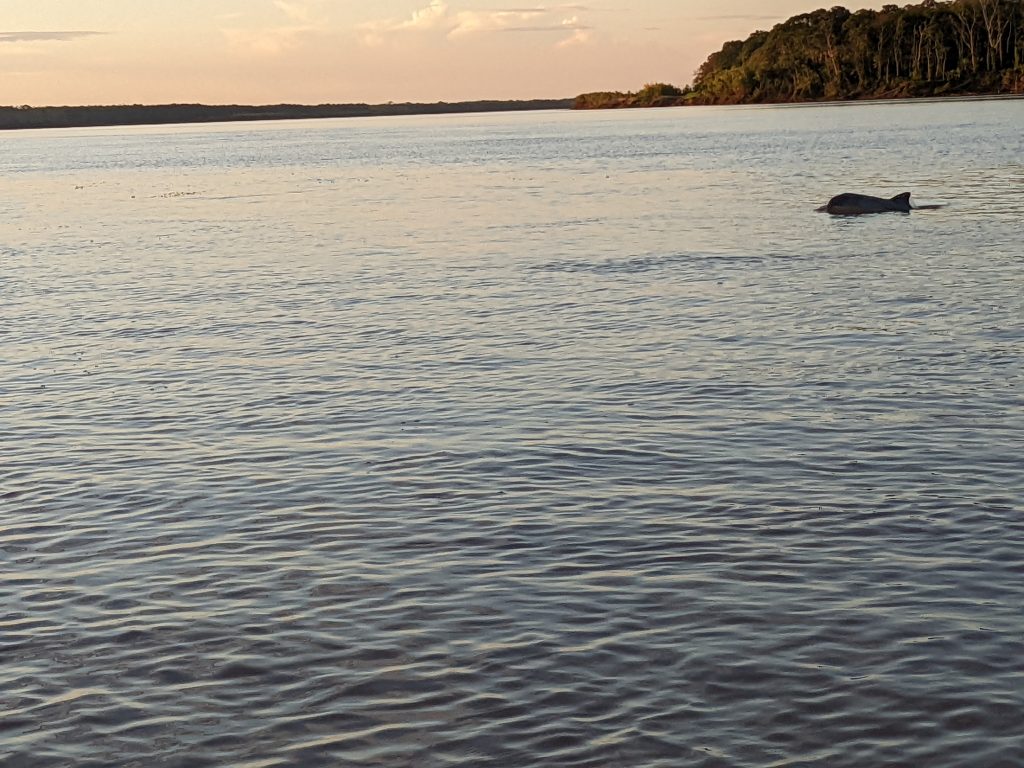
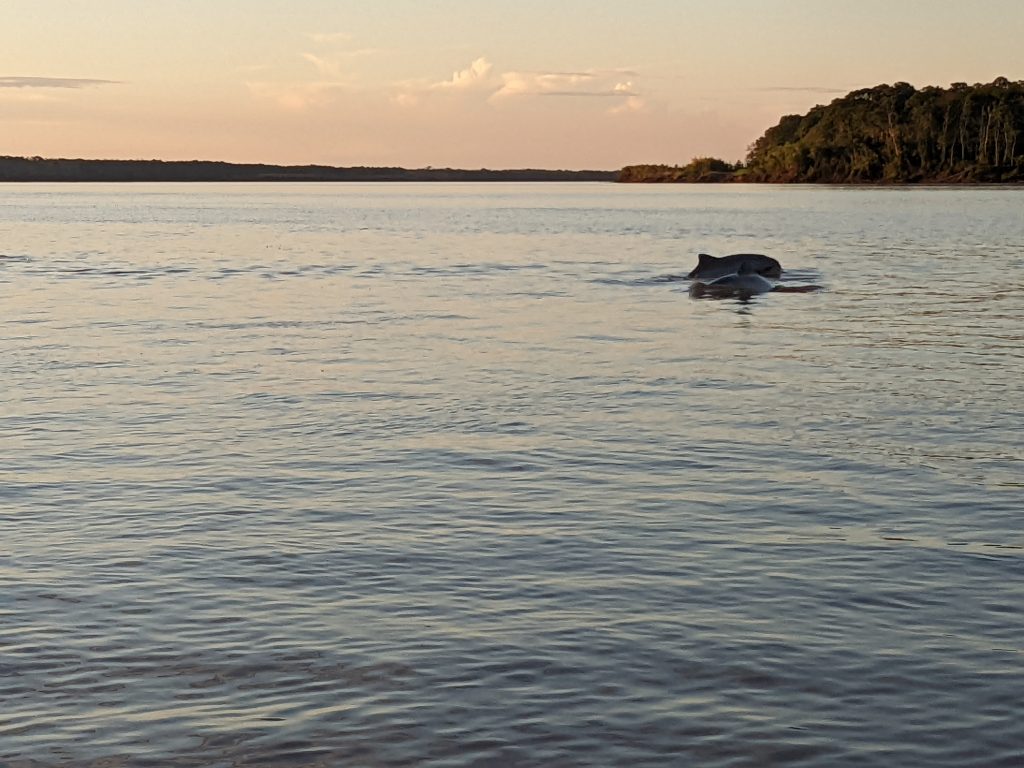
Daytime Exploring on the Water
We did one day hike and a number of boat cruises on the smaller waterways near the lodge.
One afternoon we saw over 10 sloths in the trees. Most were too hidden or far away to get decent pictures. But I was able to get a few below.
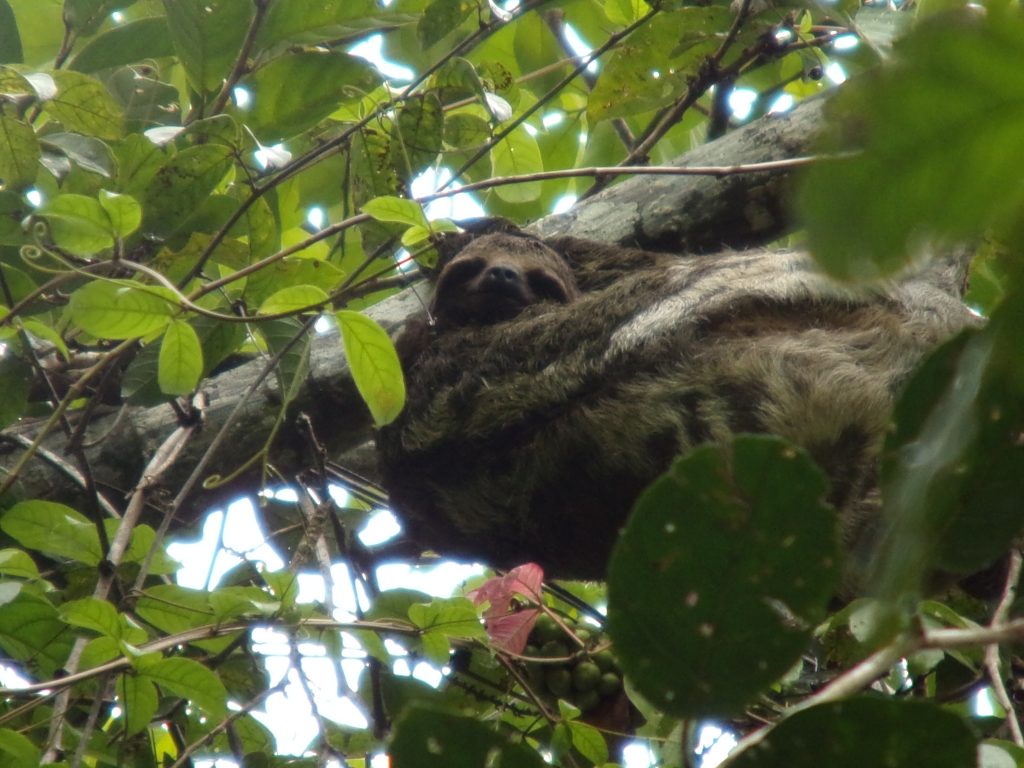
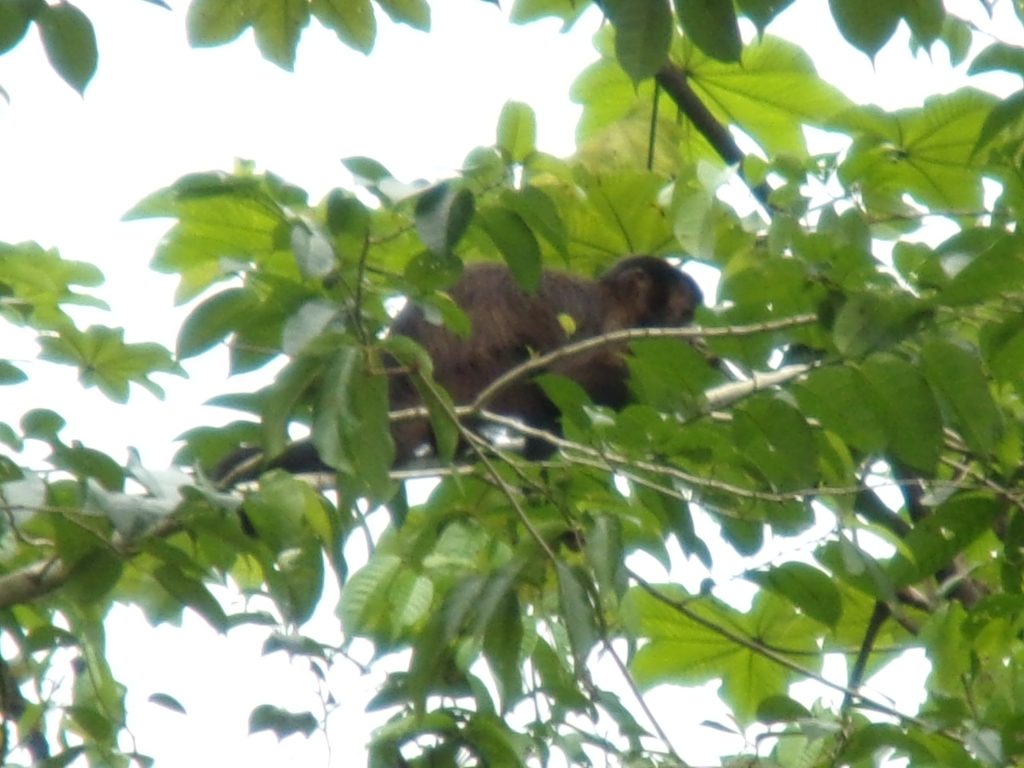
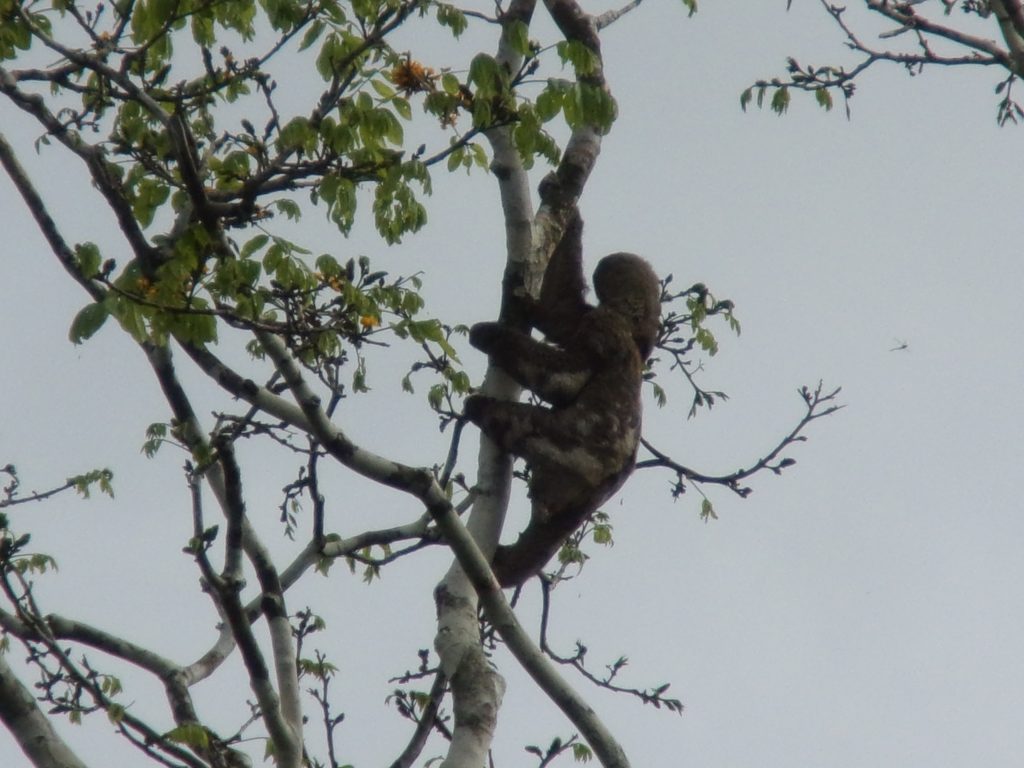
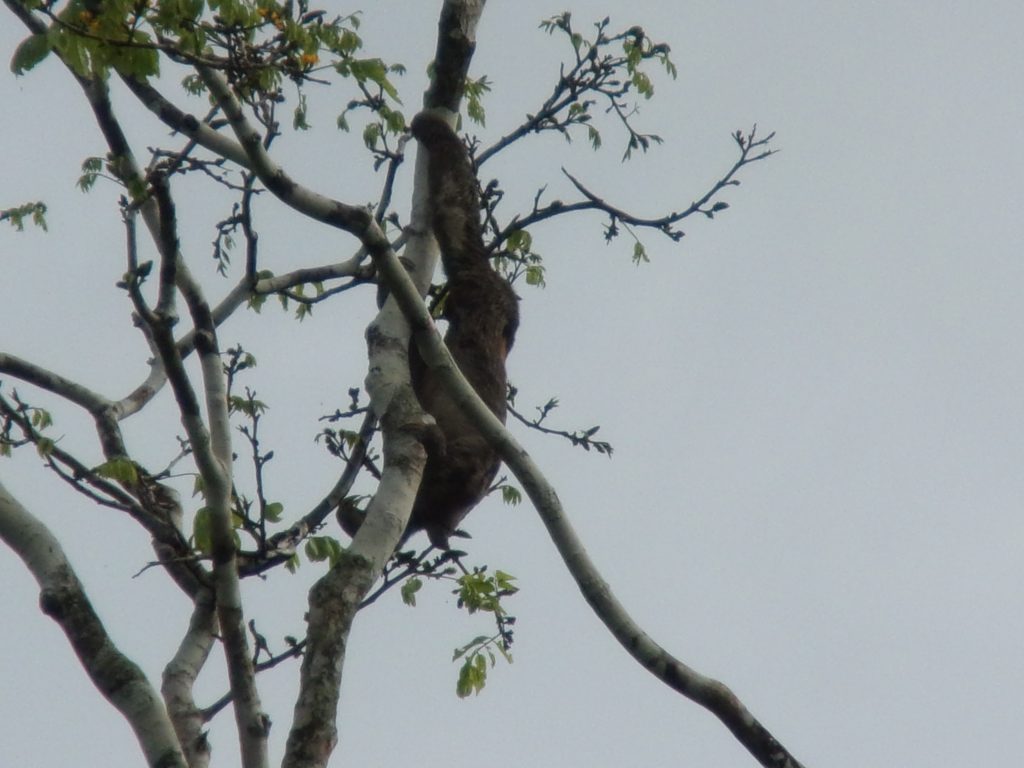
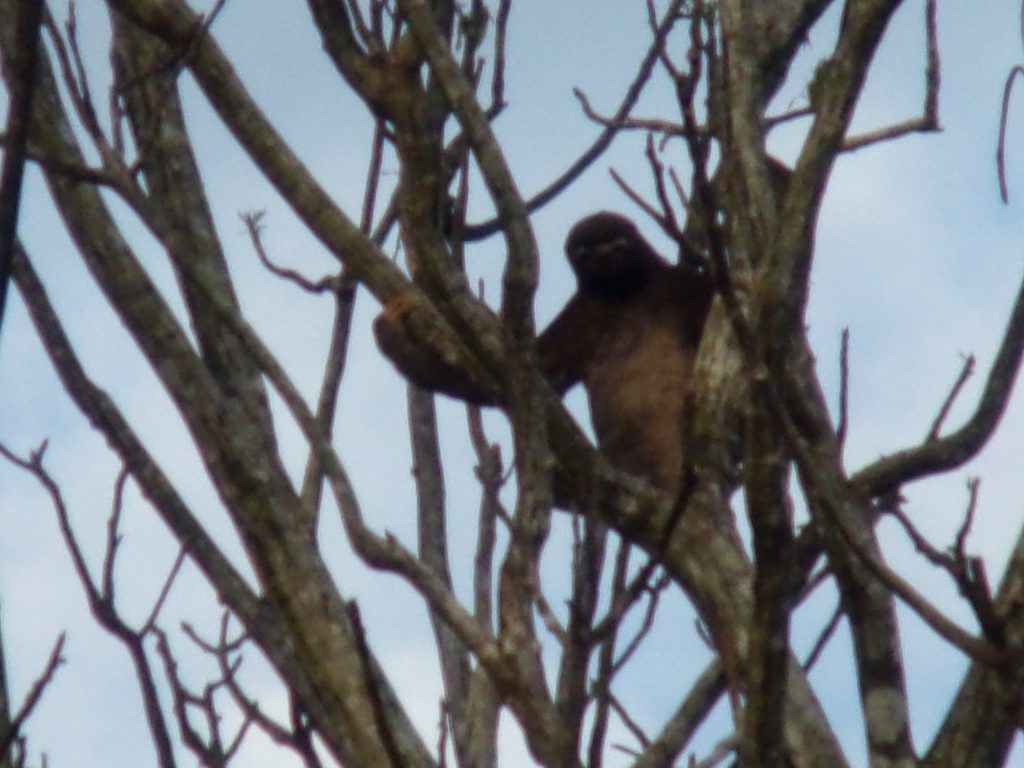
On our afternoon hike my guide and I saw this baby sloth about 3 meters up in a tree.
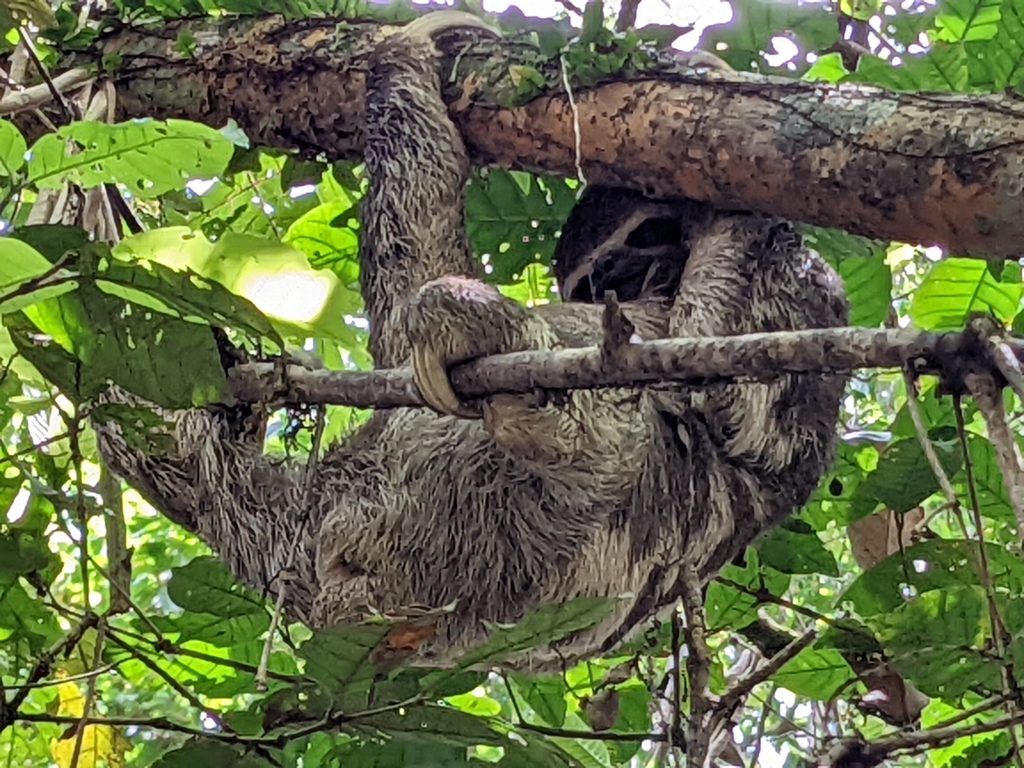
A rare sightening of two baby caymens in the middle of day.
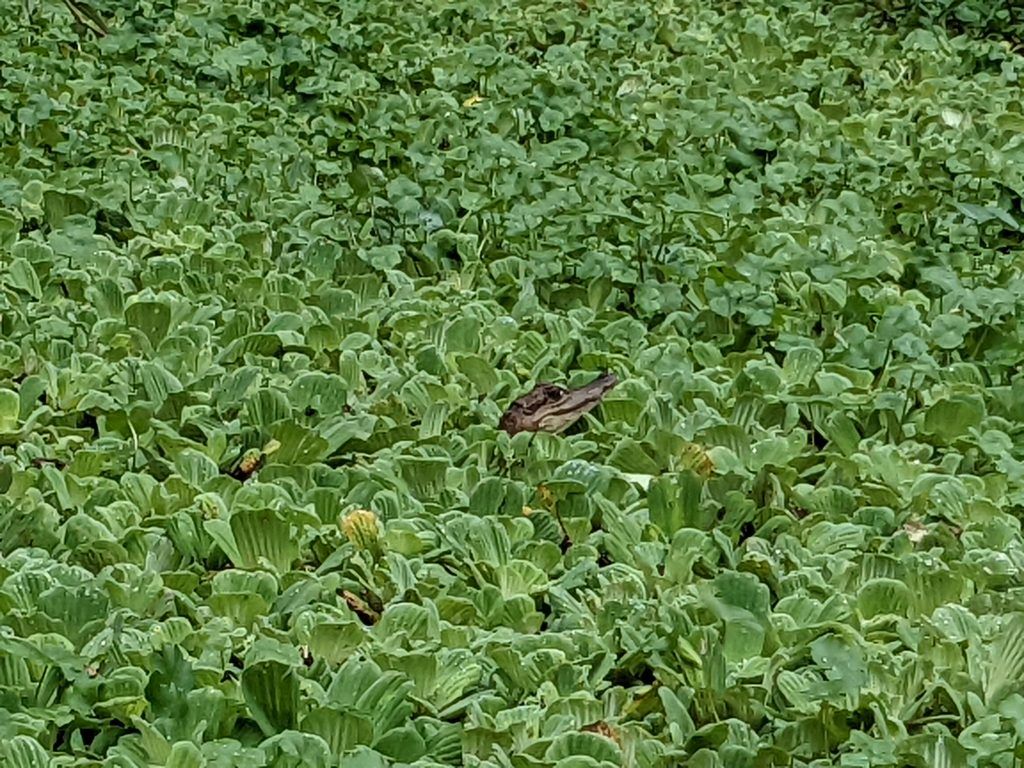
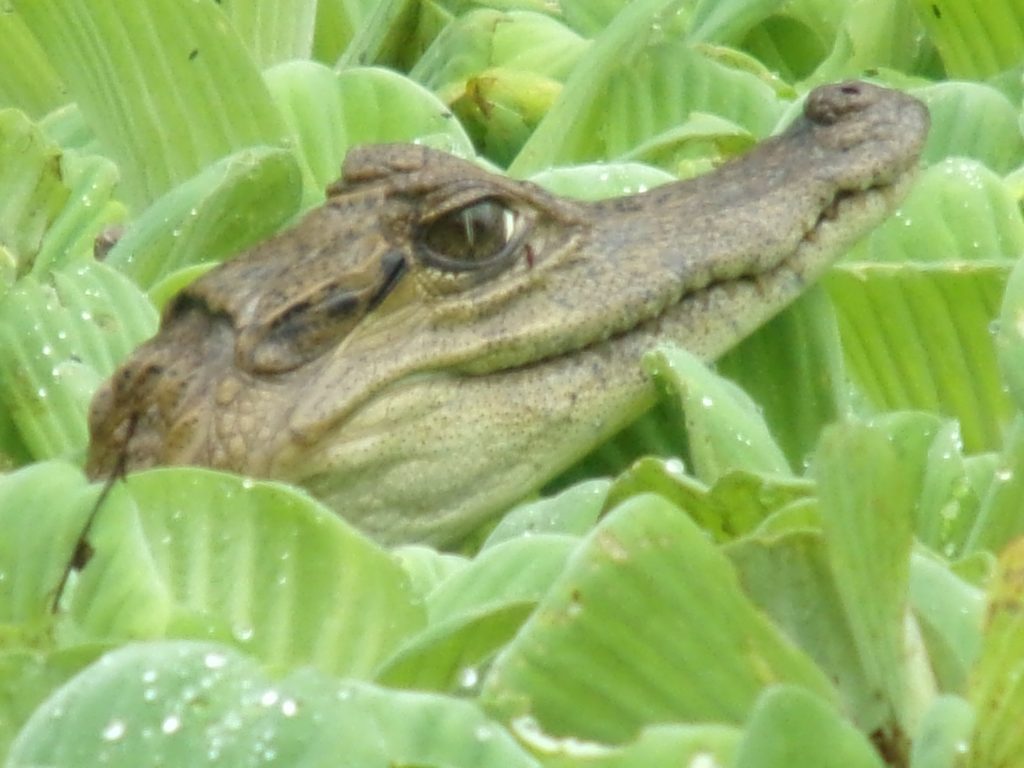
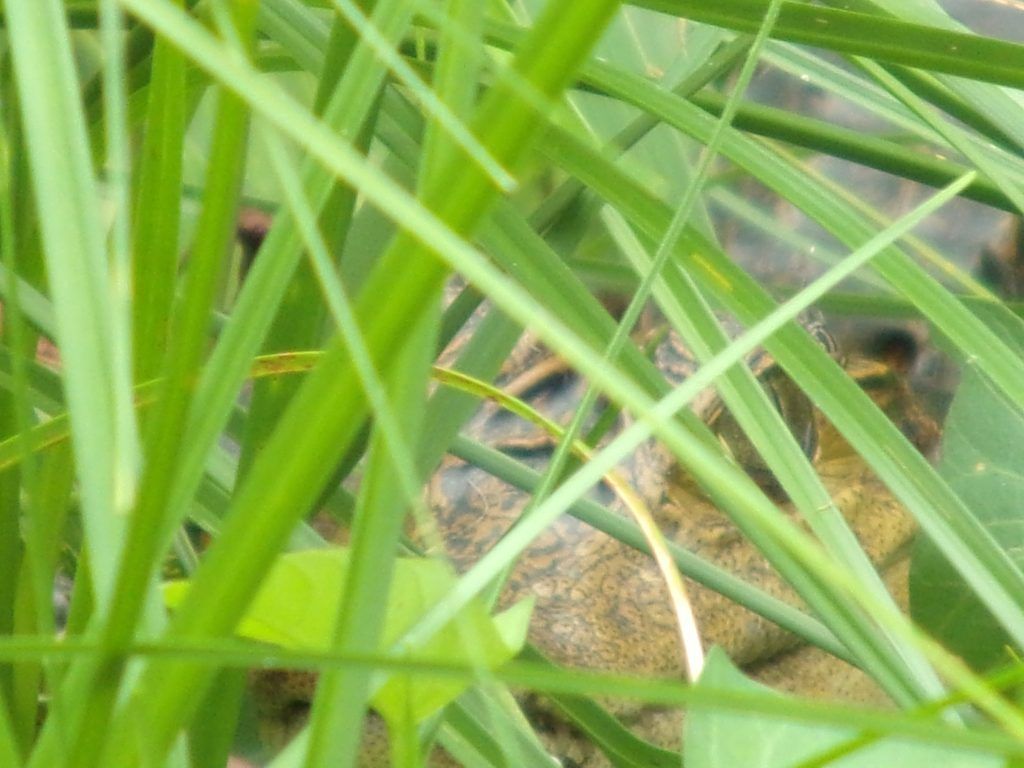
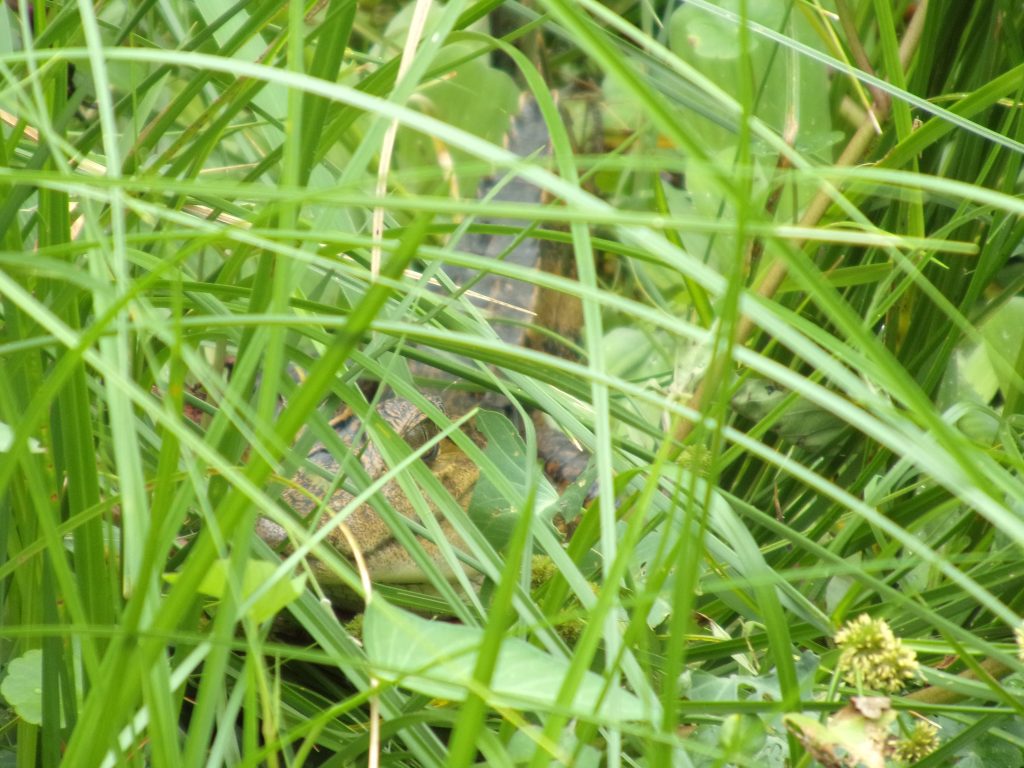
I haven’t done any fishing since I was a kid. But my guide gave me a chance to go fishing for piranha. I first caught a baby that we released.
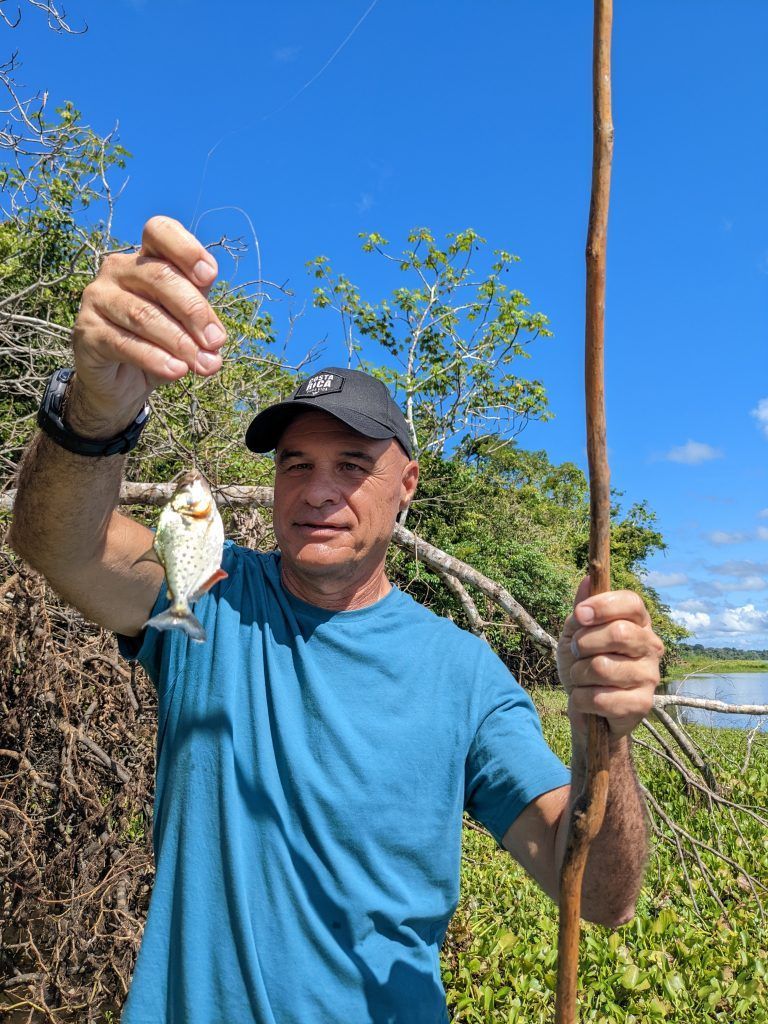
Then I caught a full sized one with a pretty scary set of teeth.
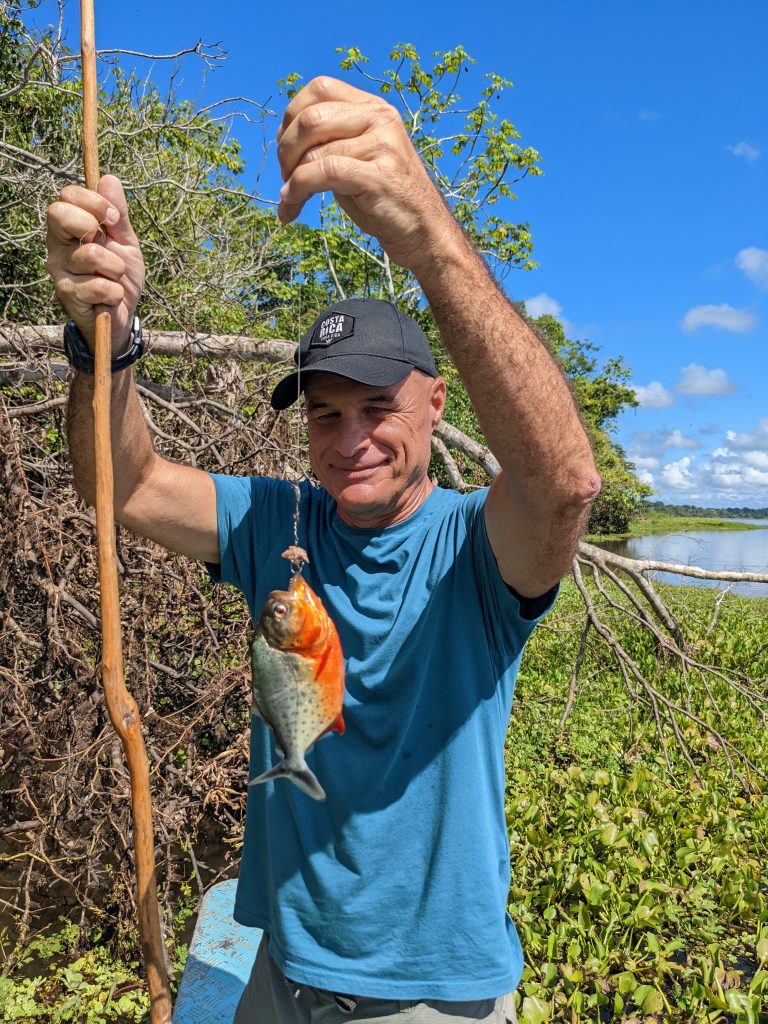
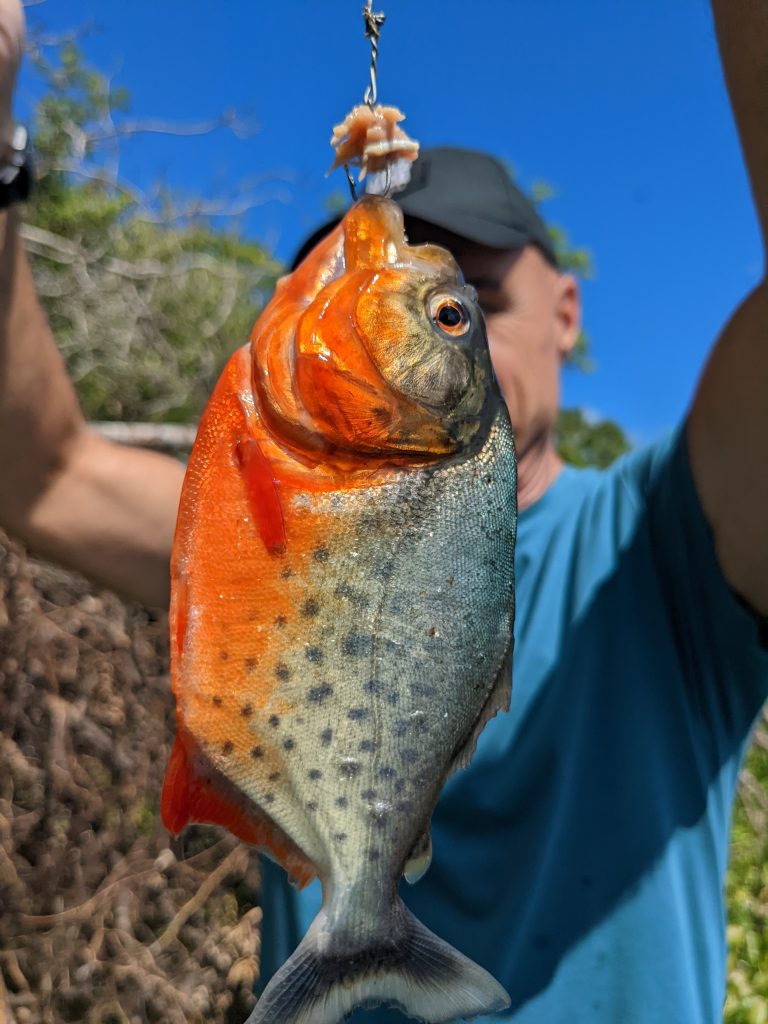
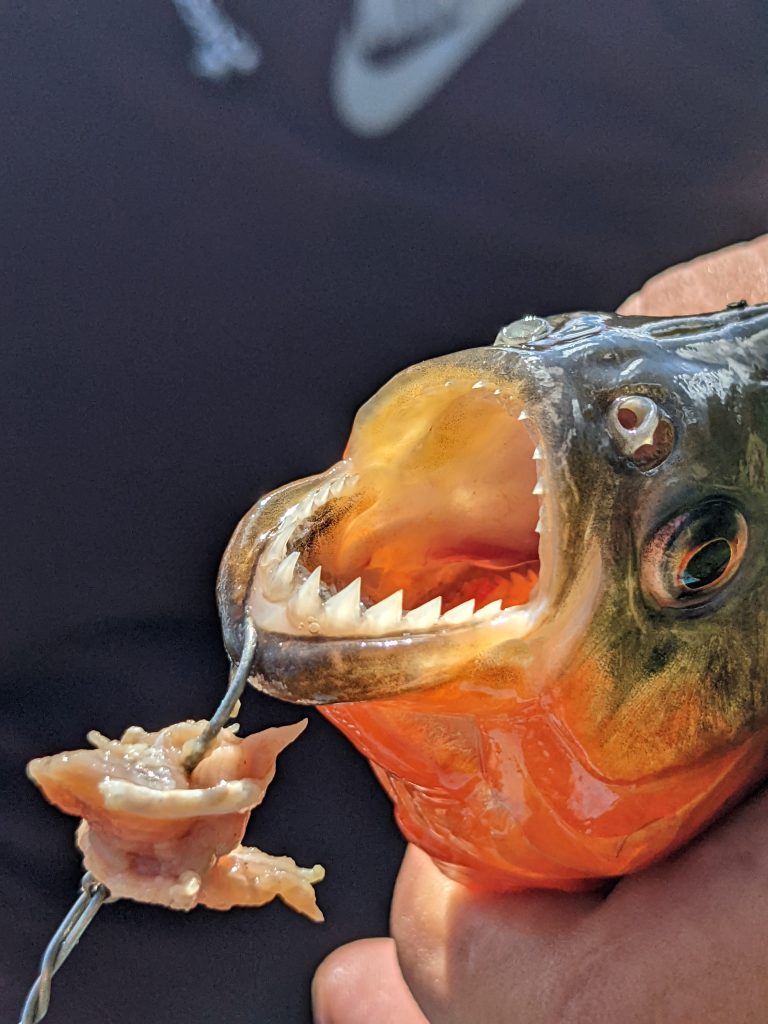
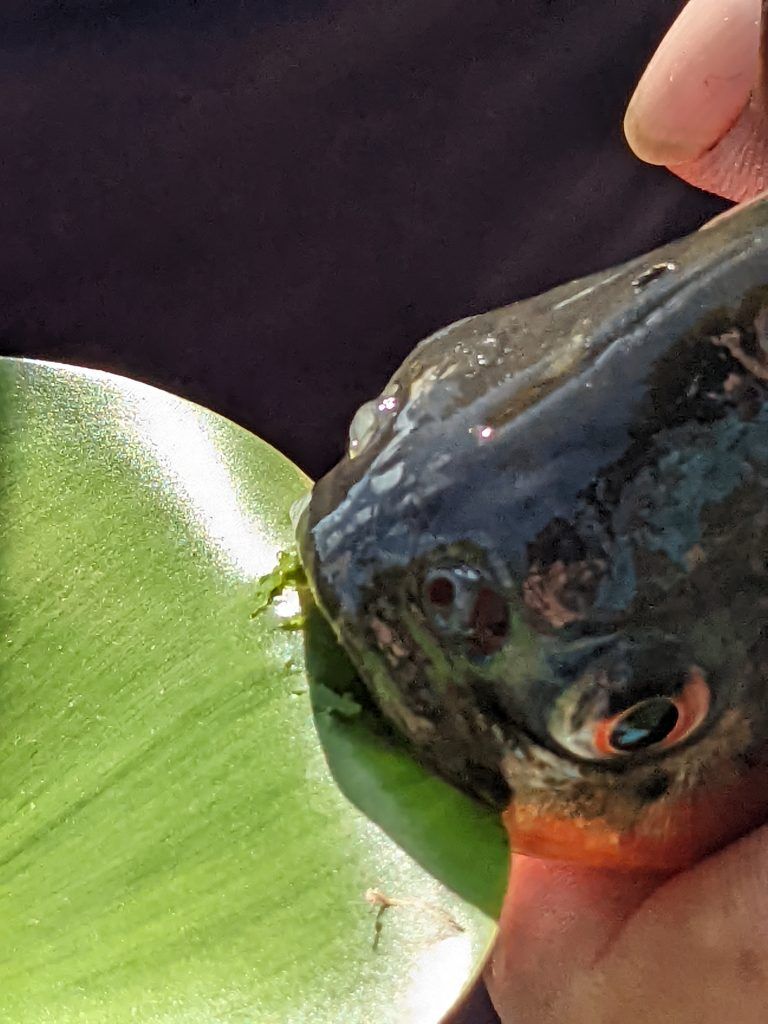
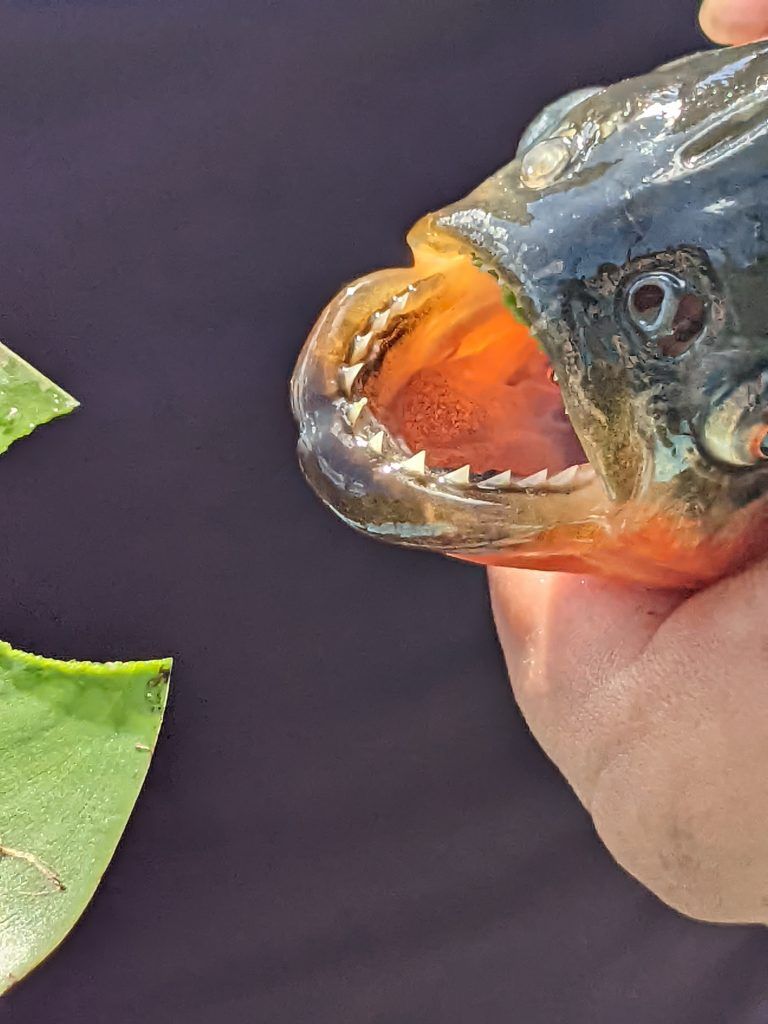
A couple of hours later the chef served up the larger one I caught and two more smaller ones my guide caught. They were sauteed in garlic and butter and tasted a lot better than they looked!
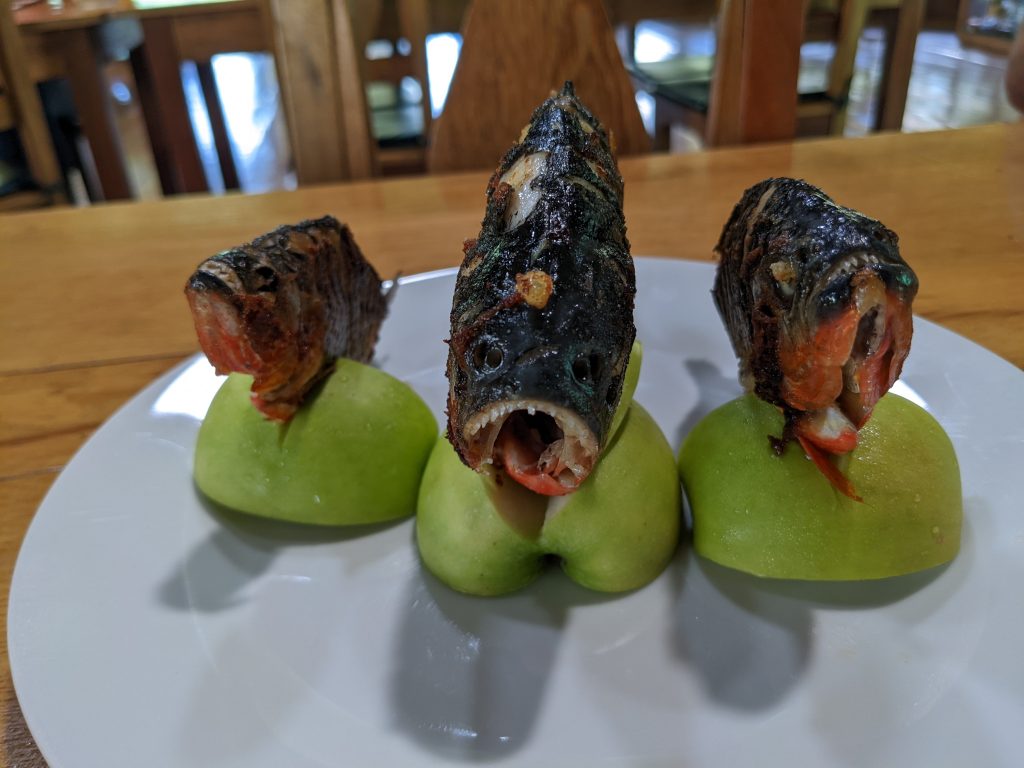
I also tried some traditional spear fishing. I came close a couple of times on some smaller fish, but it was really difficult.
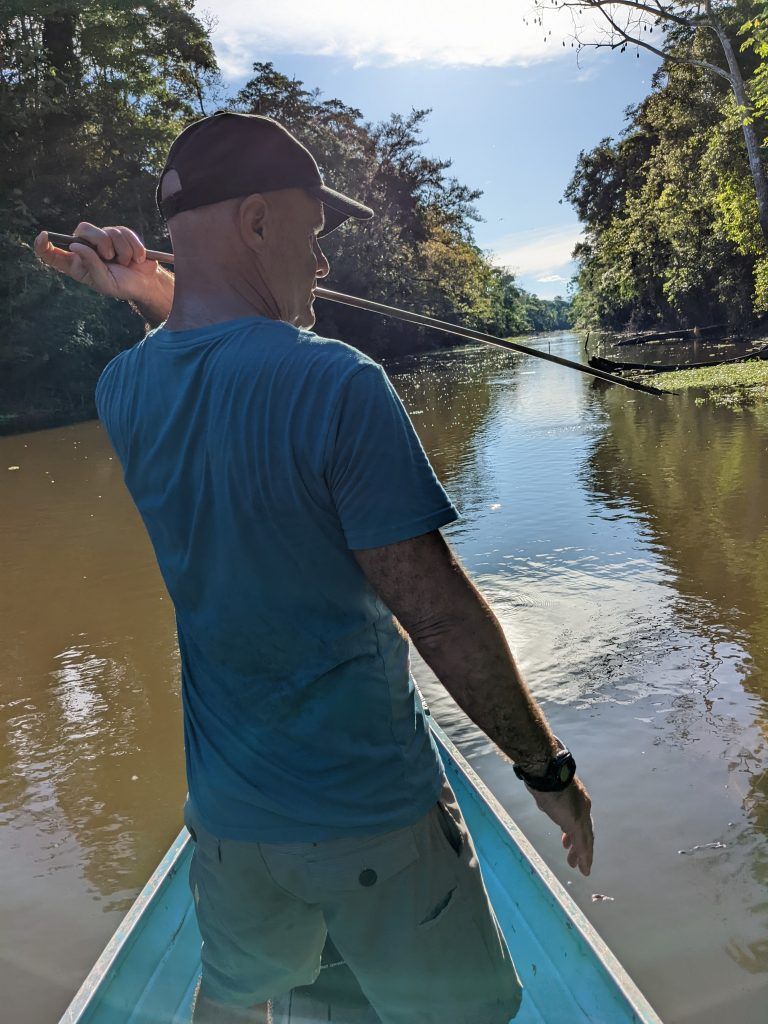
While we were hiking, we kept hearing howler monkees. We finally saw four of them high up in the trees above us.
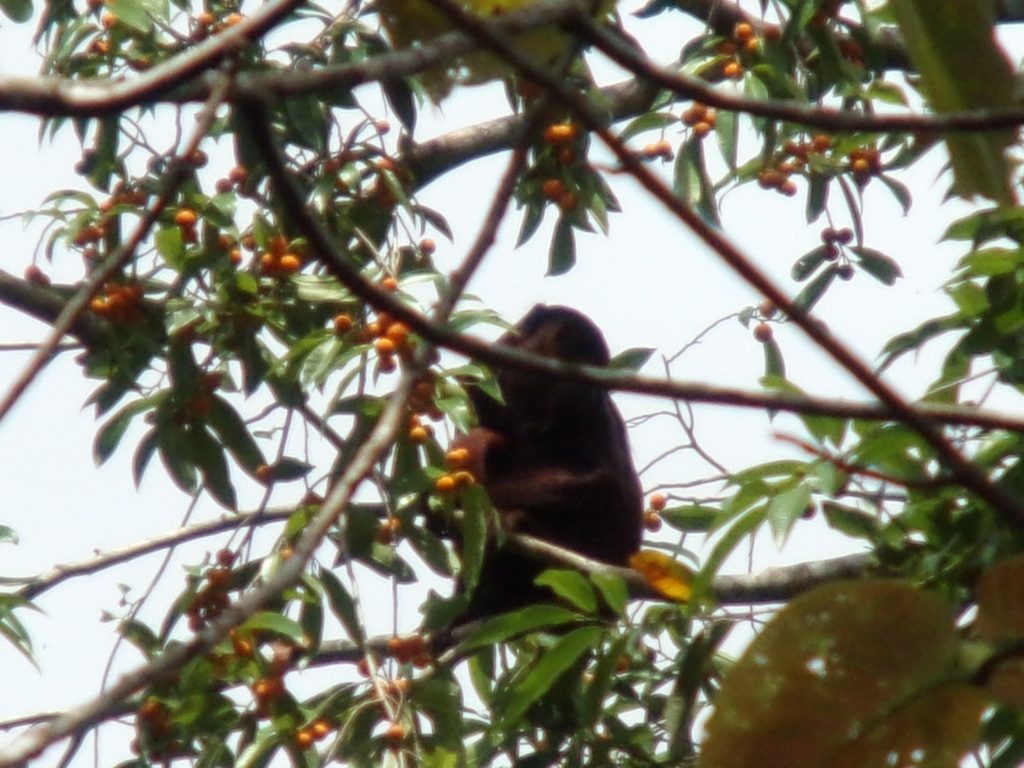
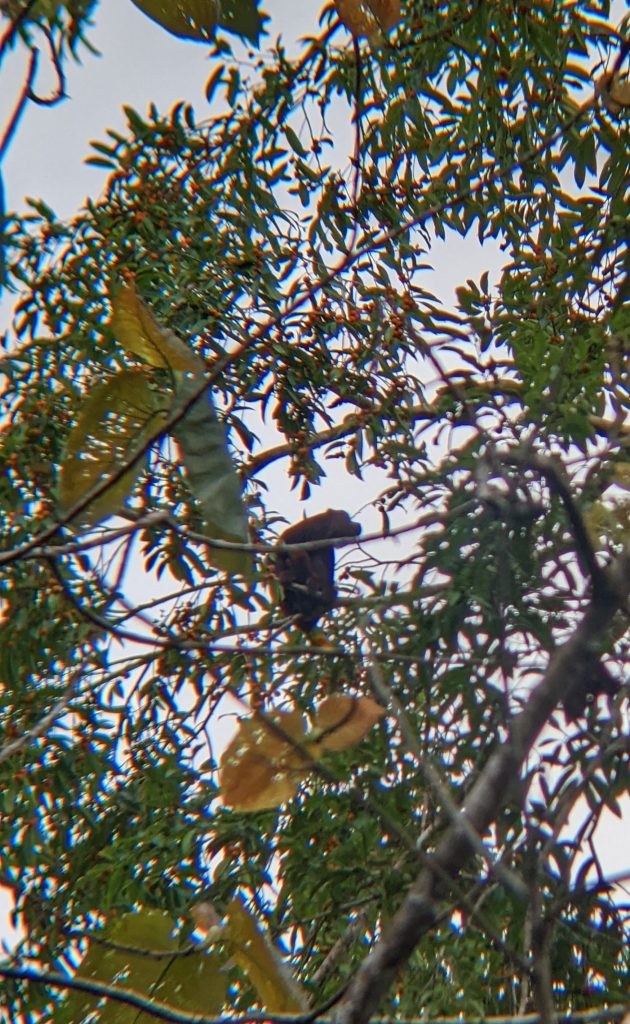
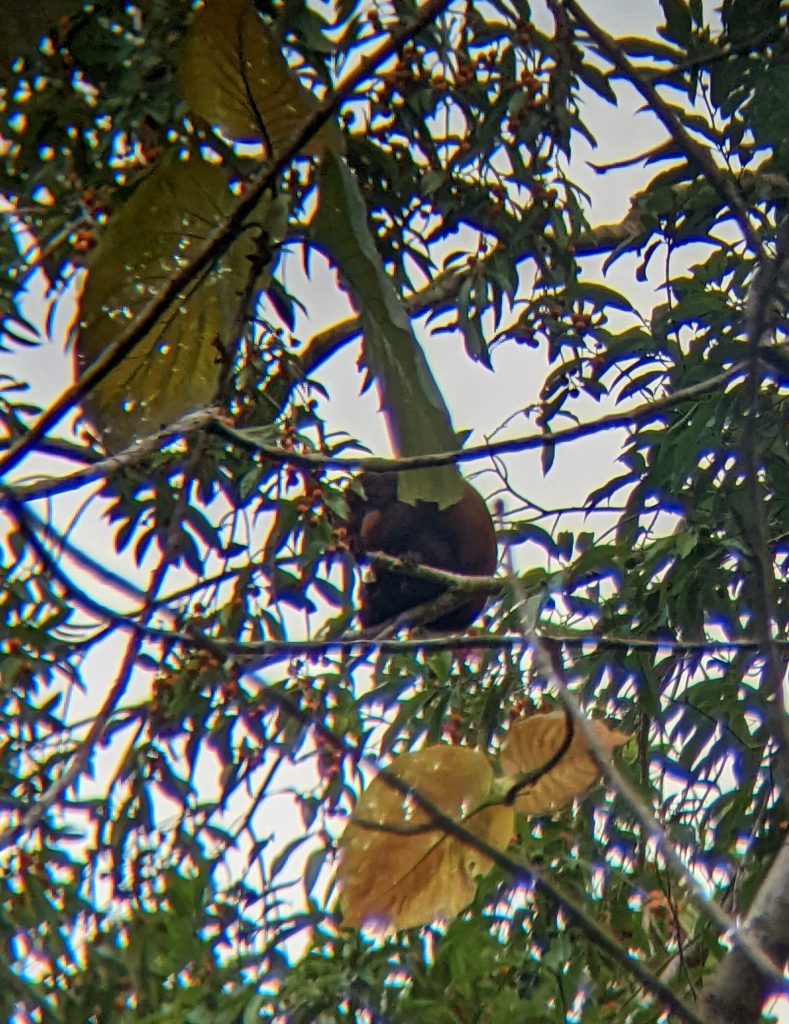
And then we saw a troop of about 20 squirrel monkees descending from the trees and walking in the forest about 50 meters away.
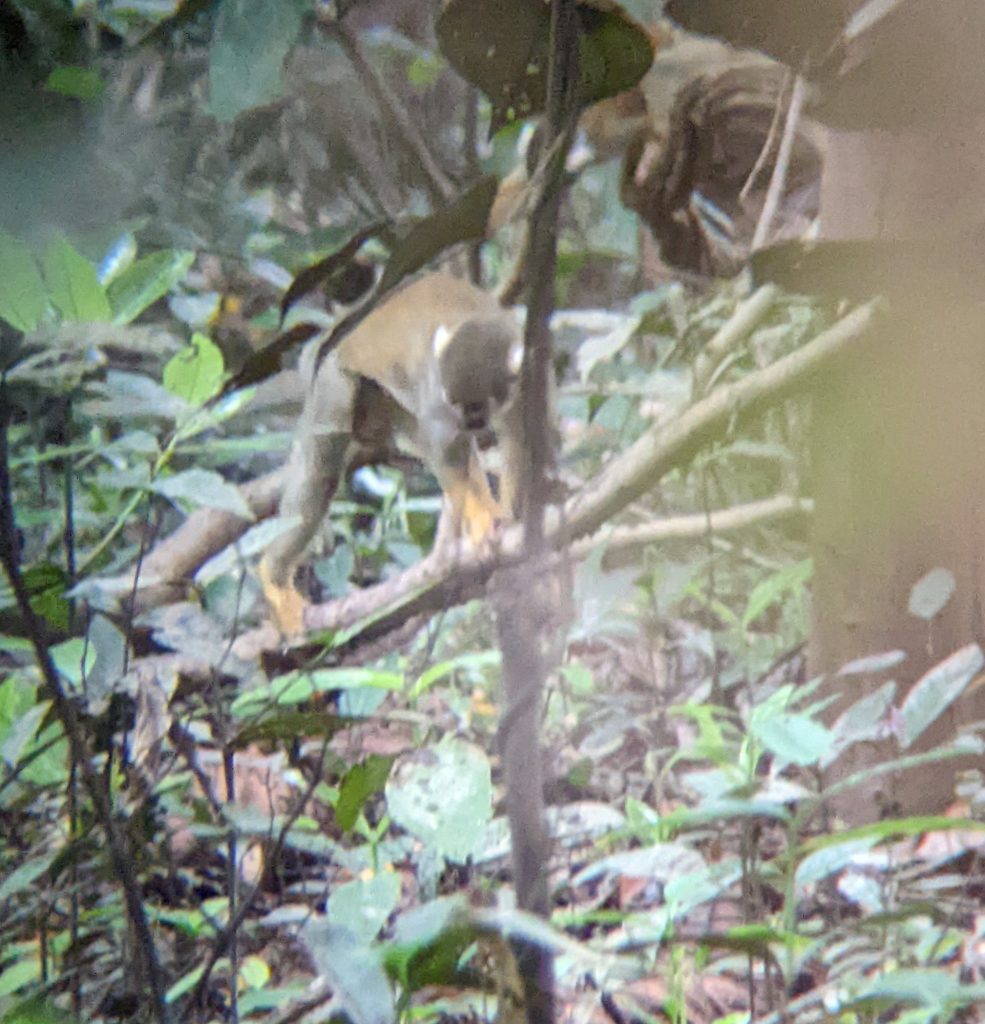
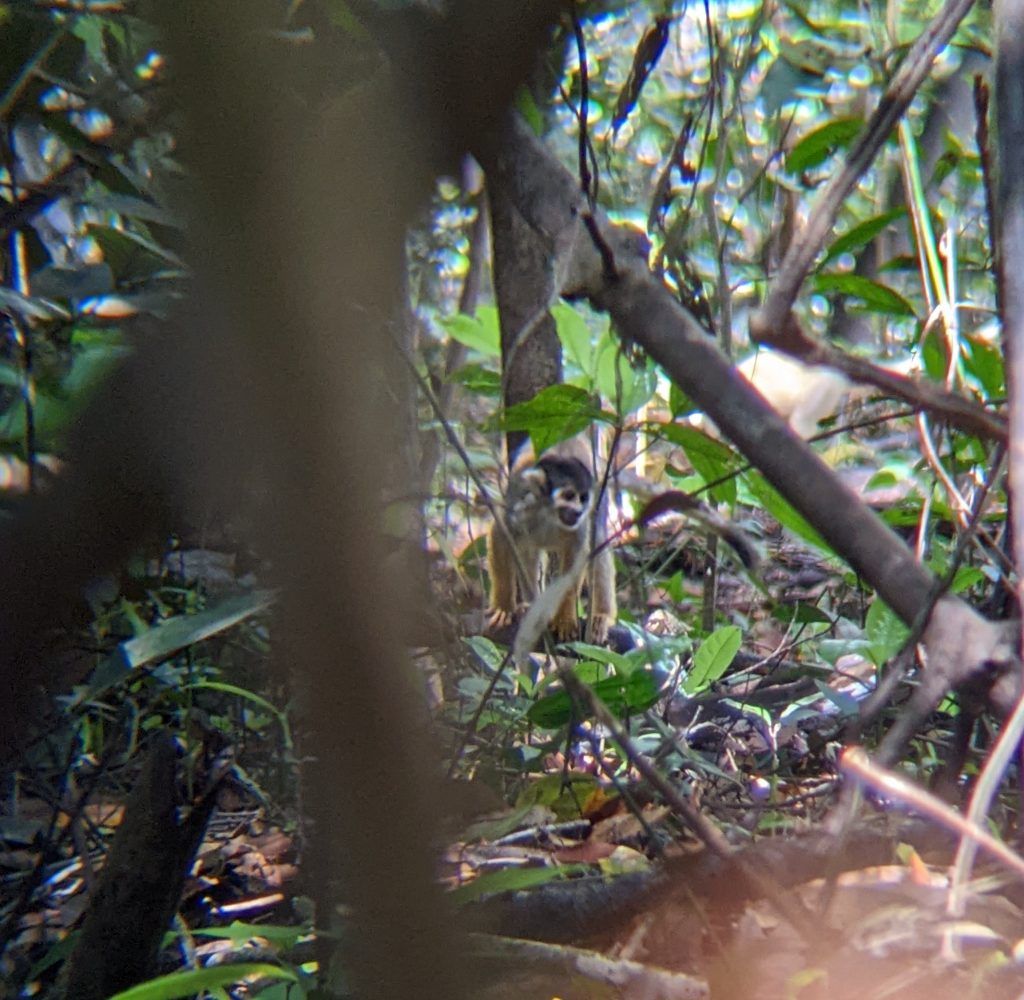
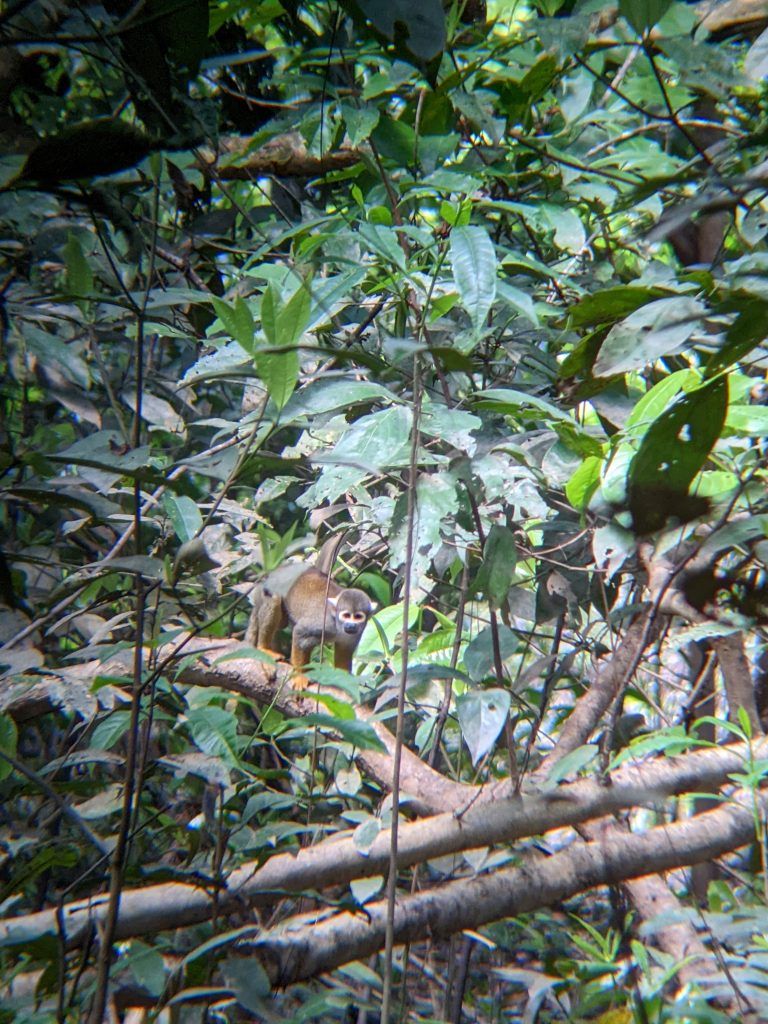
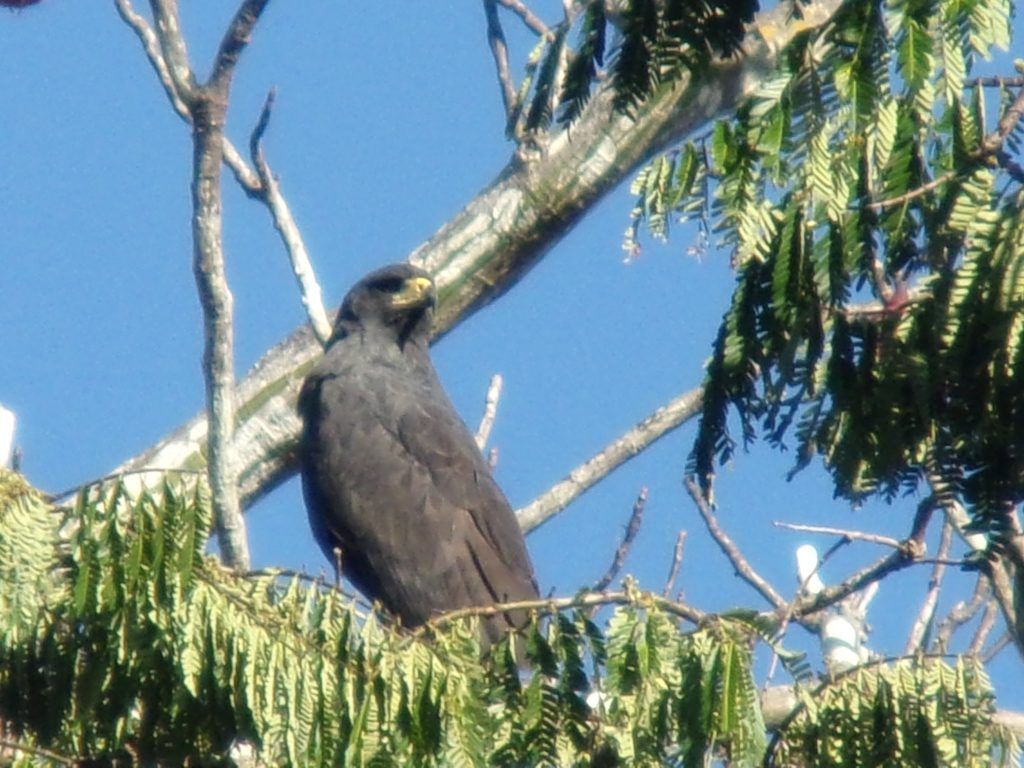
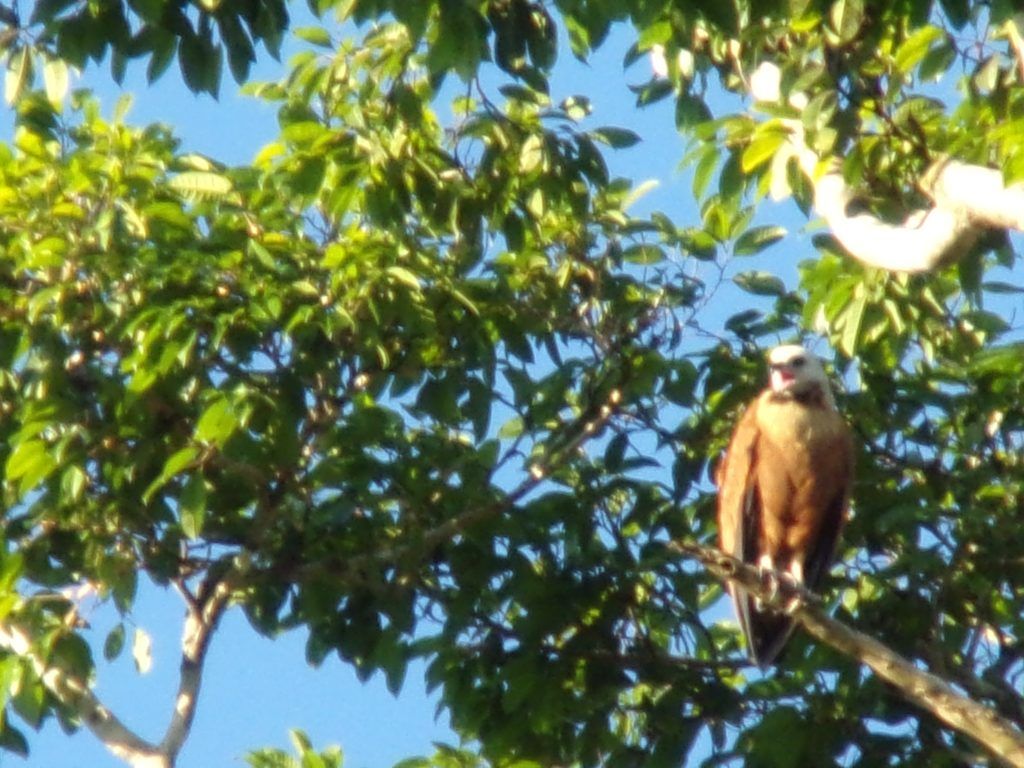
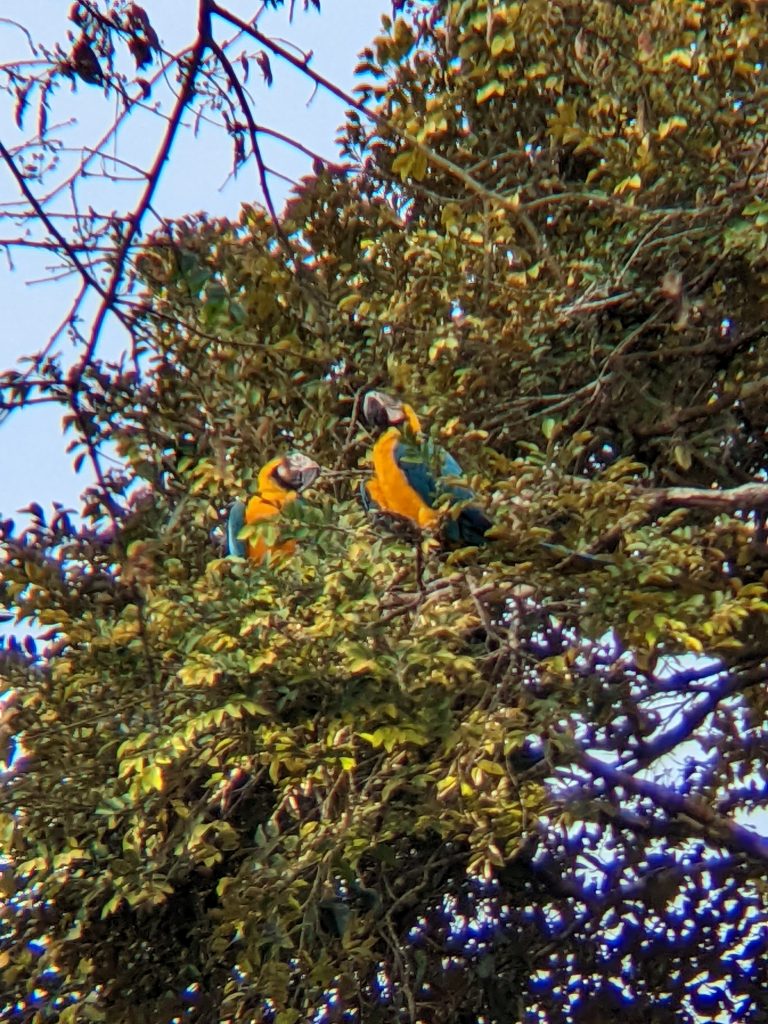
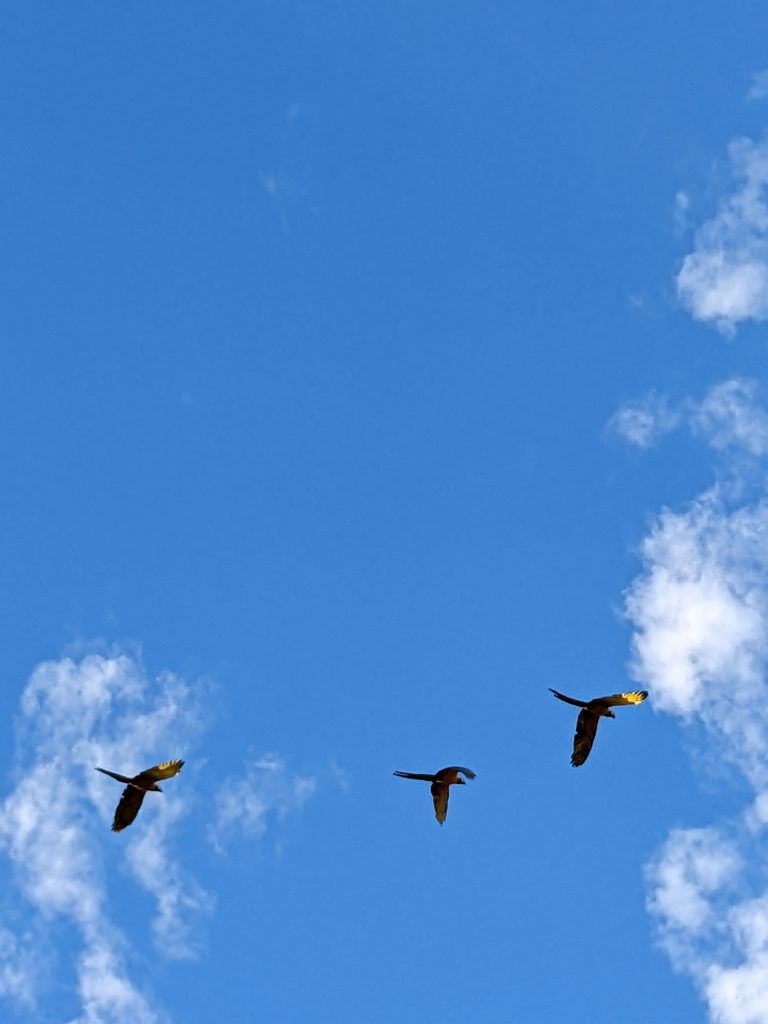
One on of our boat rides we heard a lot of birds in one place. We turned a corner and saw a feeding frenzy. One or two birds would take turns hitting a flying ant nest and the rest would buzz around eating the ants that came flying out. My guide had been doing this for 15 years and had never seen anything like this. He counted at least 7 bird species. The whole thing lasted about 15 mintues. The video and pictures below don’t really capture the full experience.
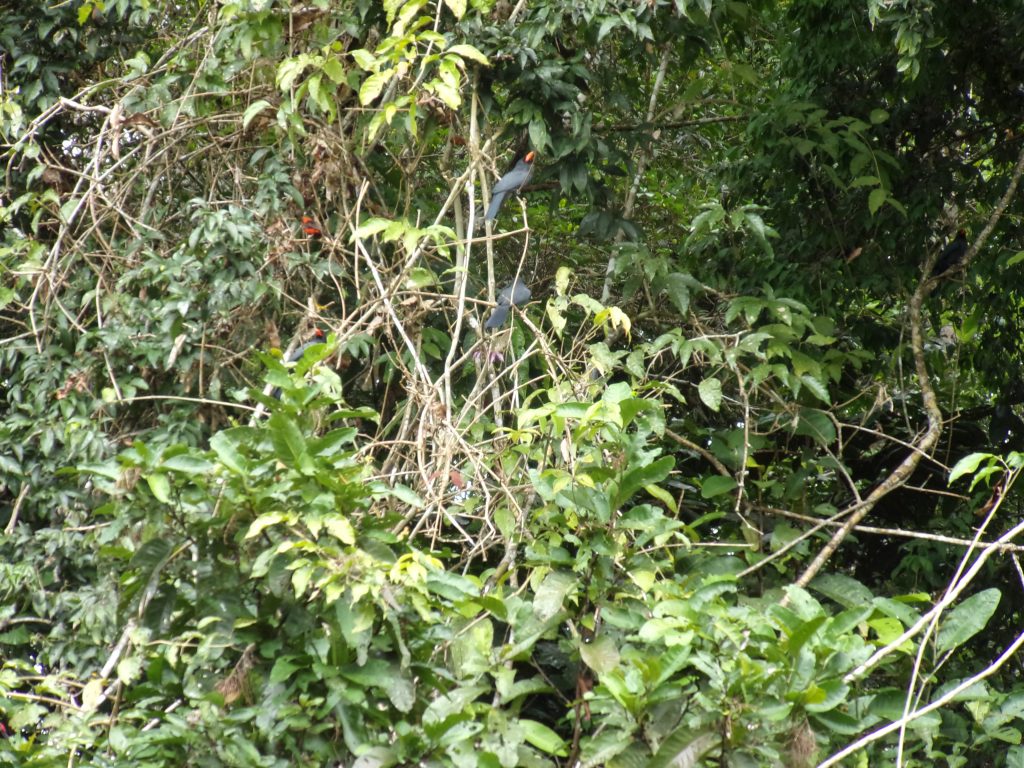
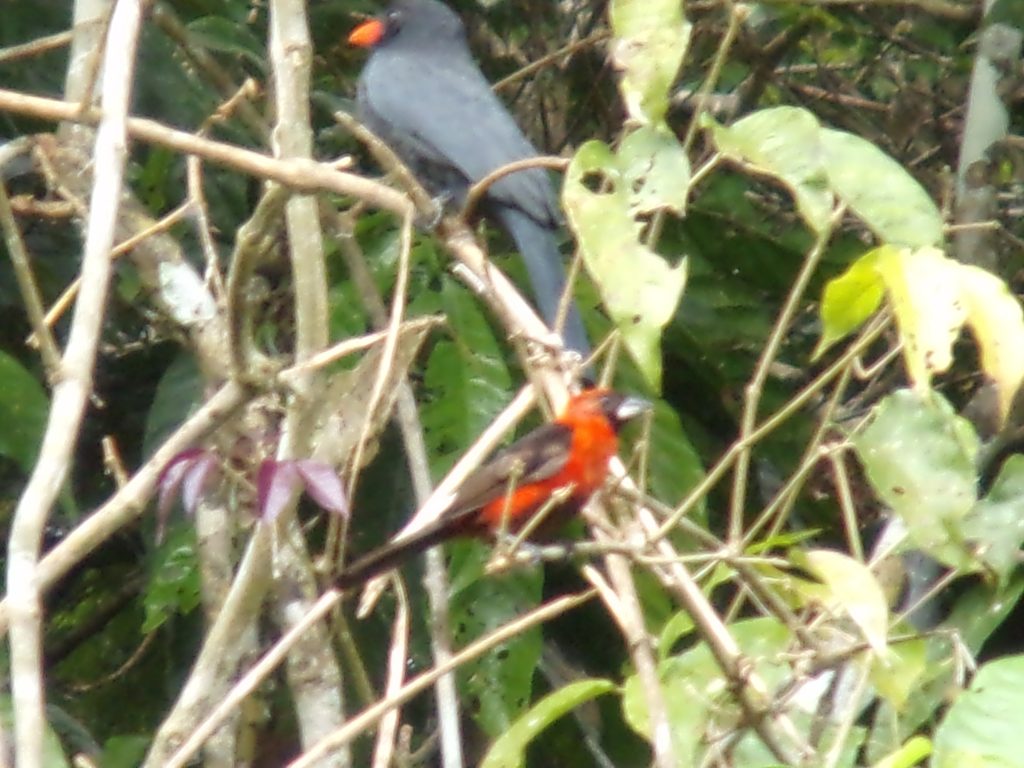
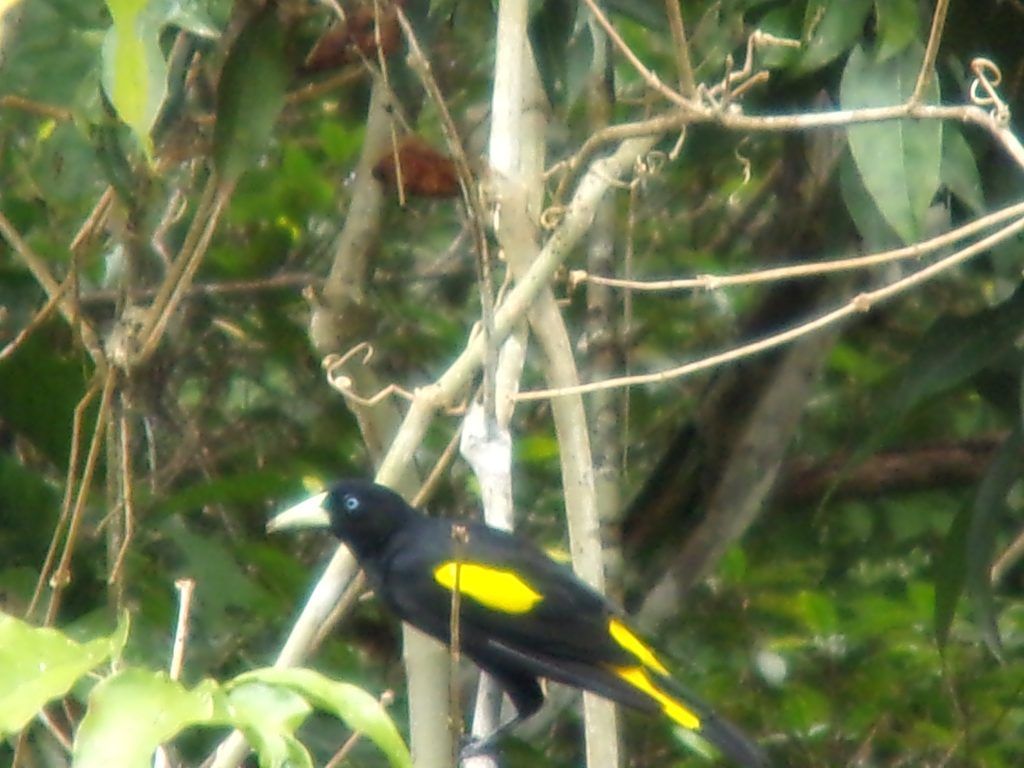
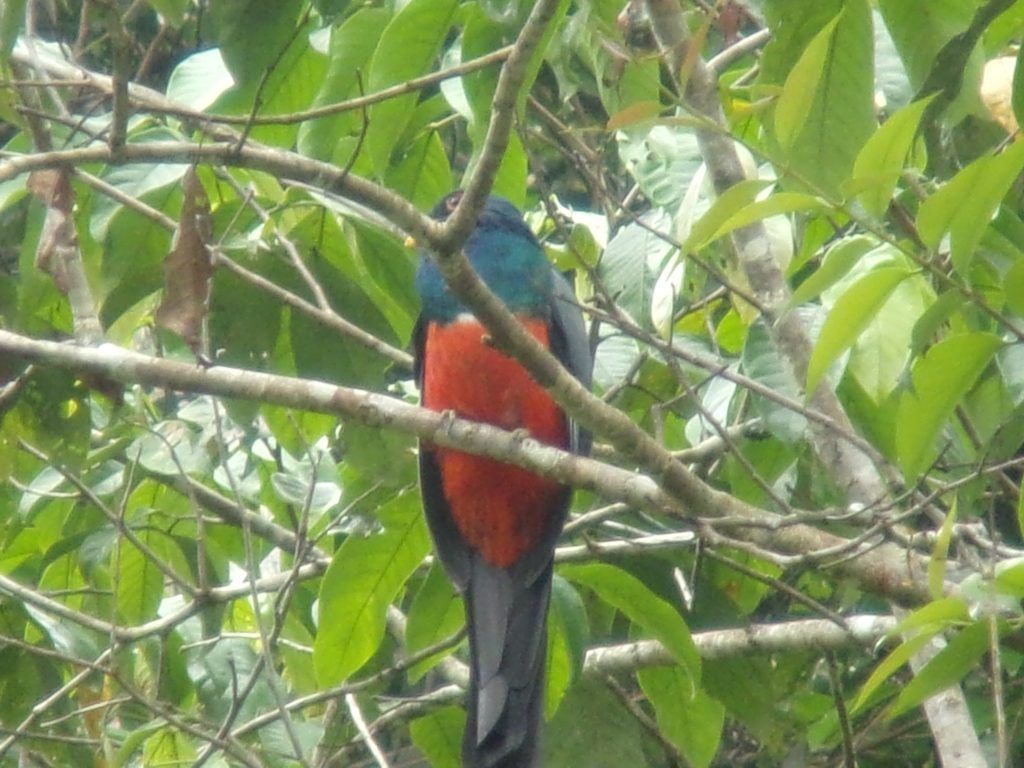
One of the largest trees we saw in the jungle.
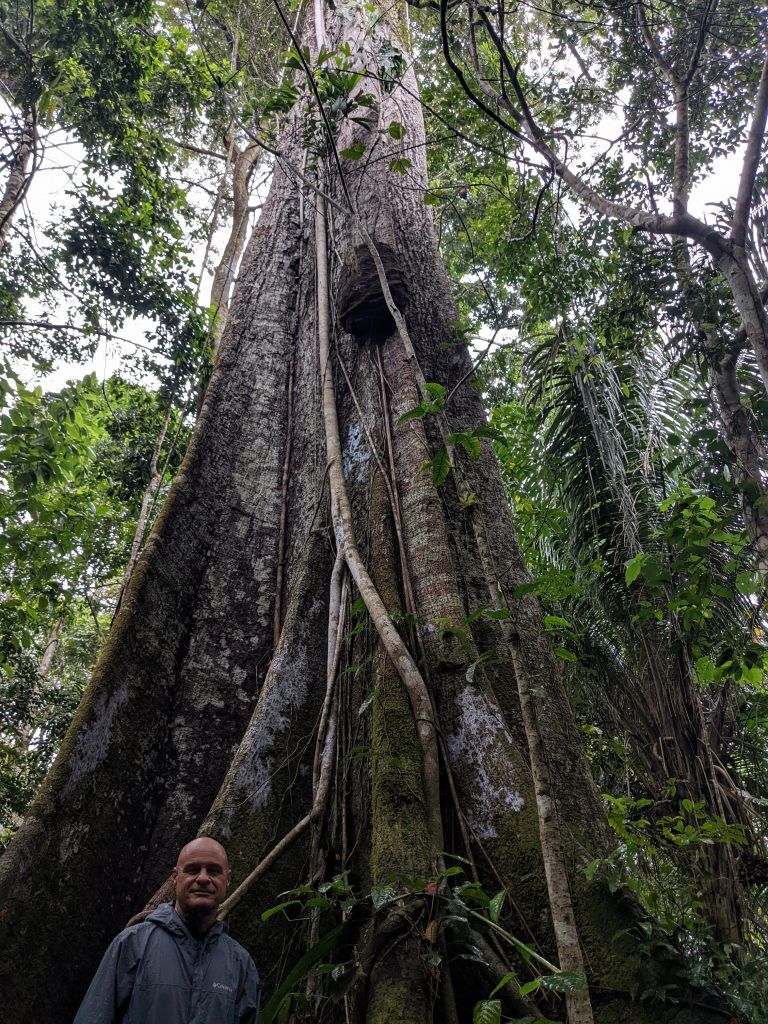
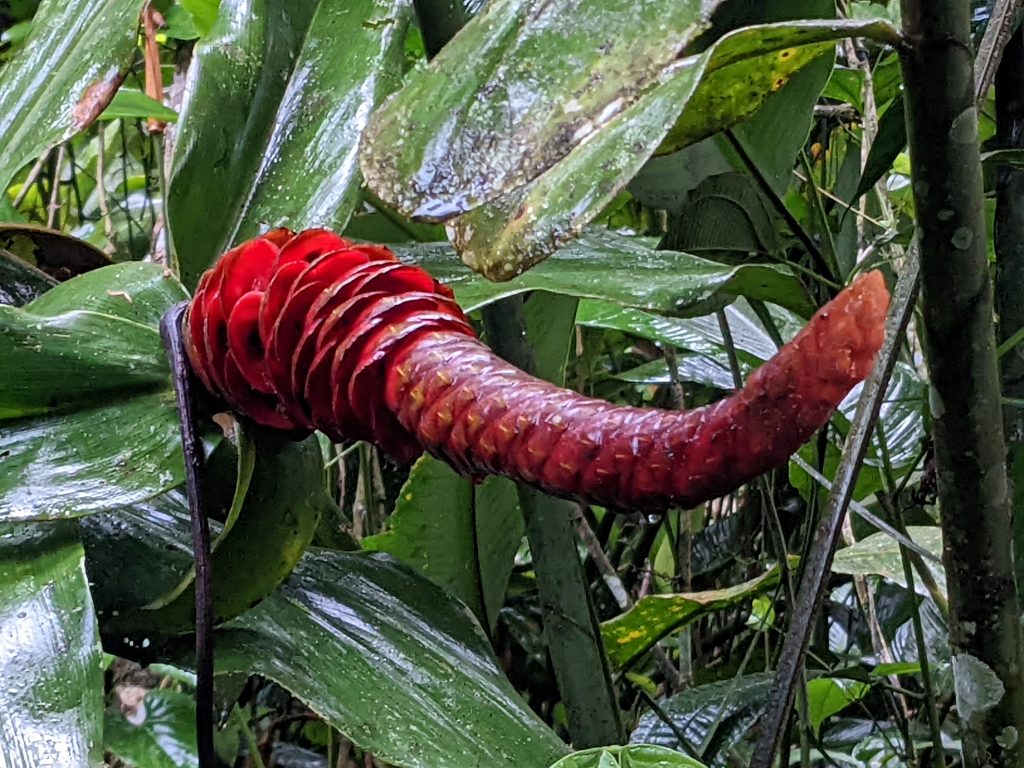
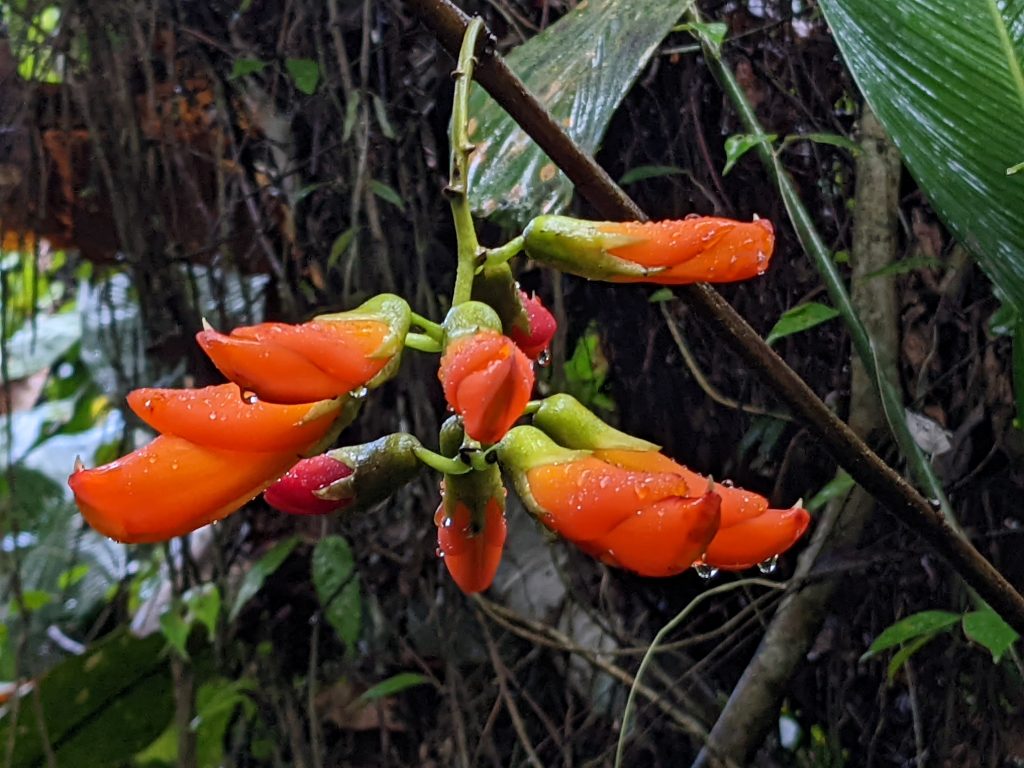
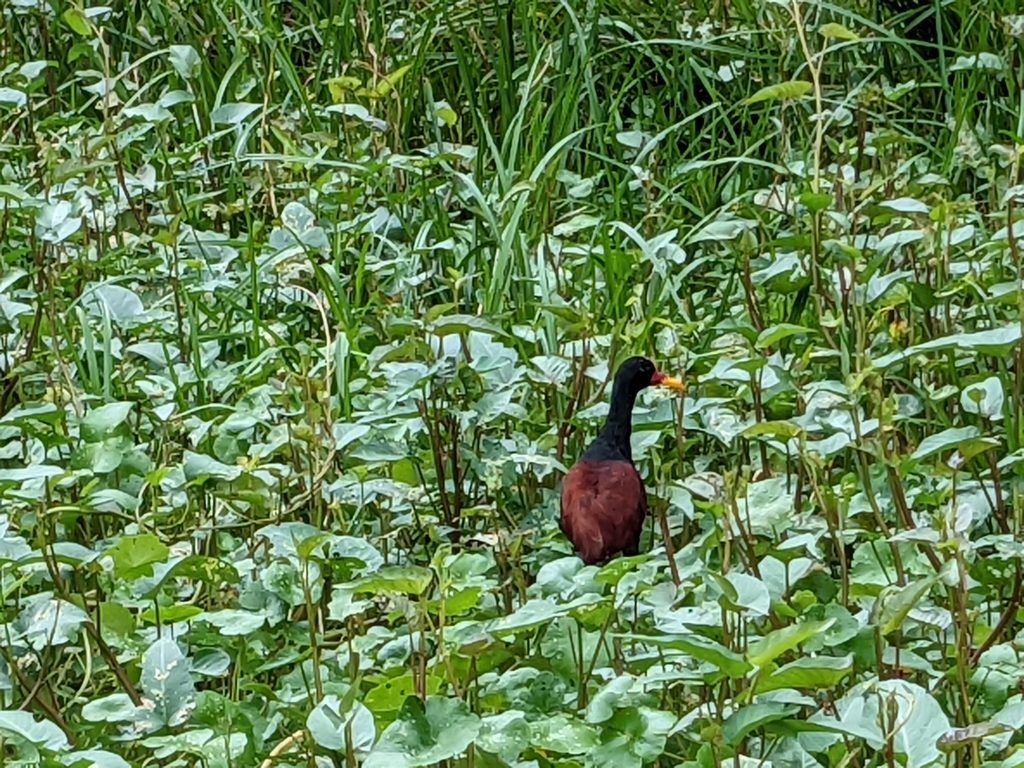
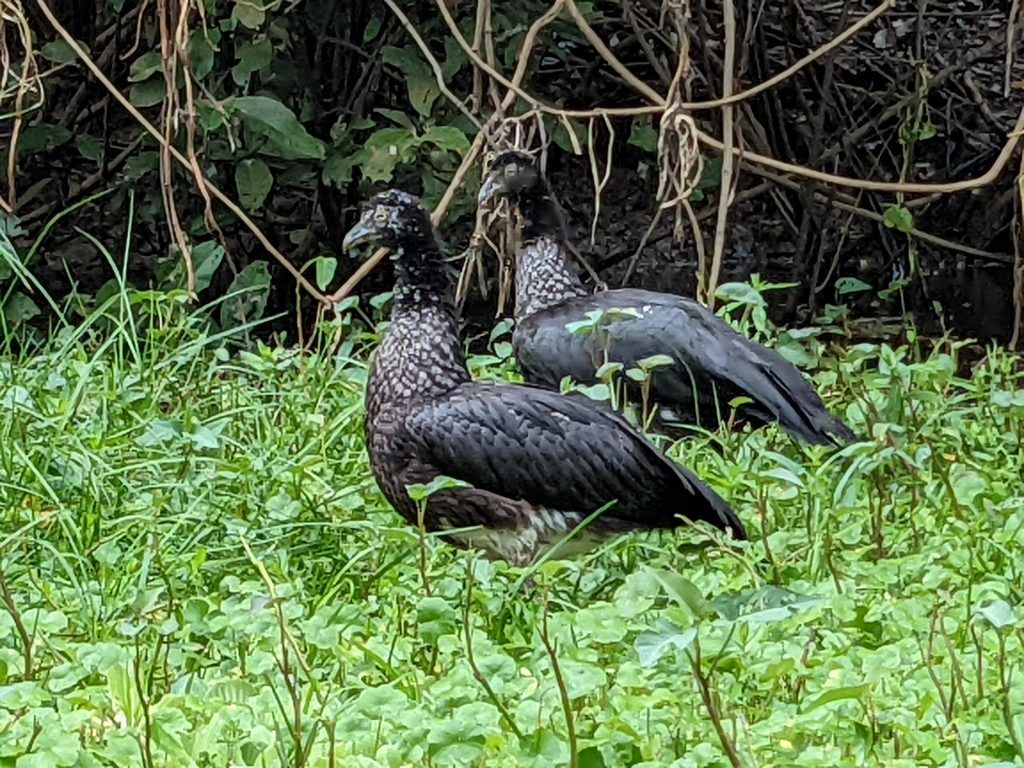
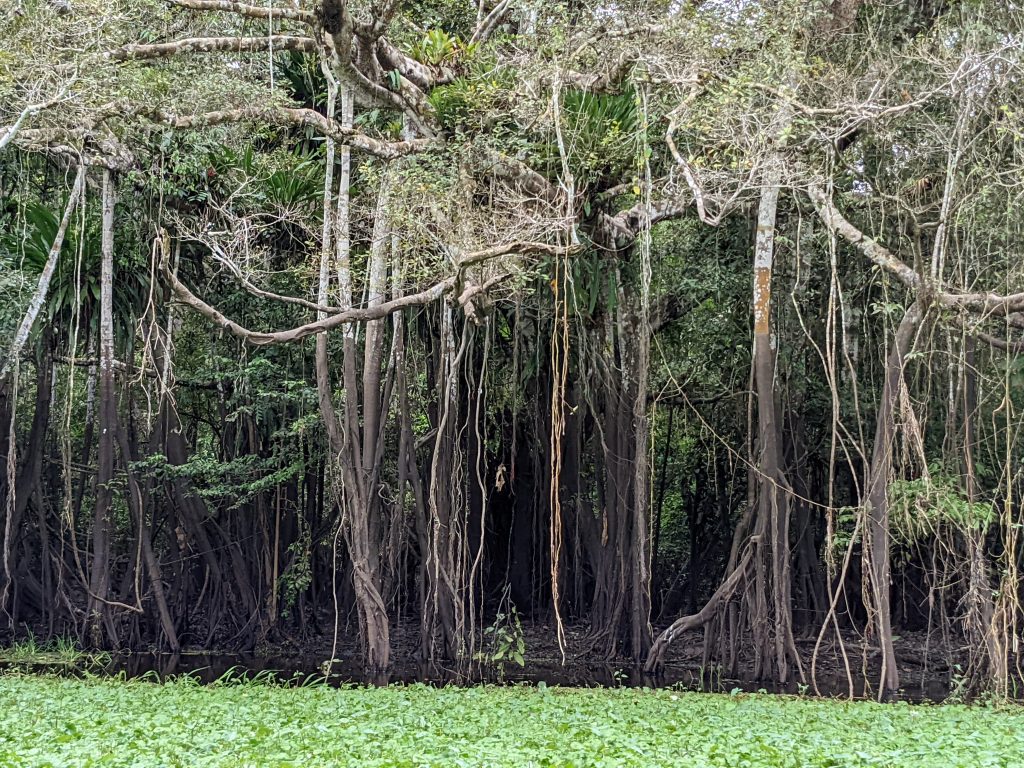
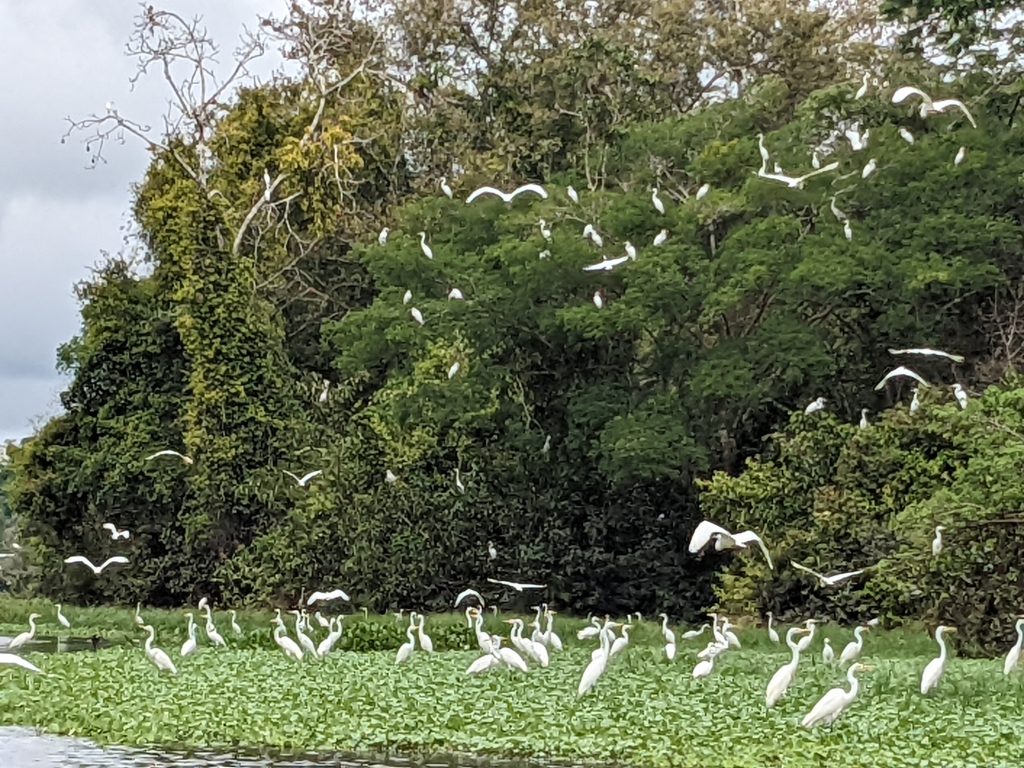
A small bat resting on a tree near our boat.
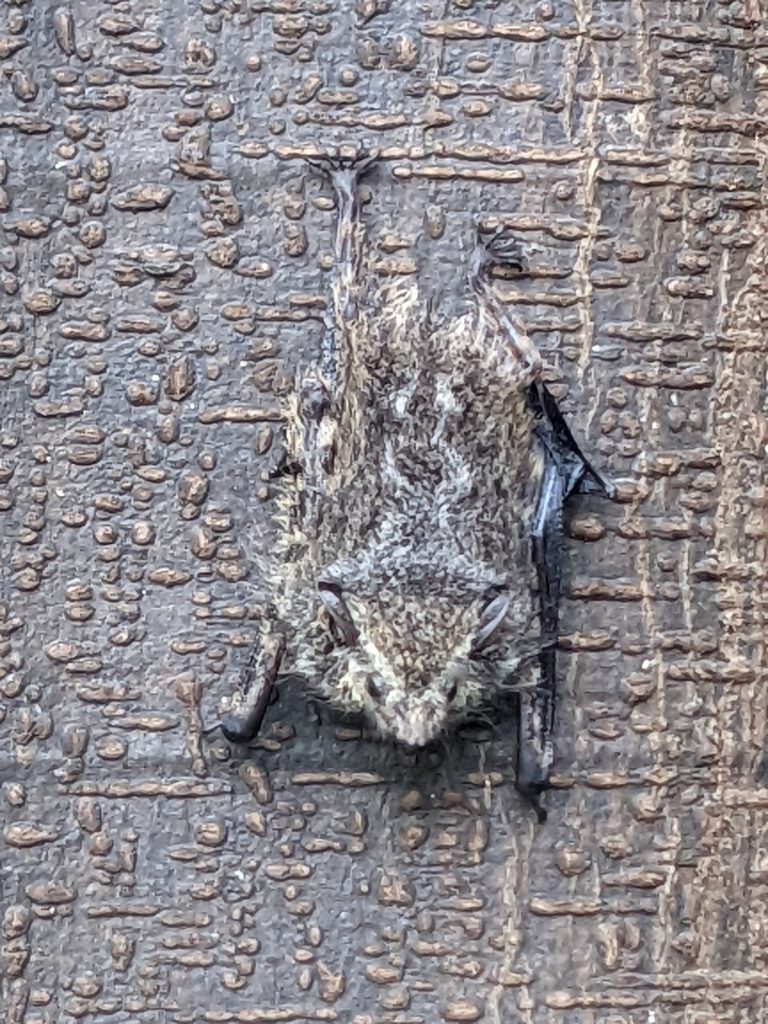
The TV show Naked and Alive recently used the Grand Amazon Lodge as its base for filming its XL show. Below is part of the camp the participants used. The crew got to go back to the lodge every night. One of the participants, Gary, messed up and hacked into a tree with really toxic sap, and it got into his eyes. He was blinded and hospitalized for 35 days before he recovered. Needless to say, he wasn’t one of the winners. The guides now call that tree the Gary Tree 🙂
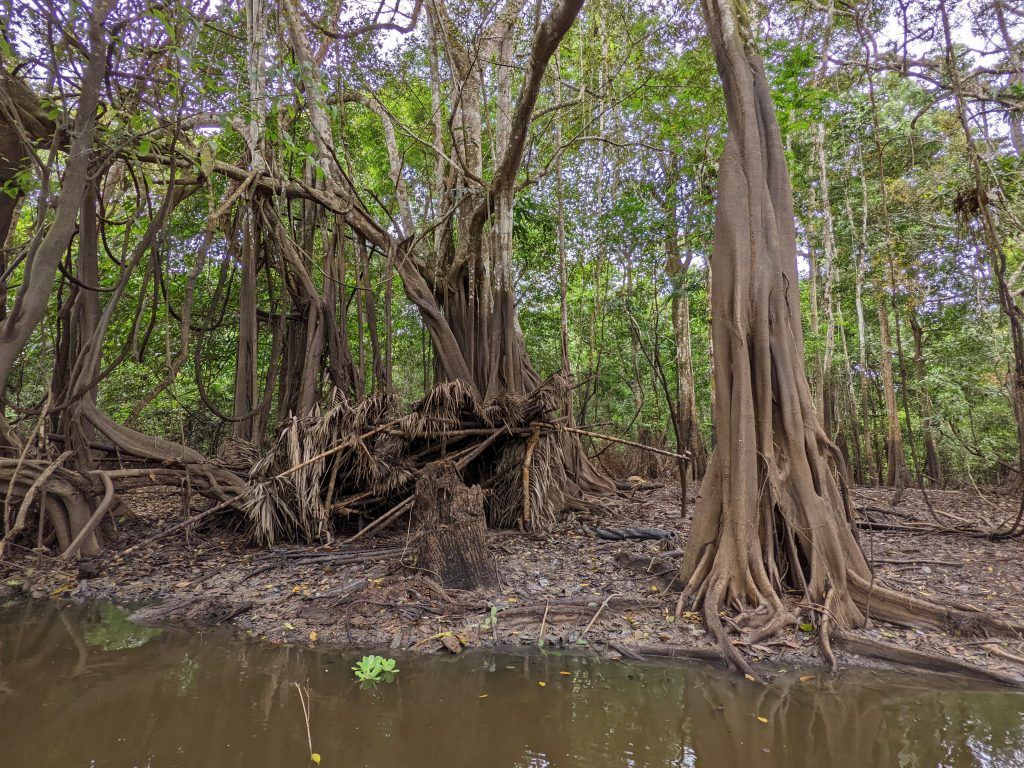
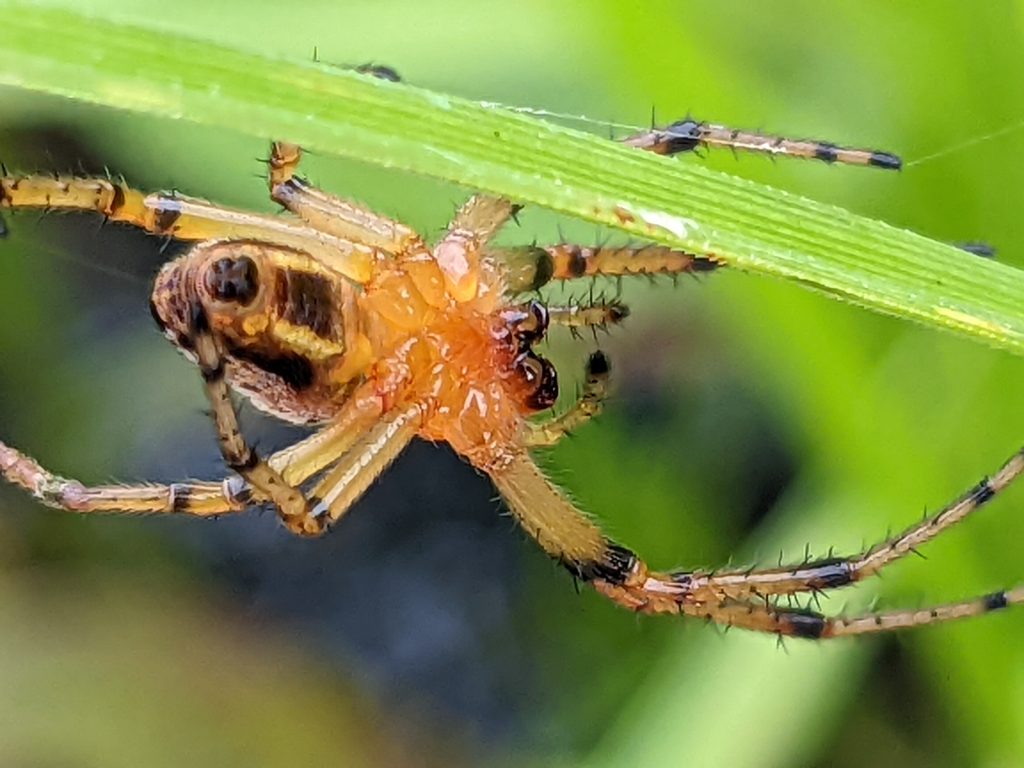
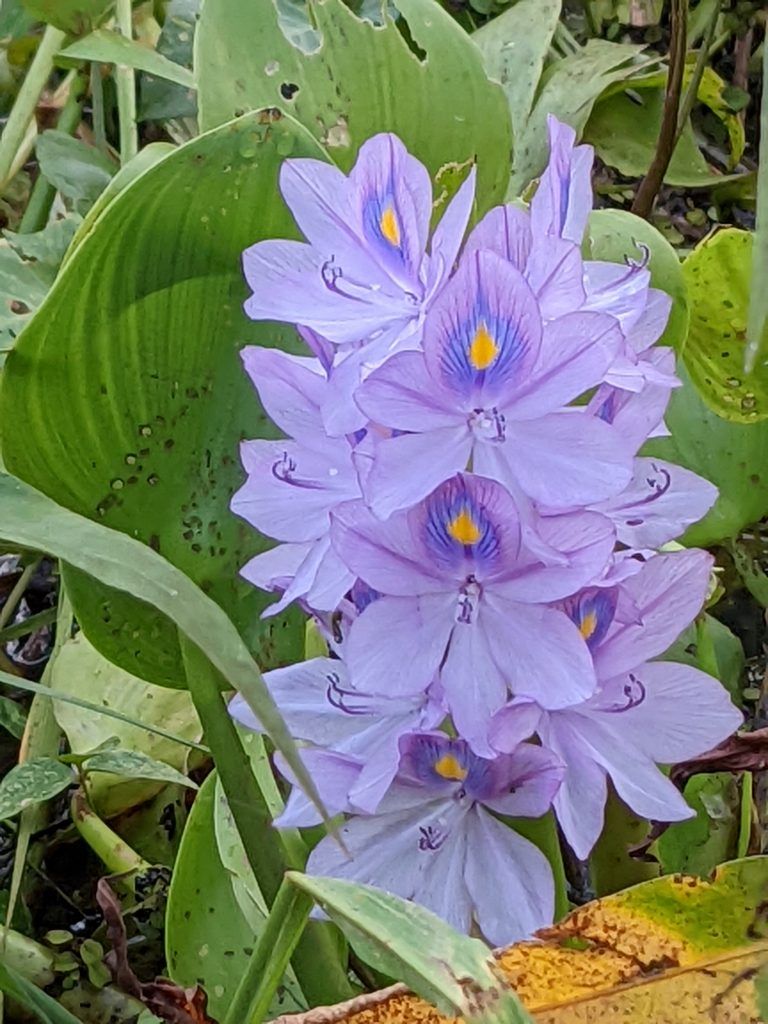
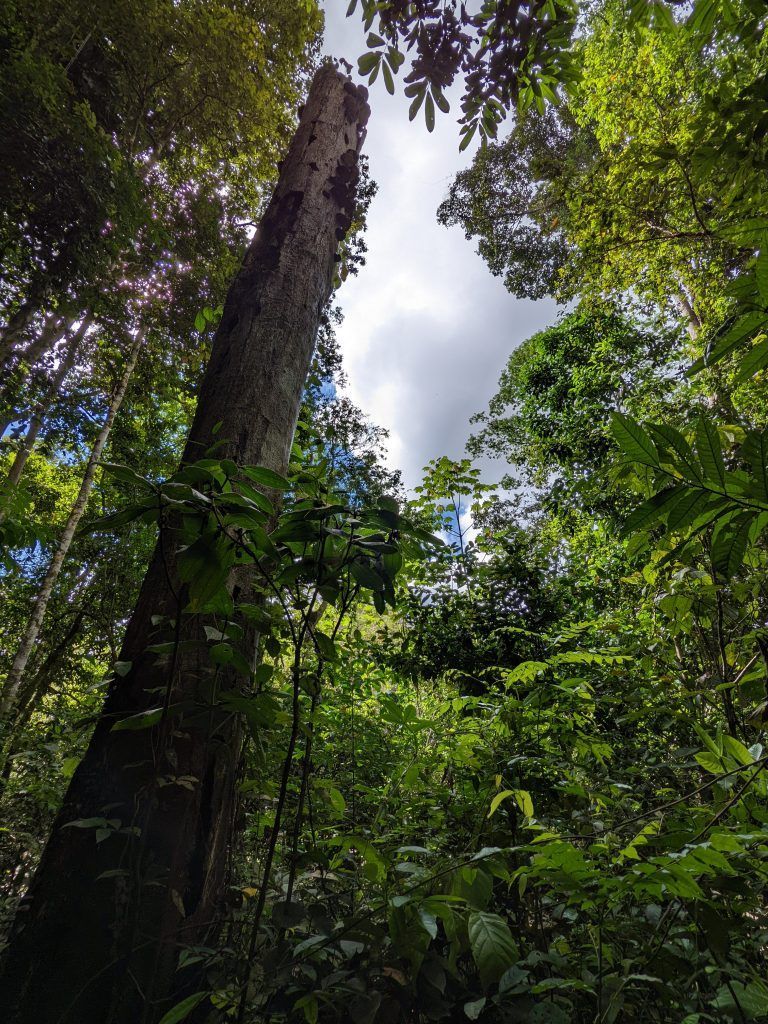
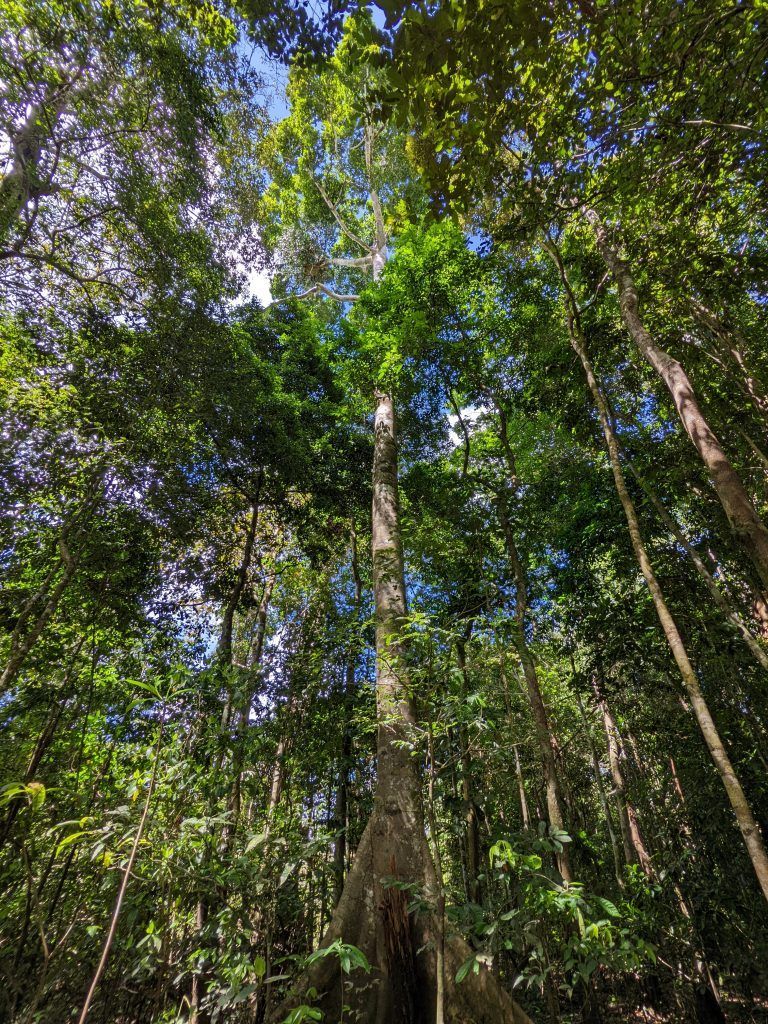
My guide hacked off a vine with his machete and we drank the fresh, sweet water.
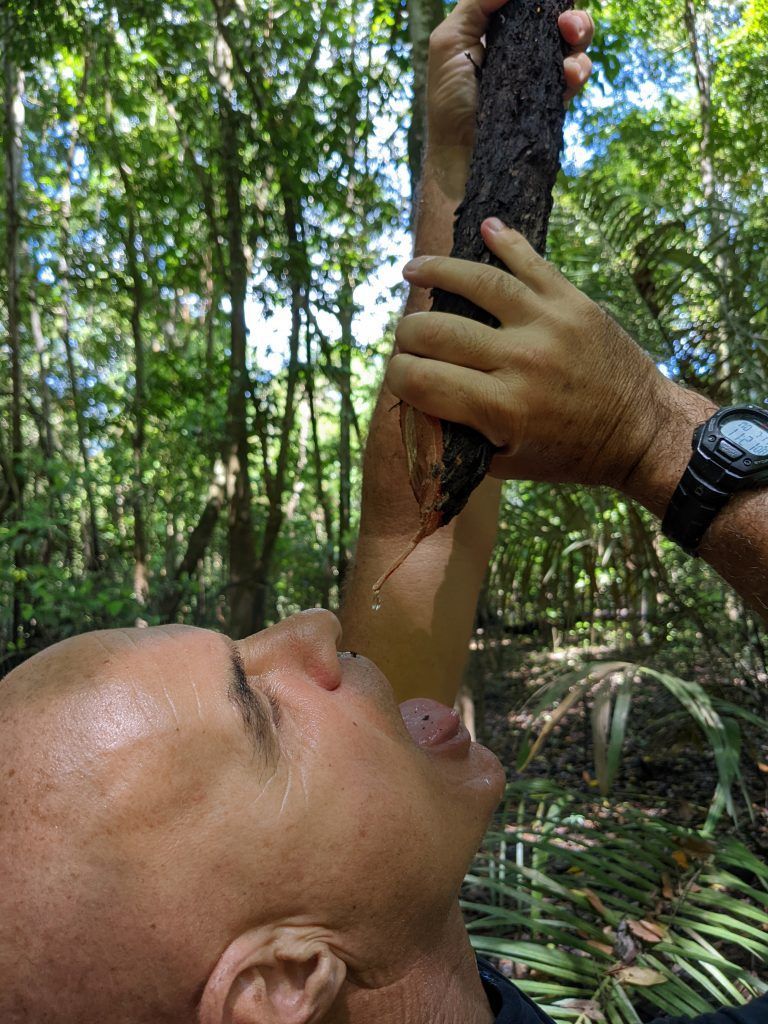
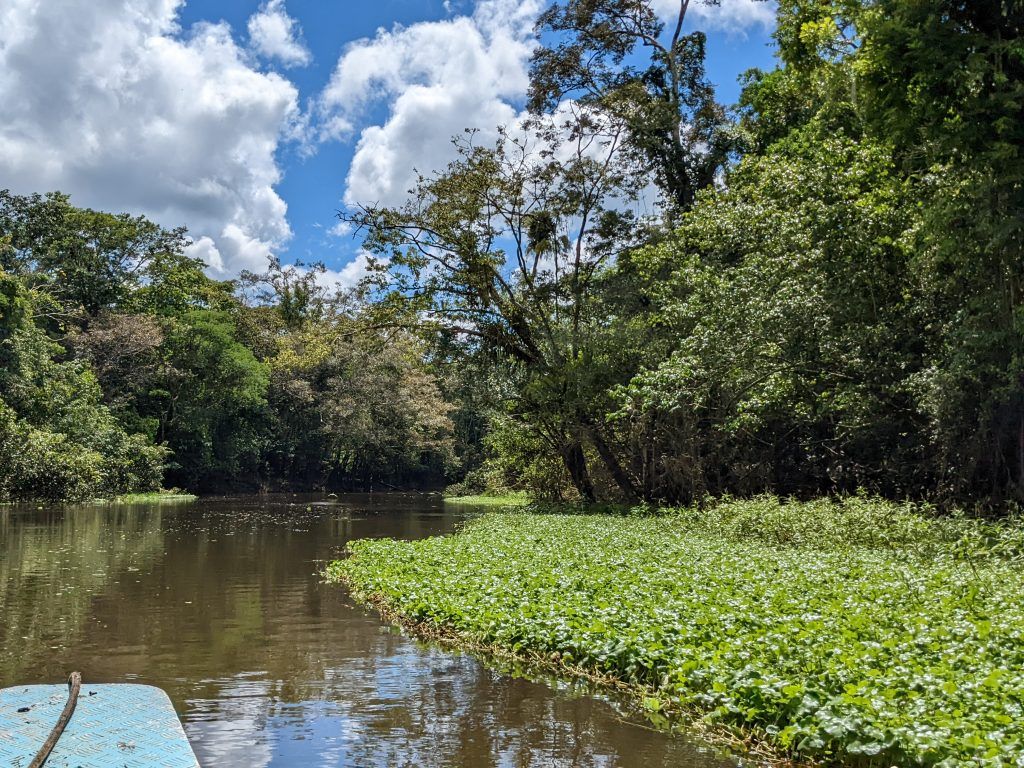
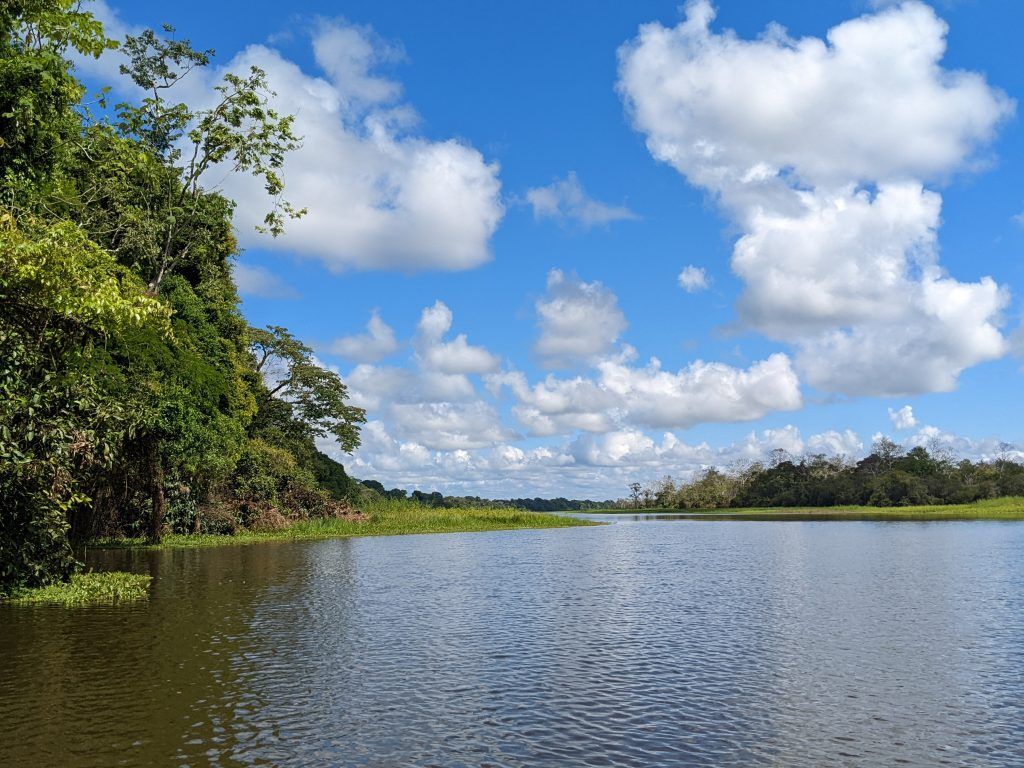
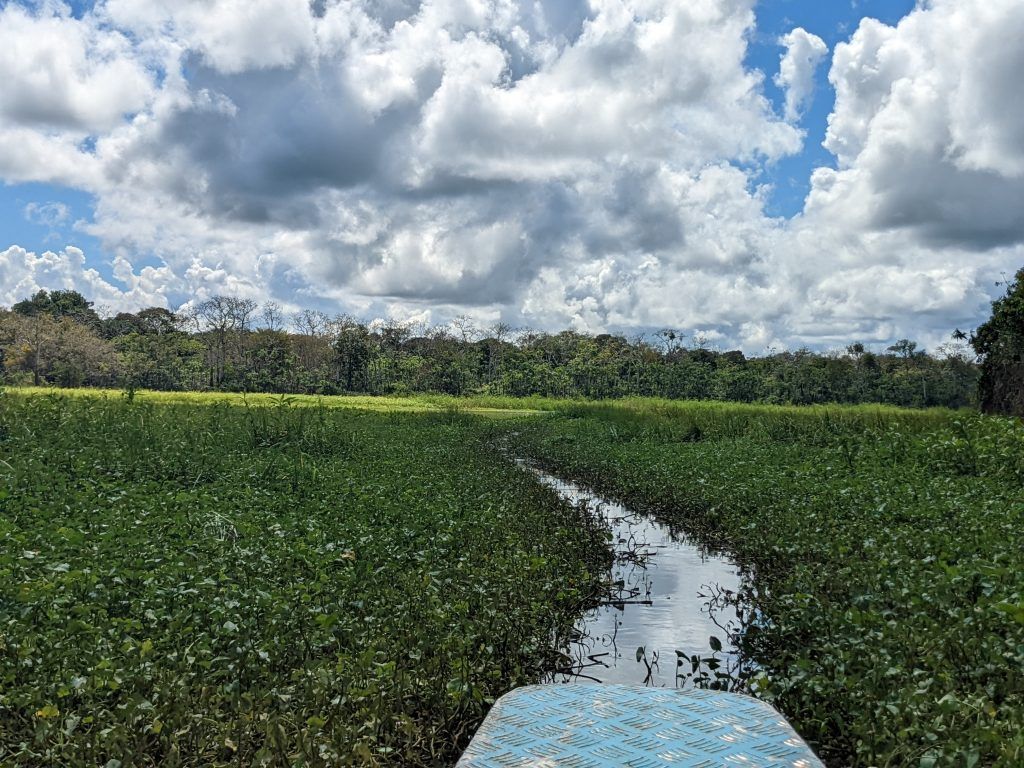
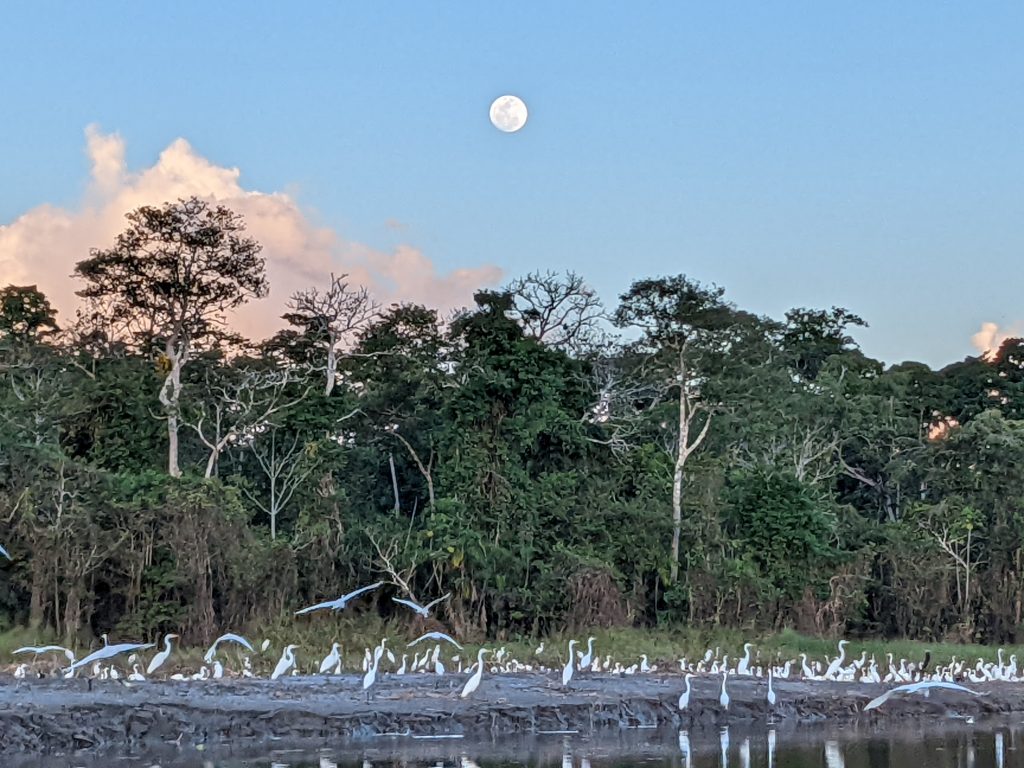
Things That Go Bump in the Night
We did hikes a couple of nights and saw the usual mix of cool and creepy night creatures.
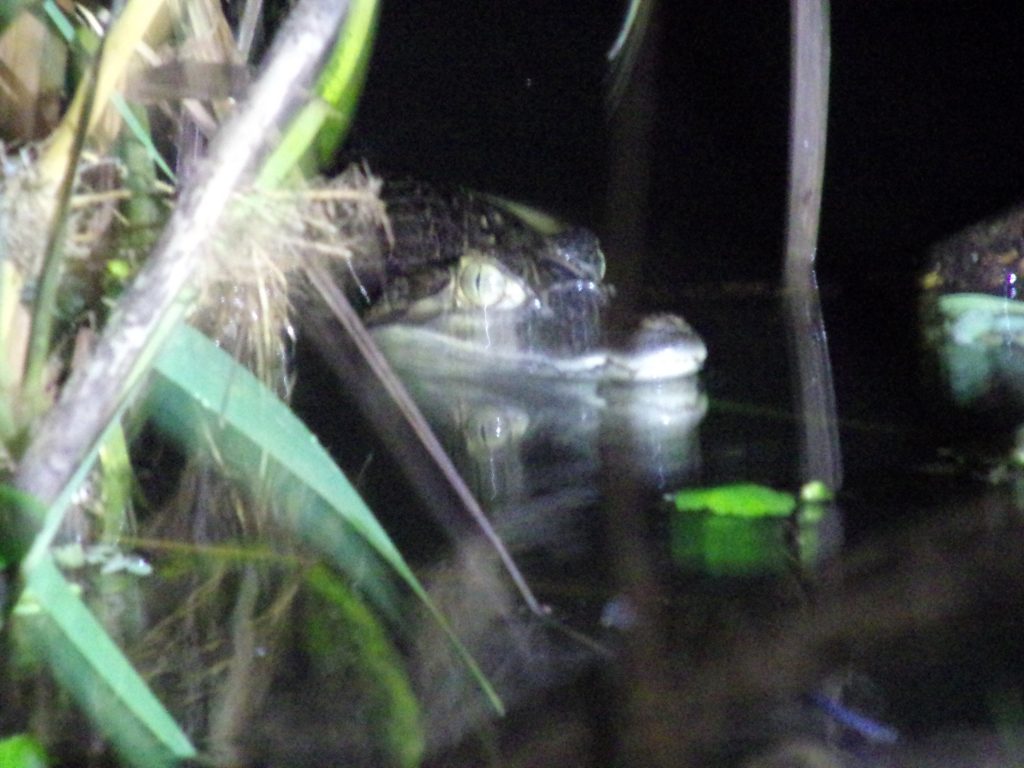
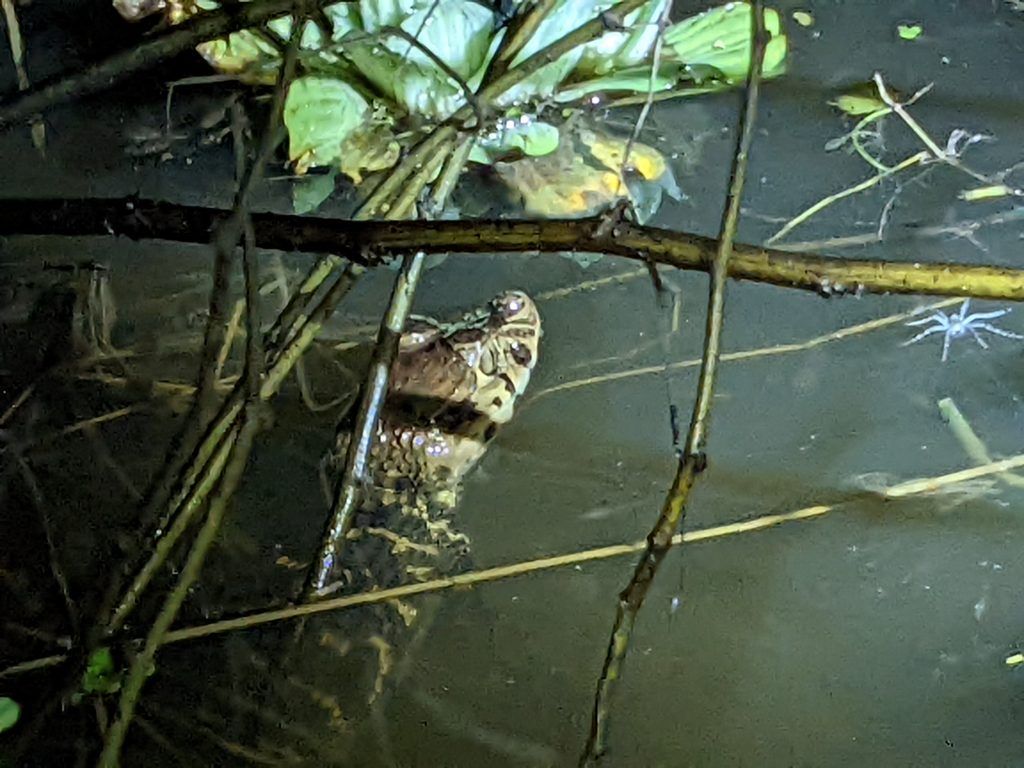
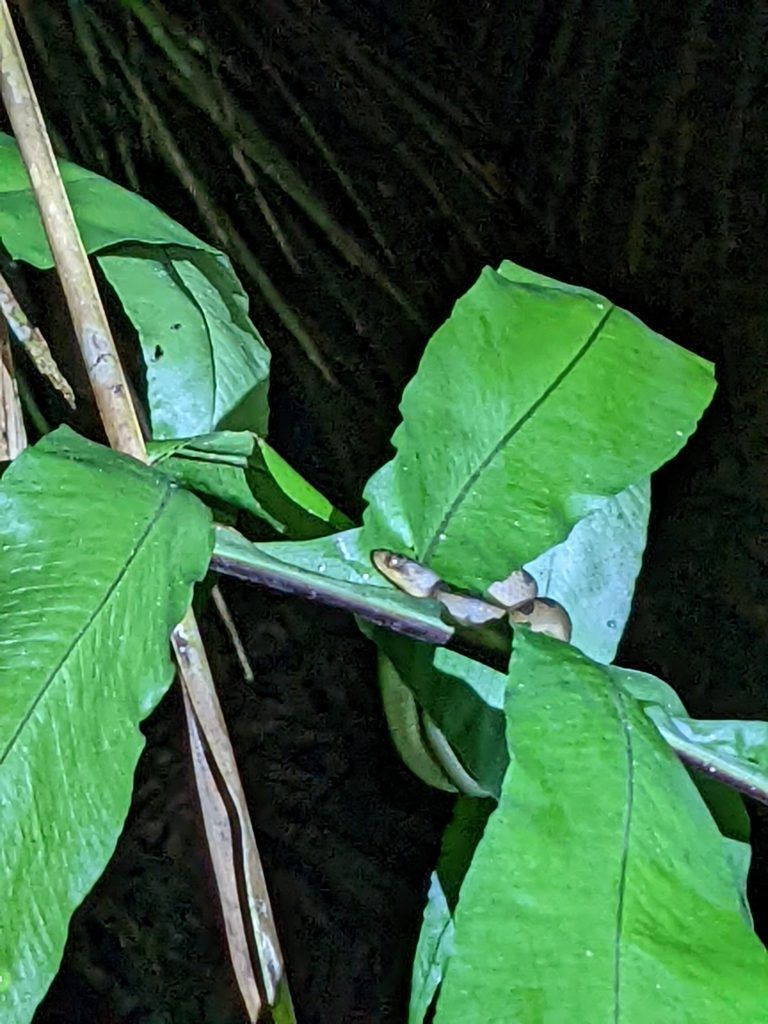
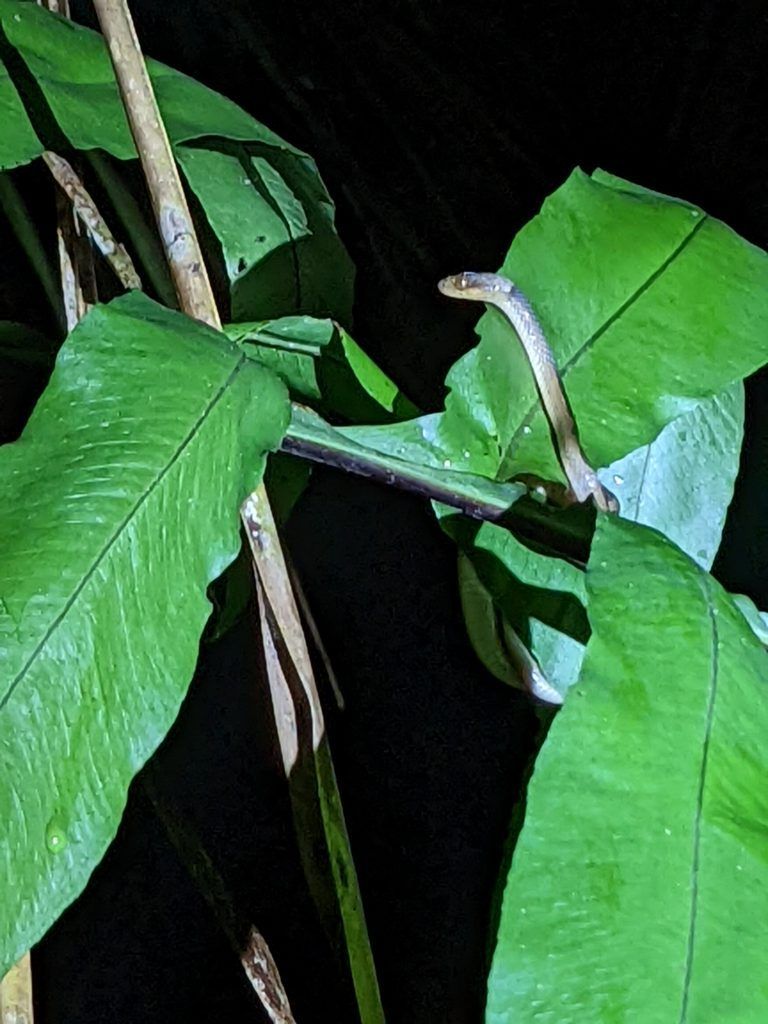
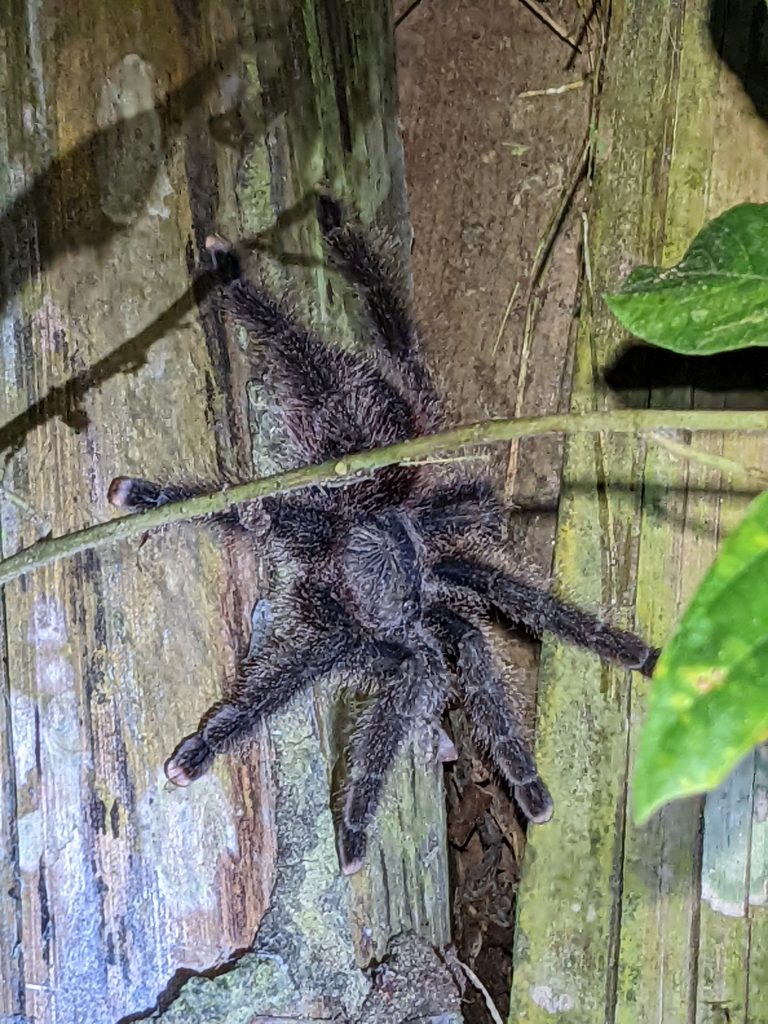
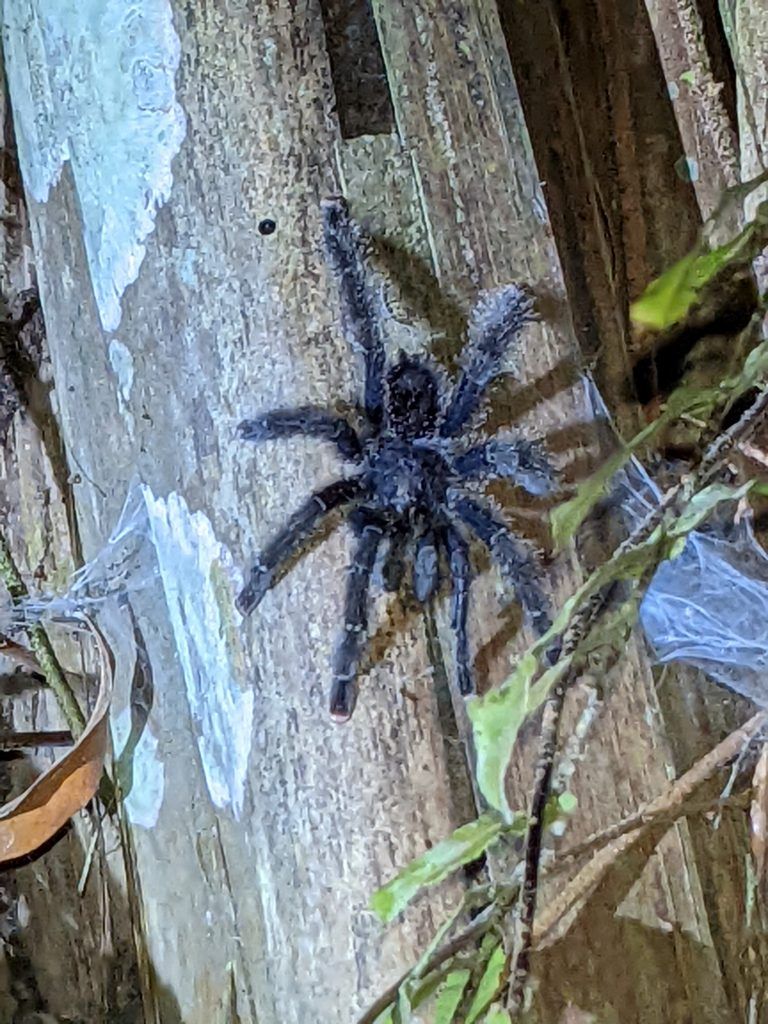
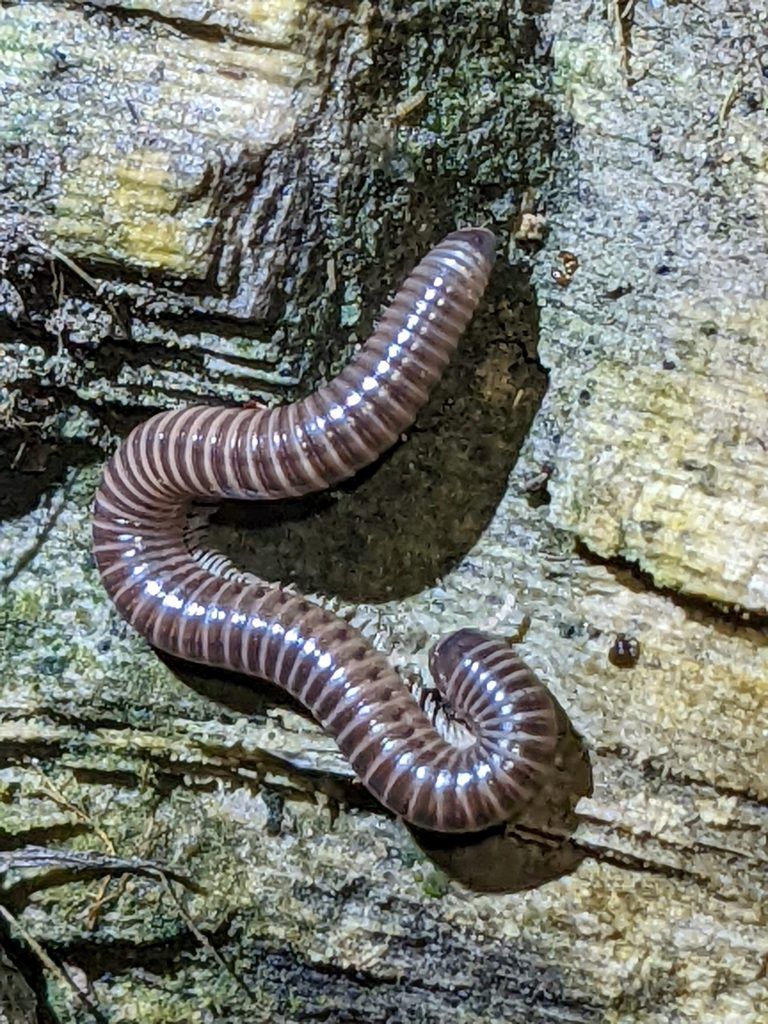
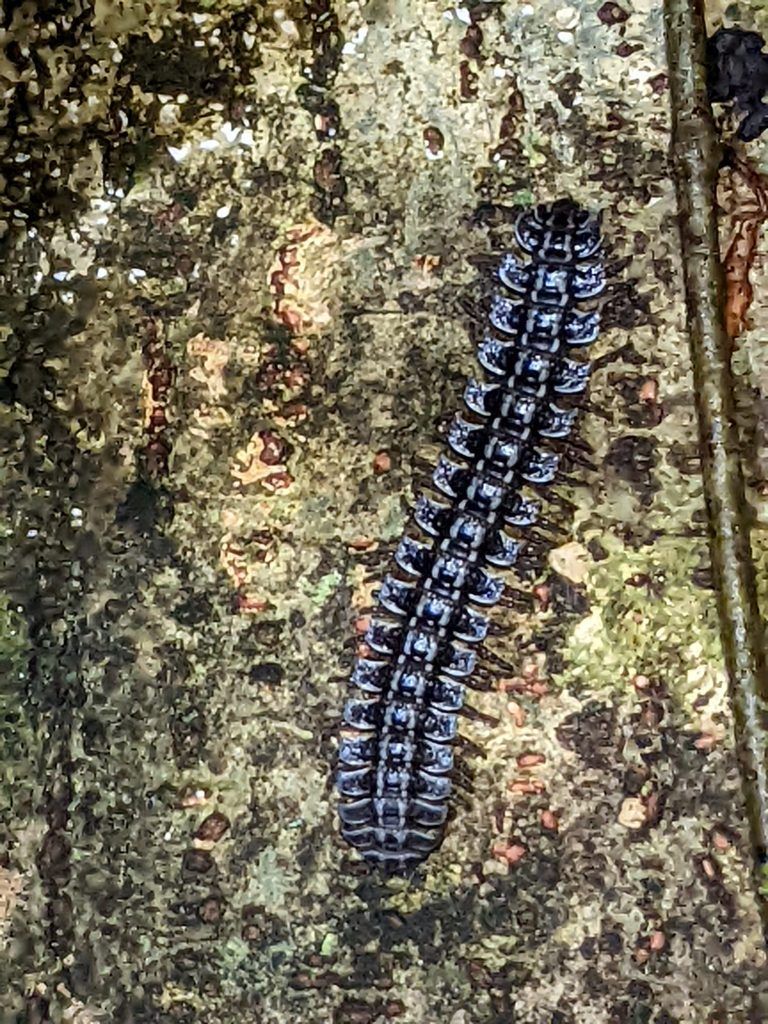
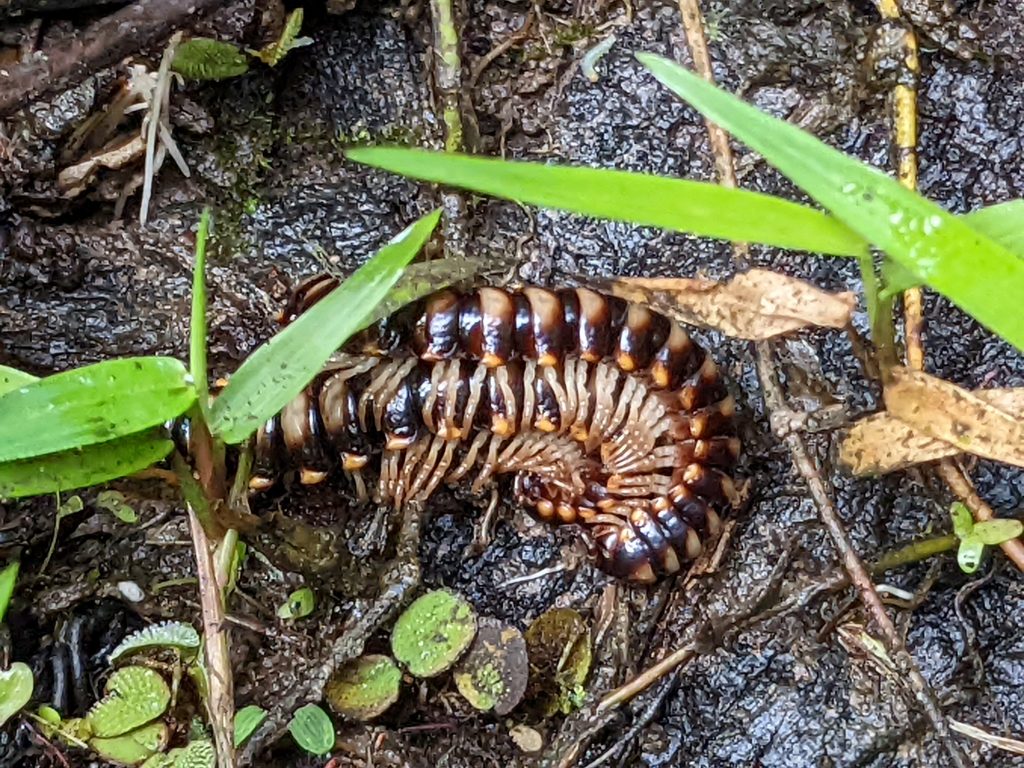
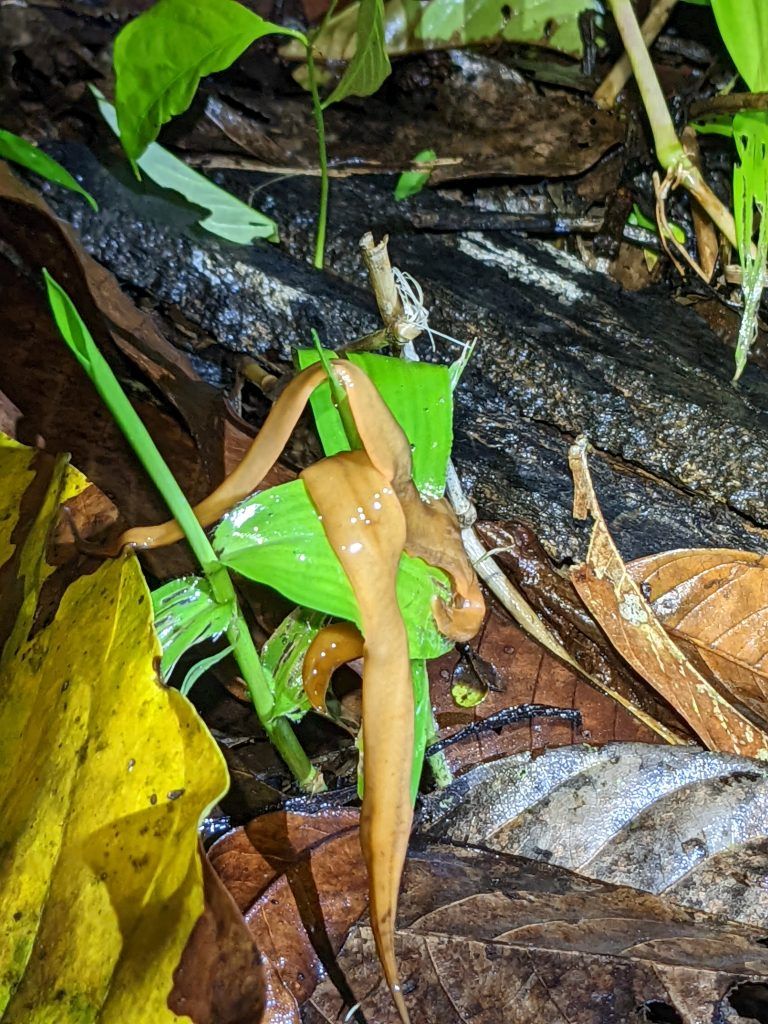
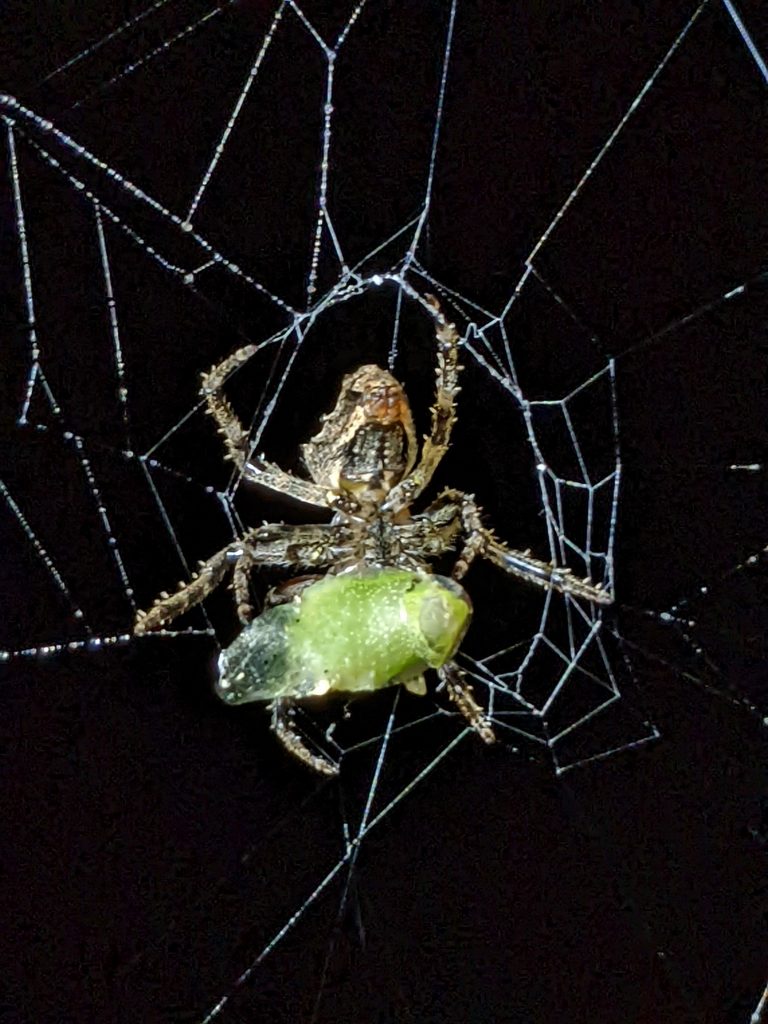
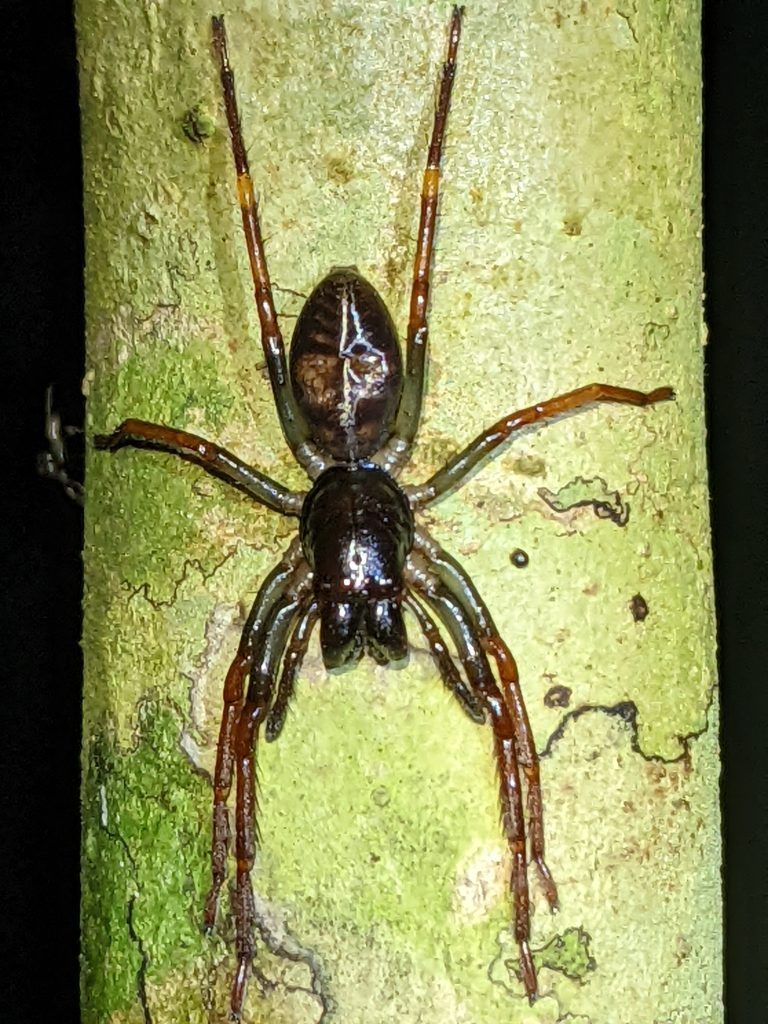
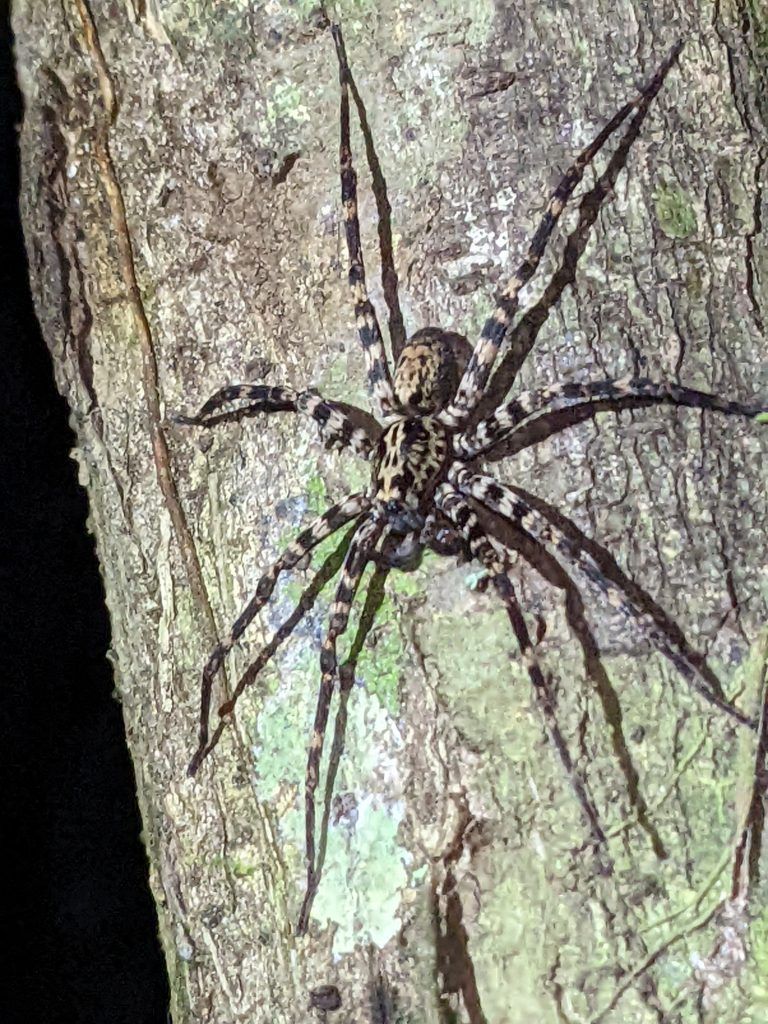
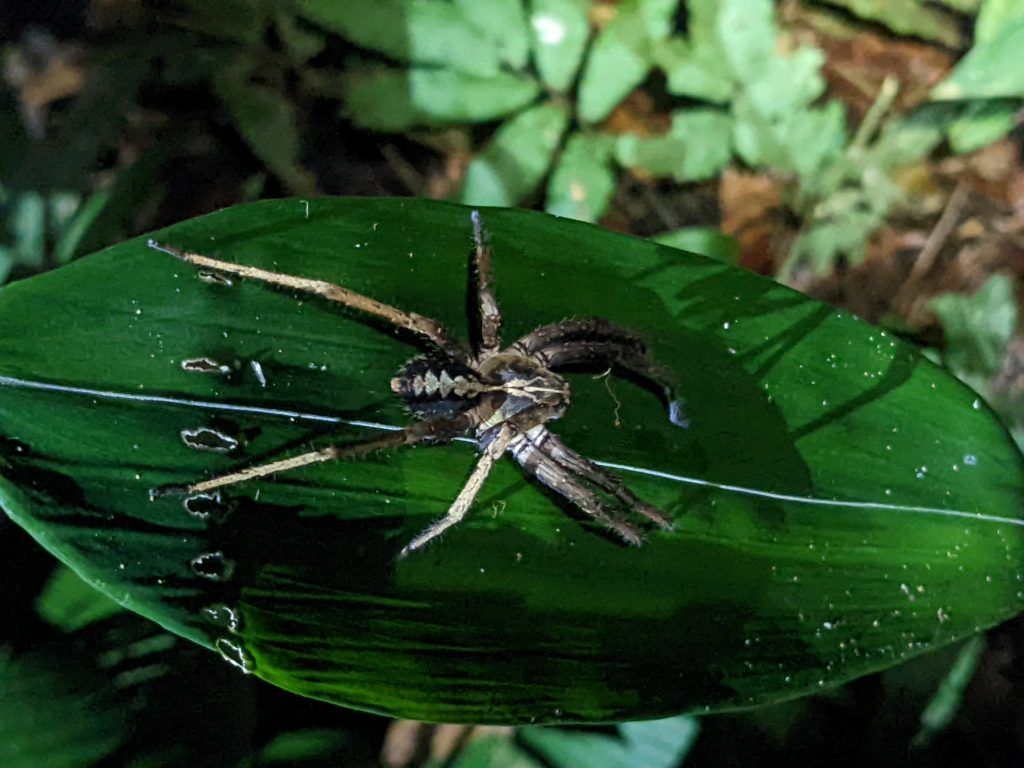
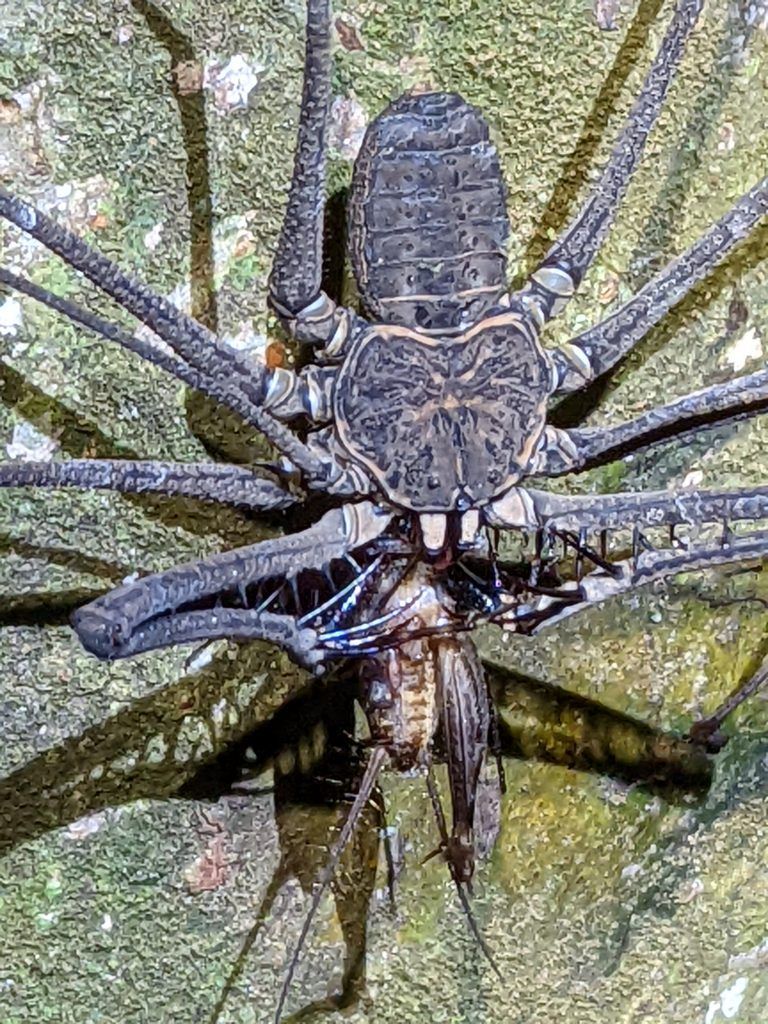
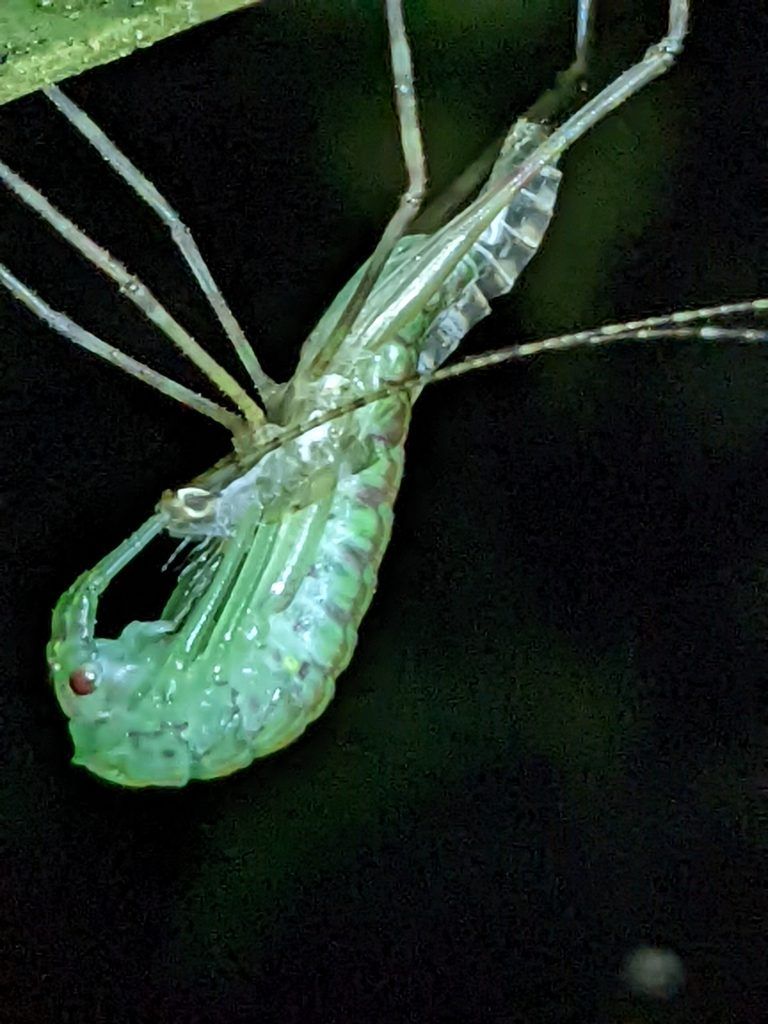
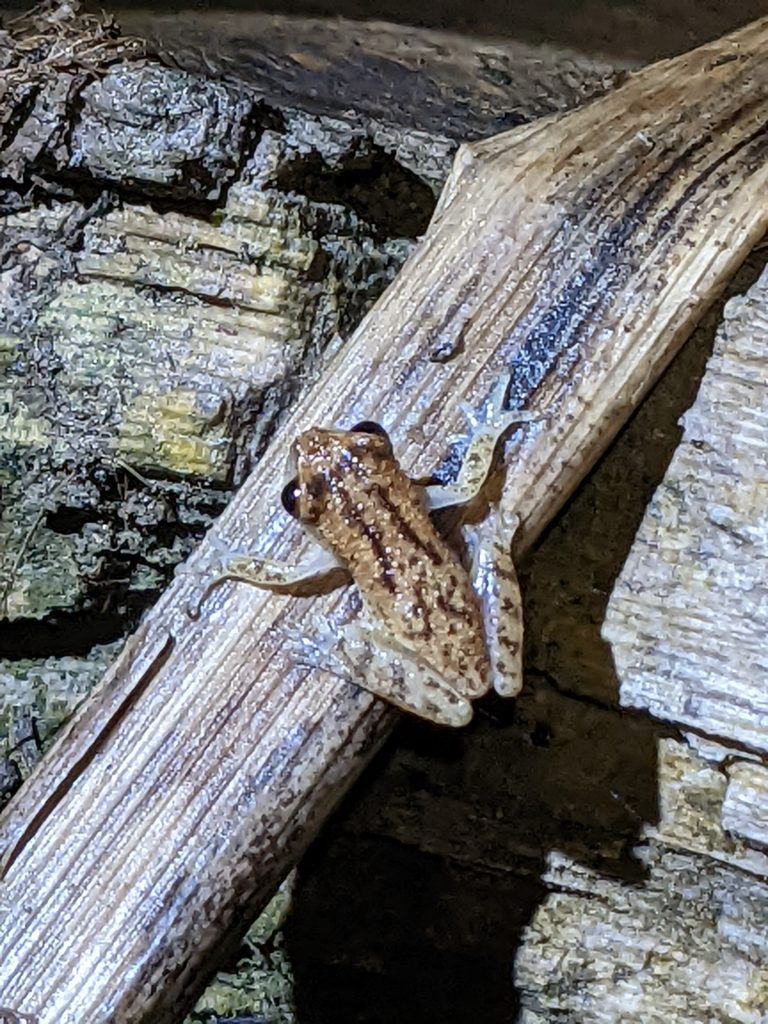
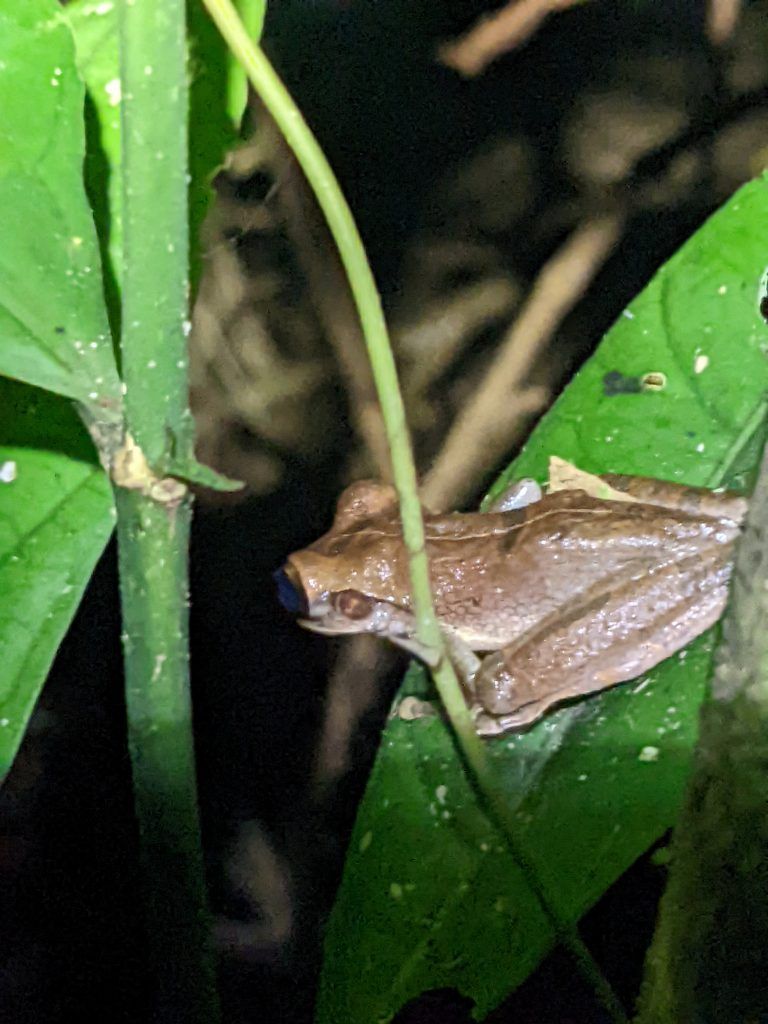
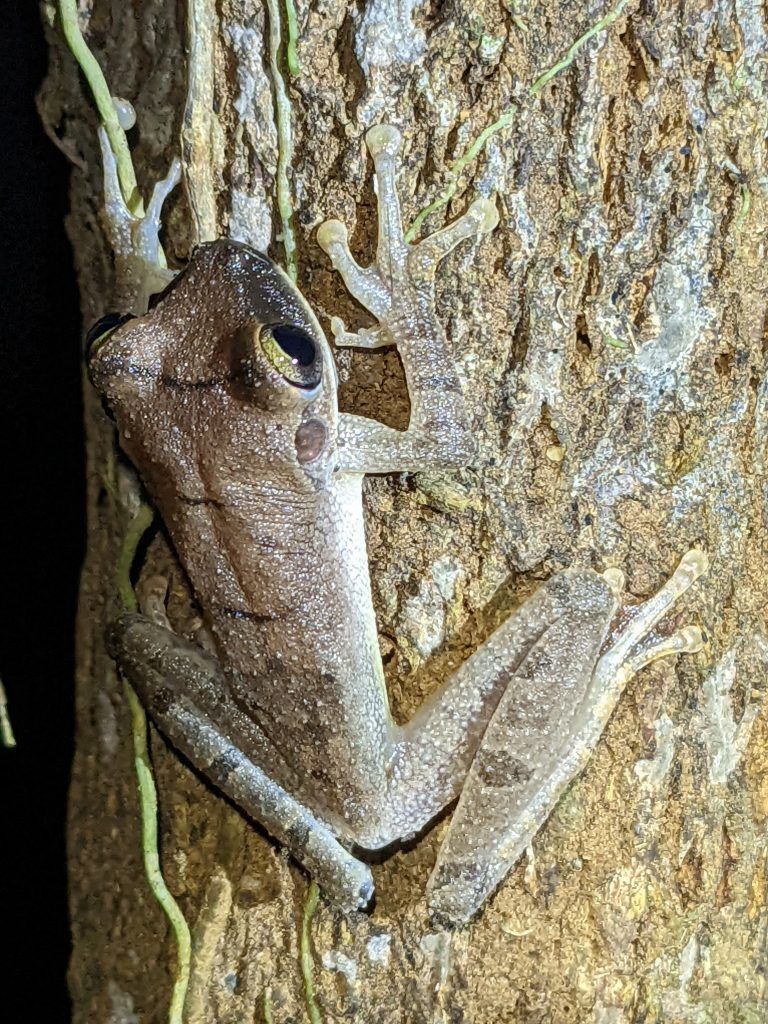
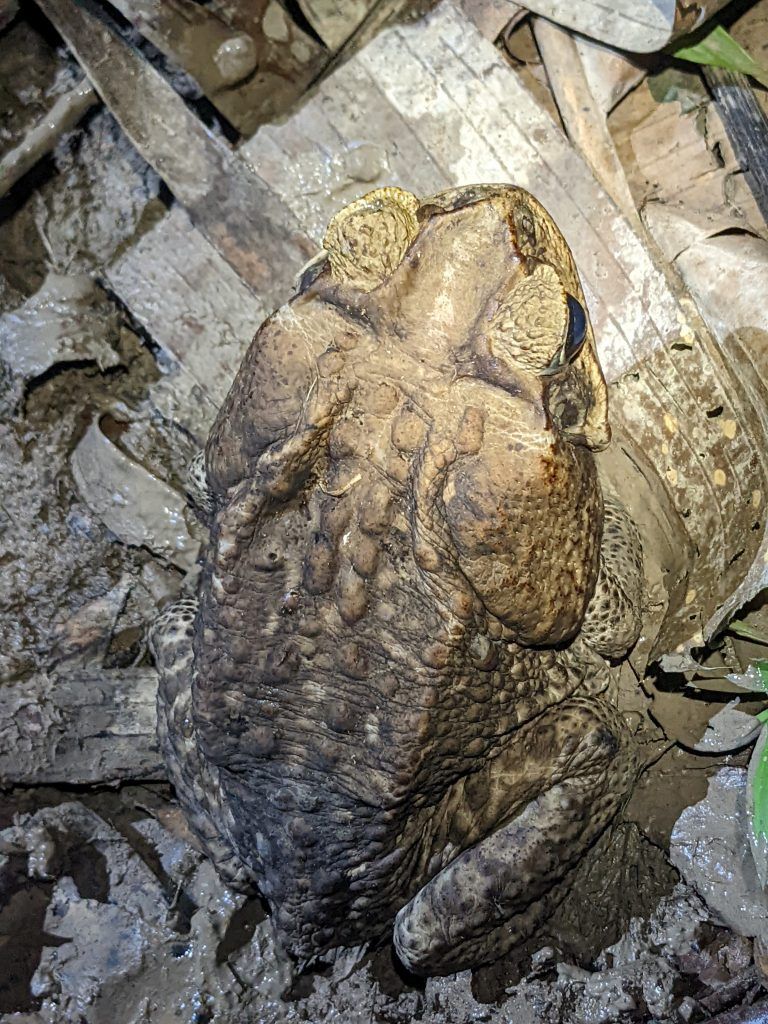
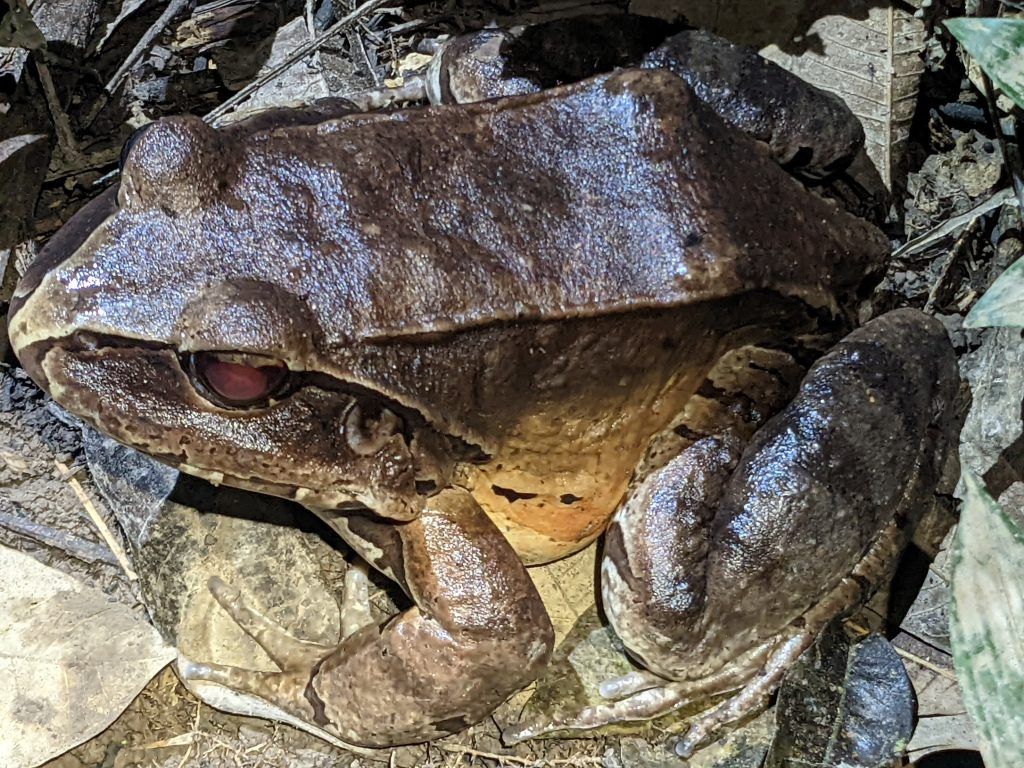
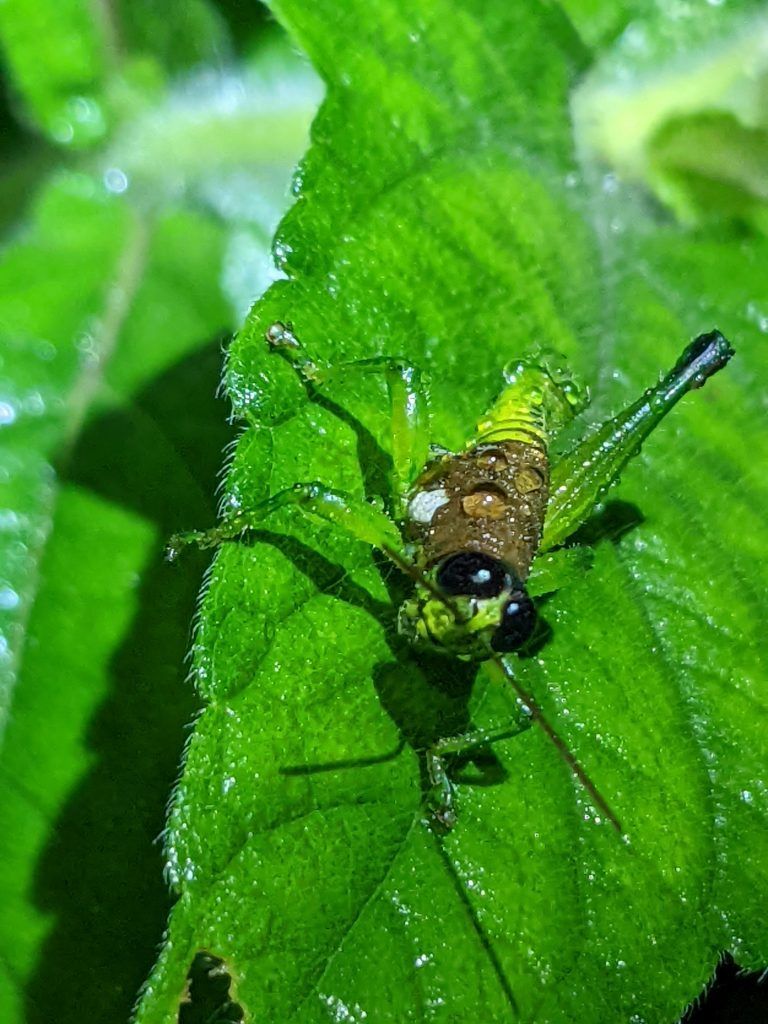
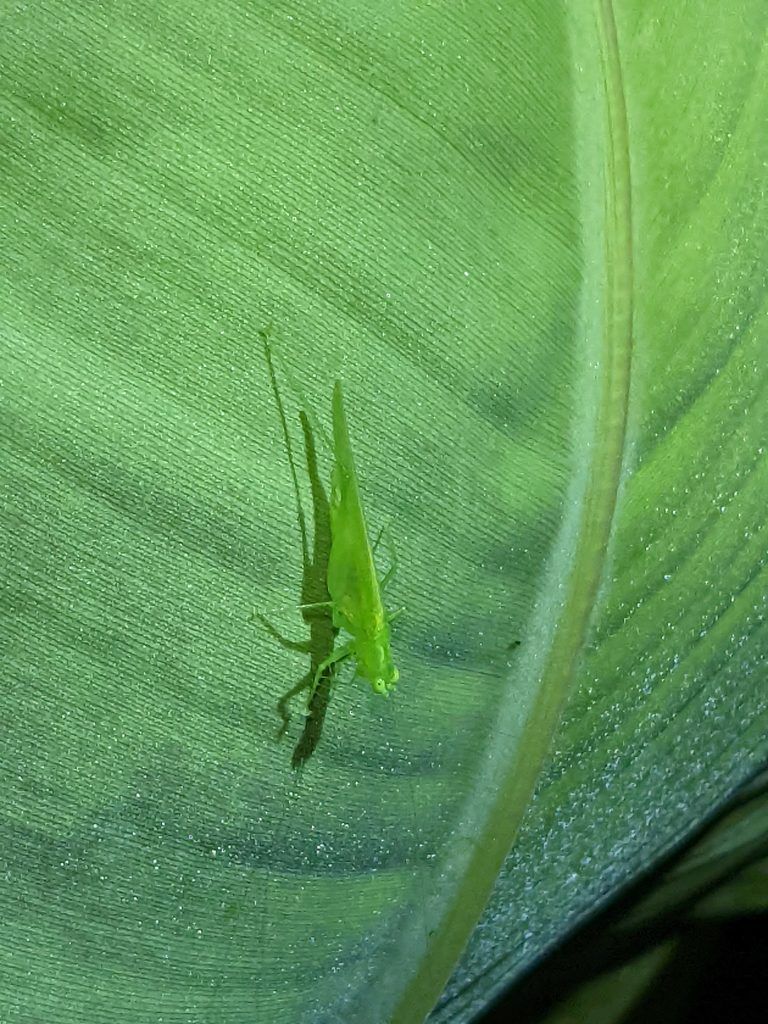
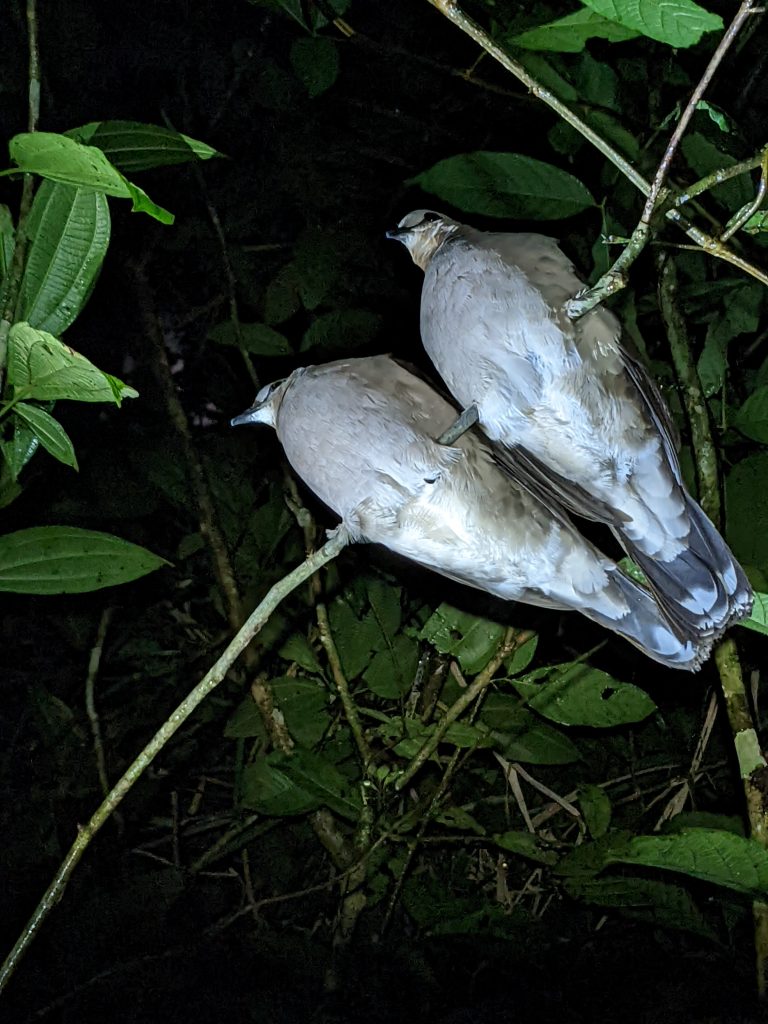
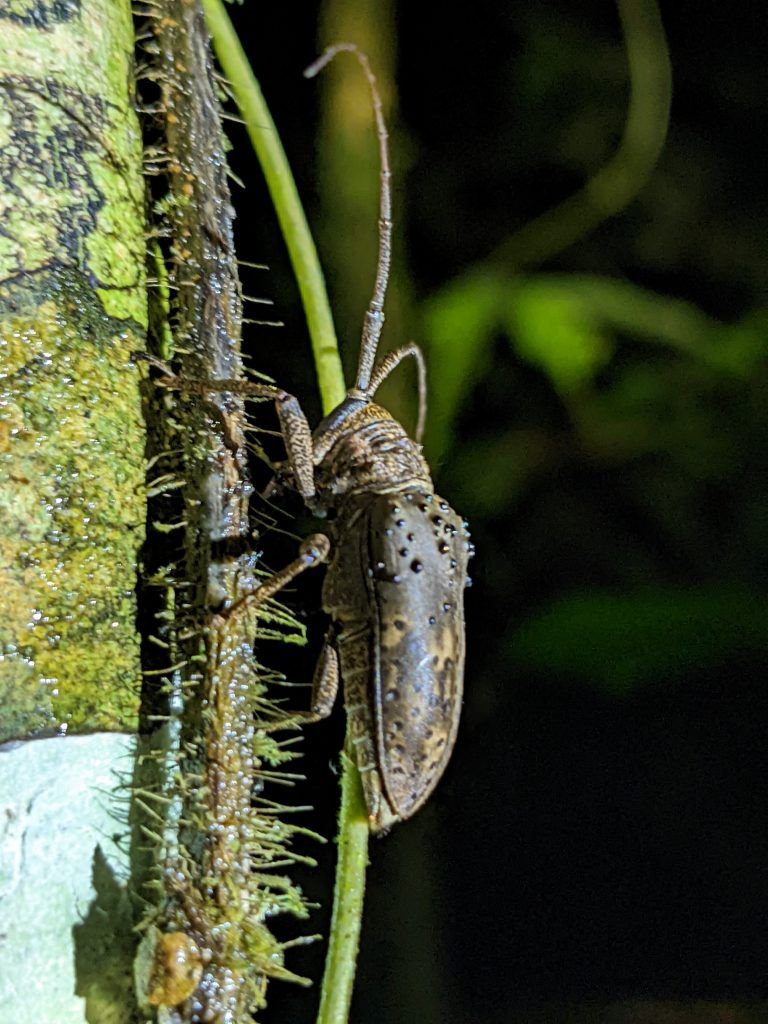
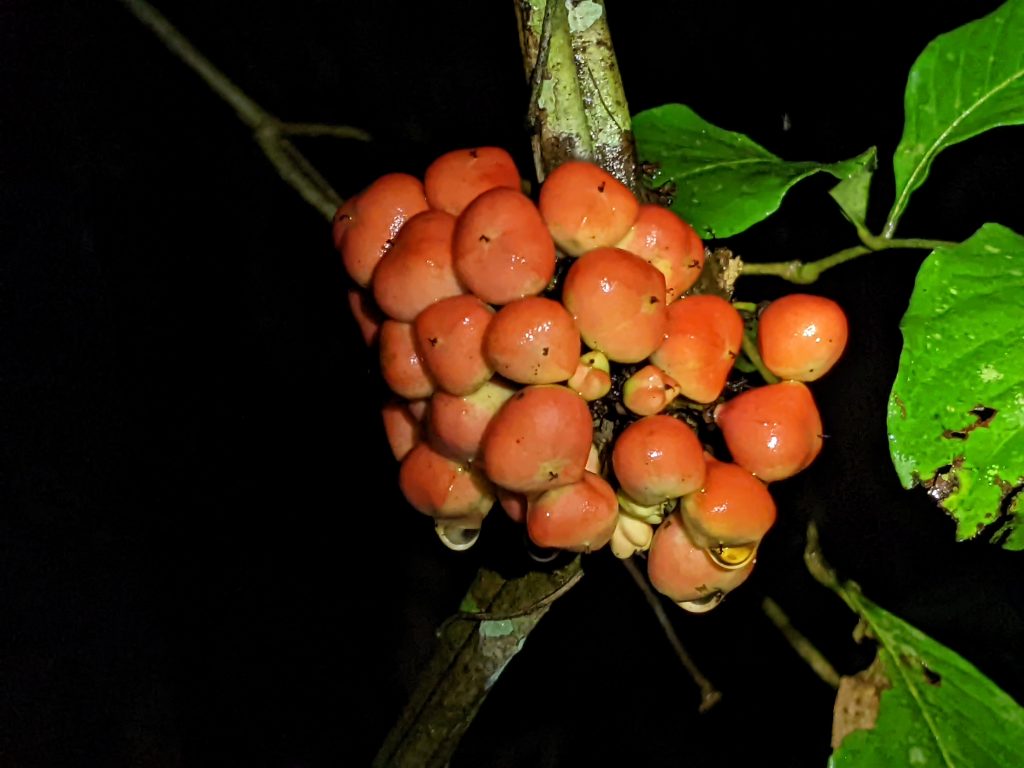
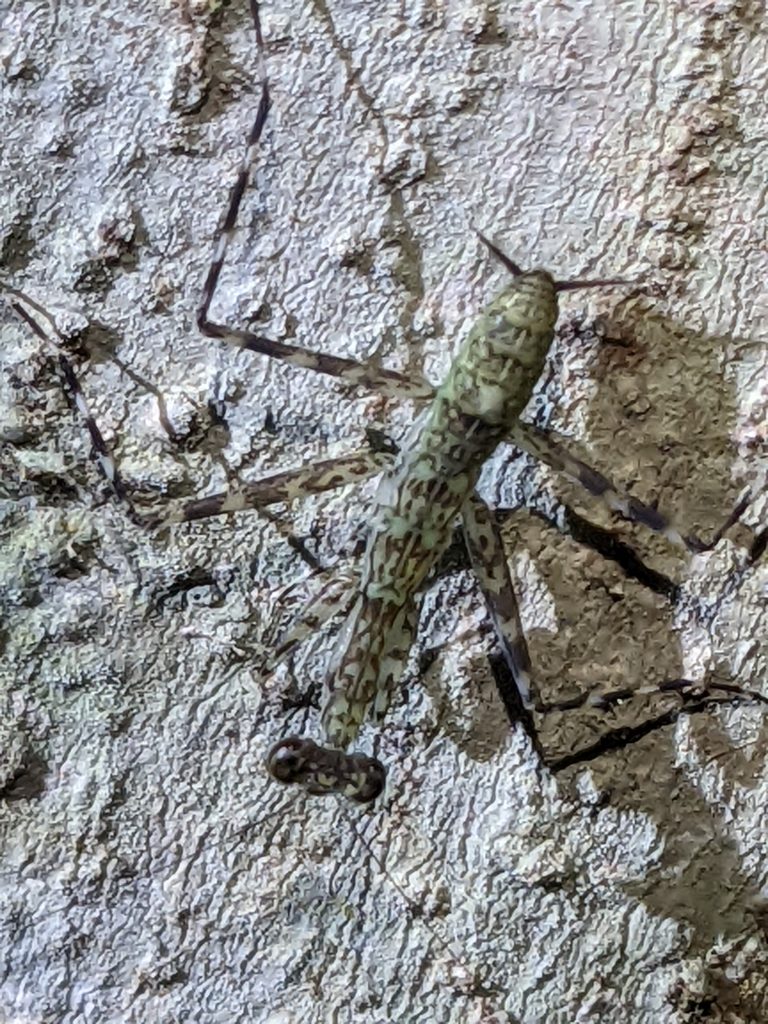
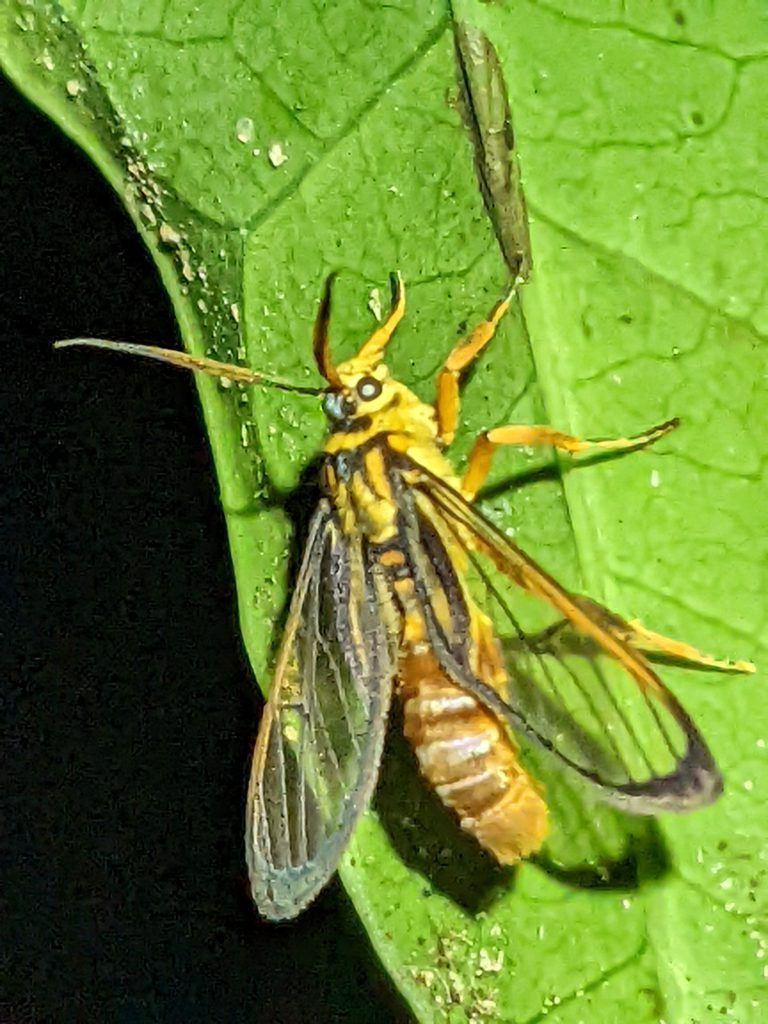
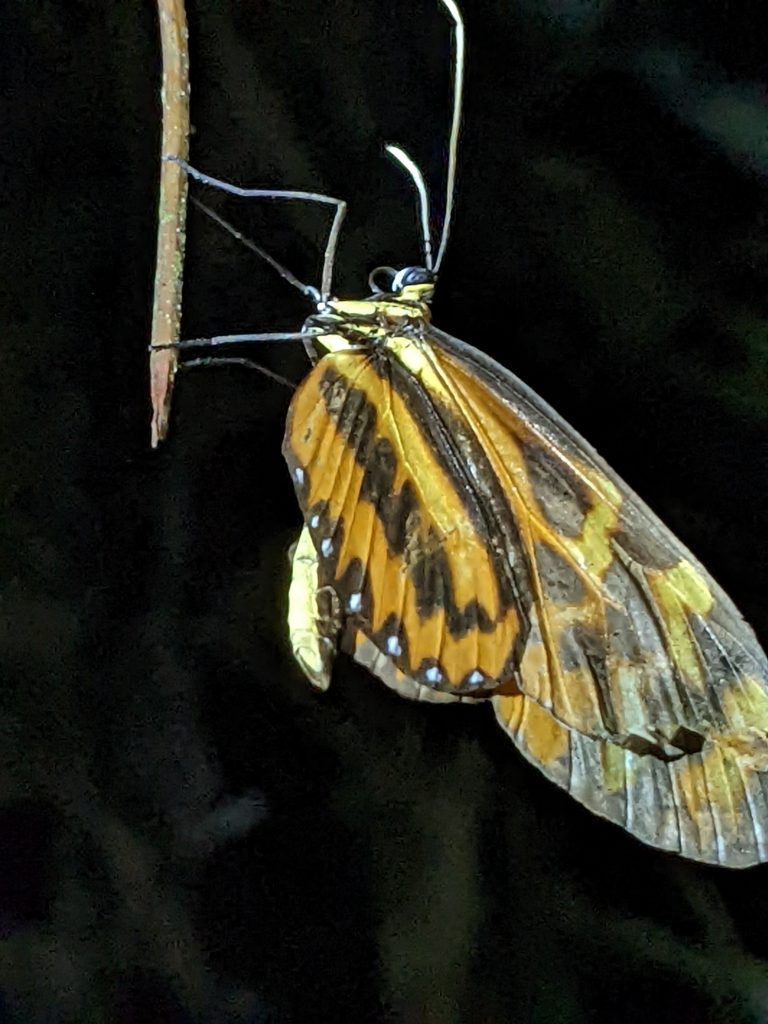
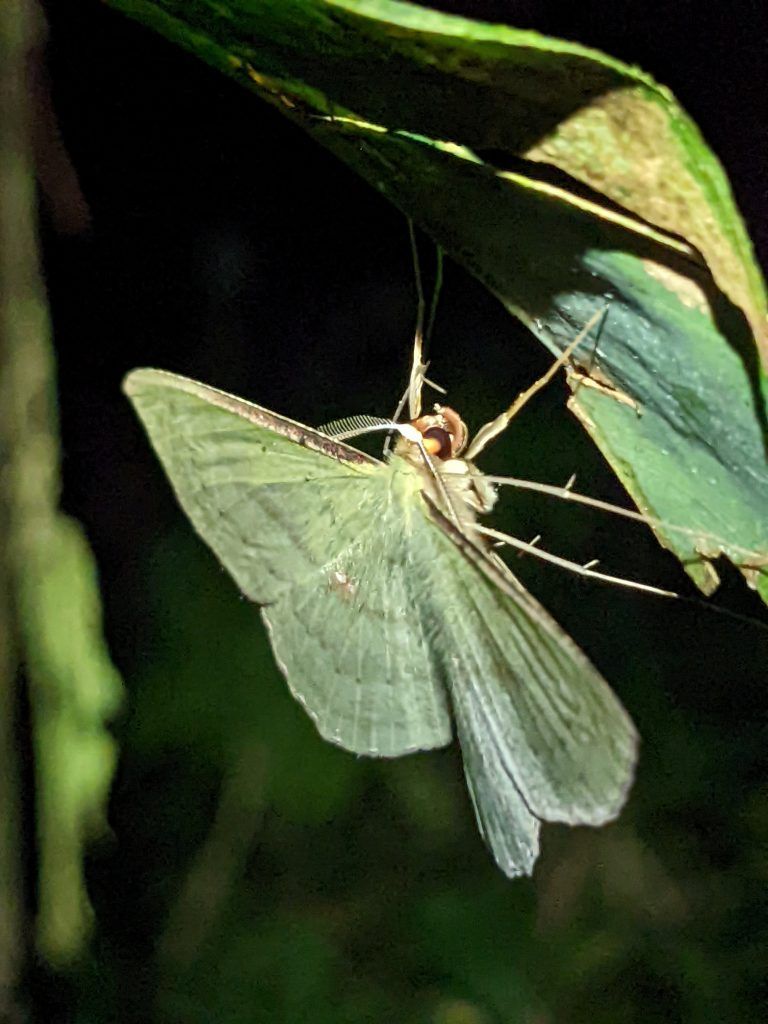
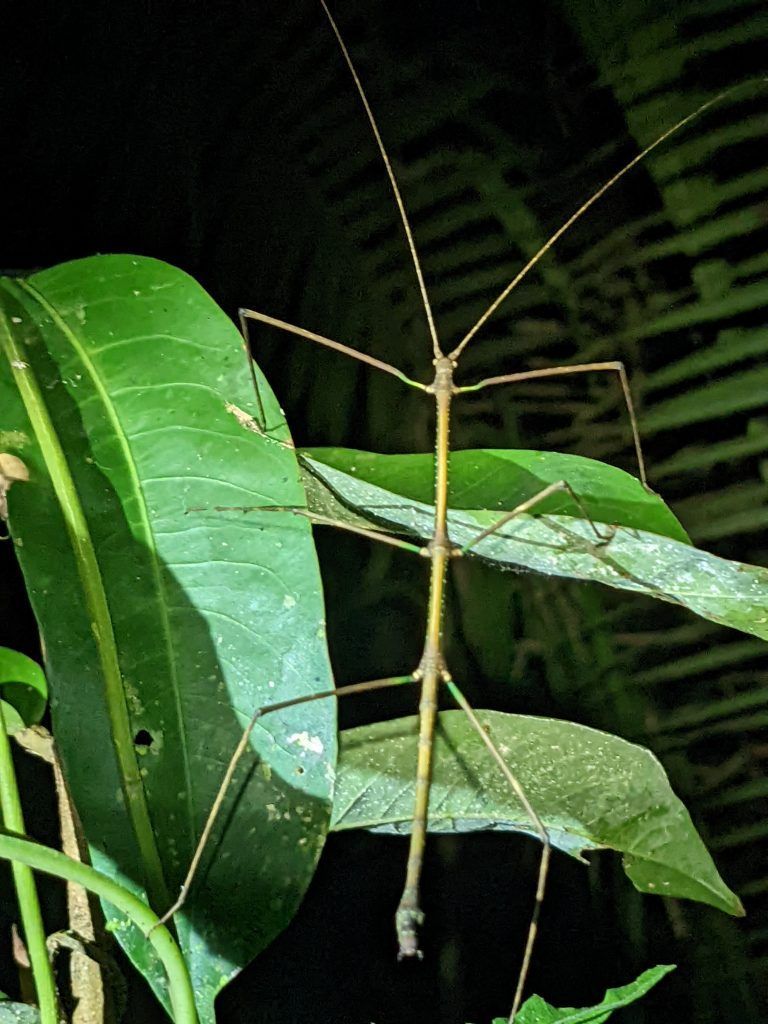
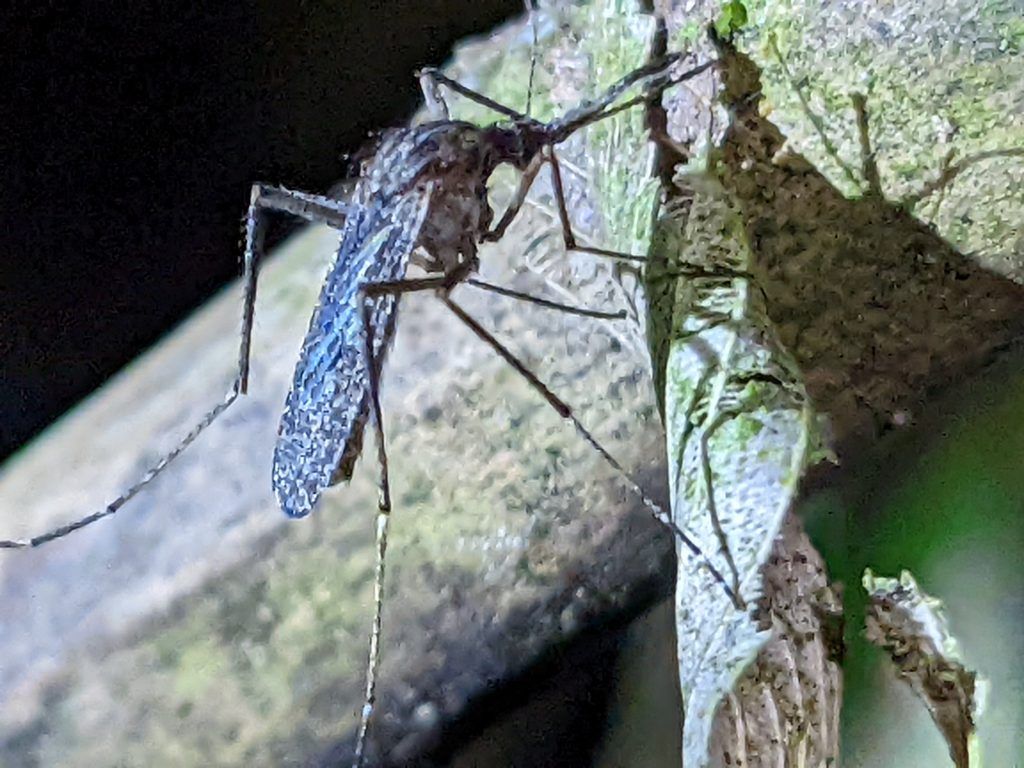
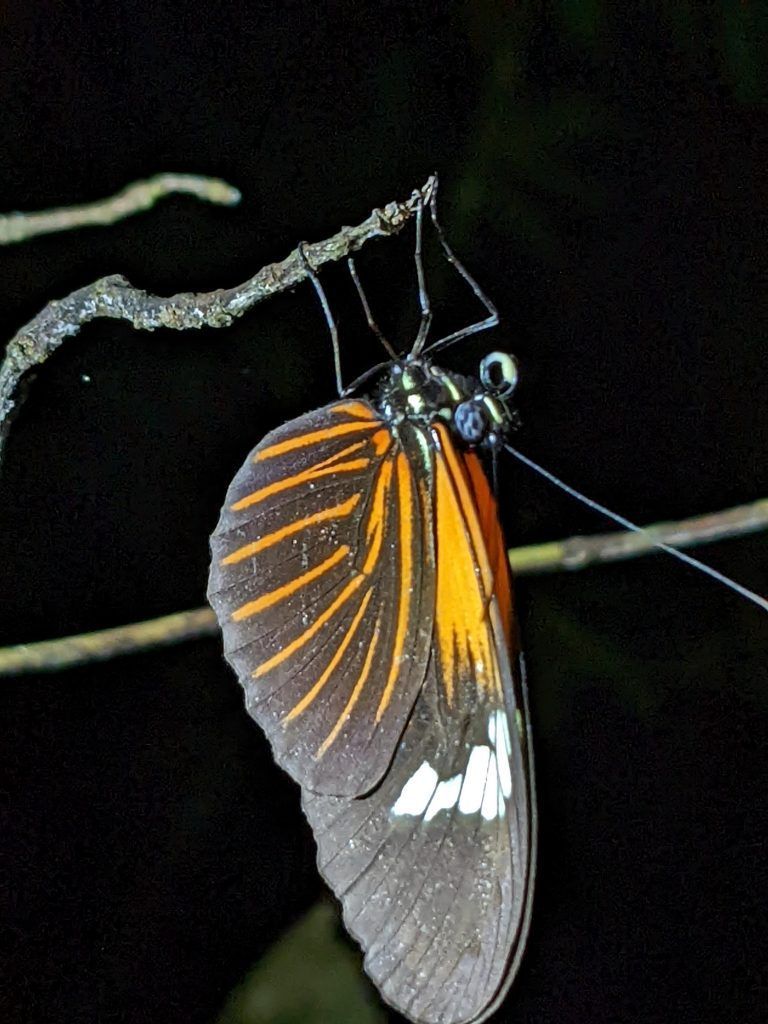
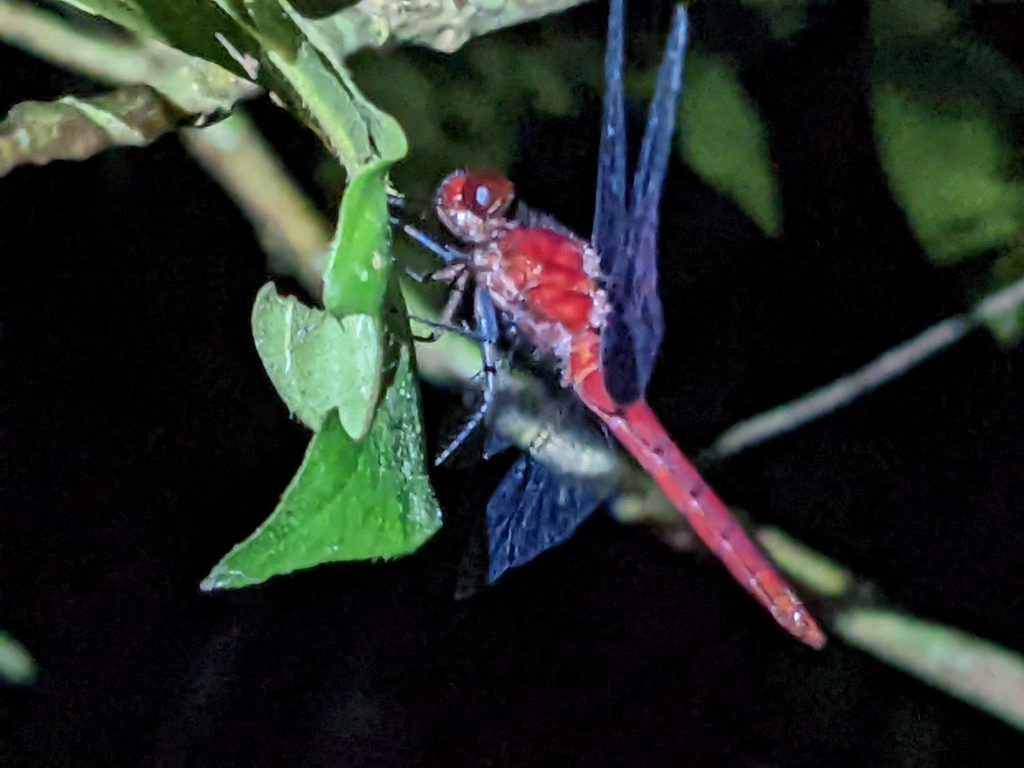
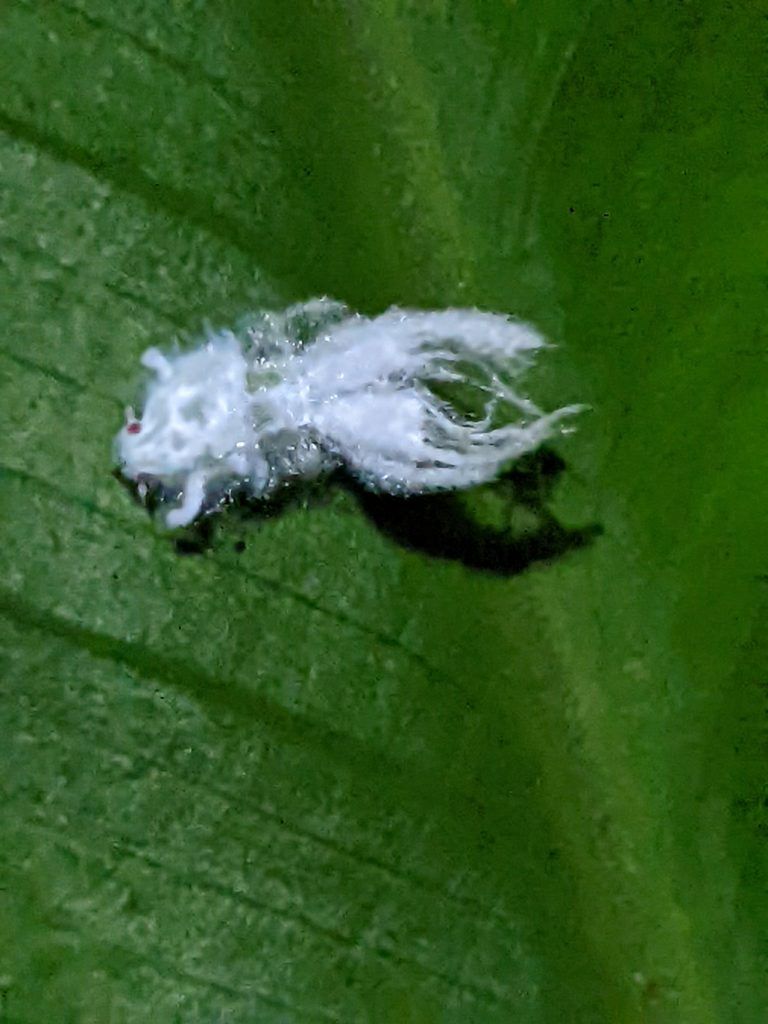
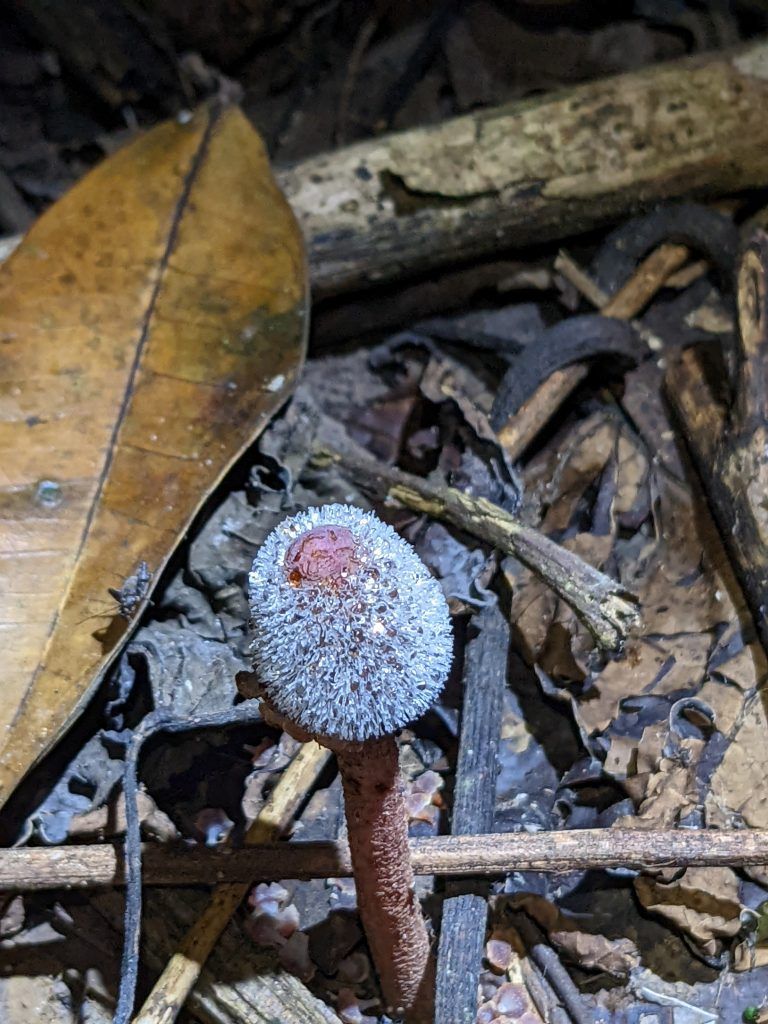
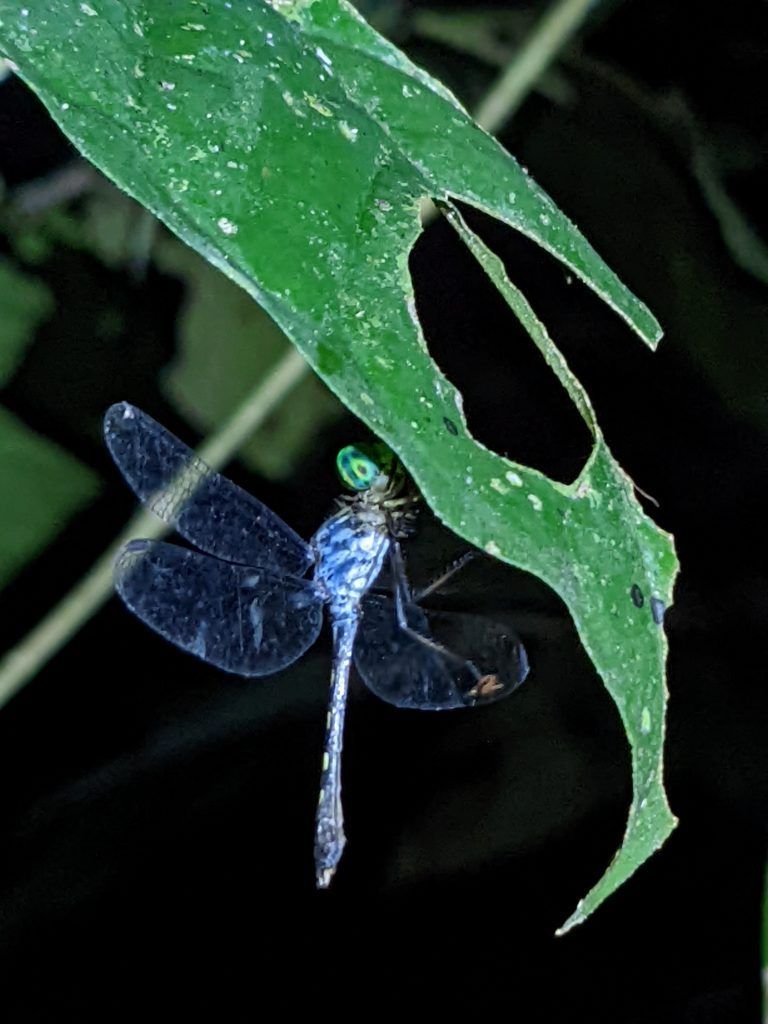
Making Rum
I got to visit a small rum distillery on the edge of the Amazon River.
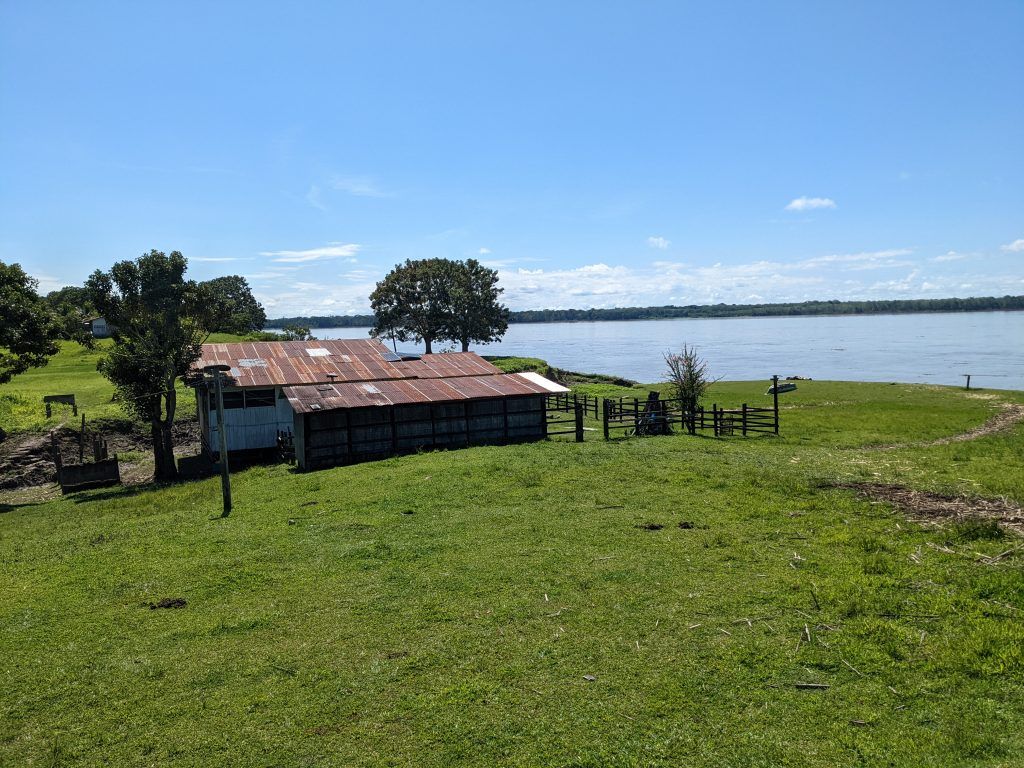
They grow over 70 hectcares of sugar cane.
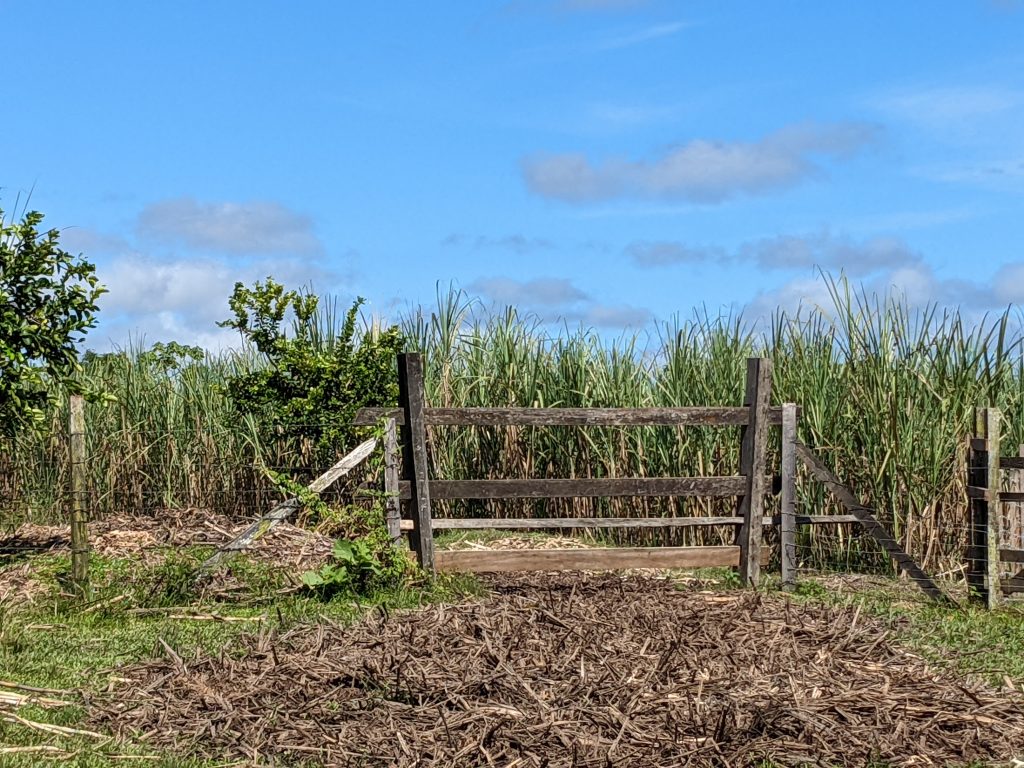
This machine grinds out the juice of the sugar cane. They can recycle and feed the pulp to various farm animals.
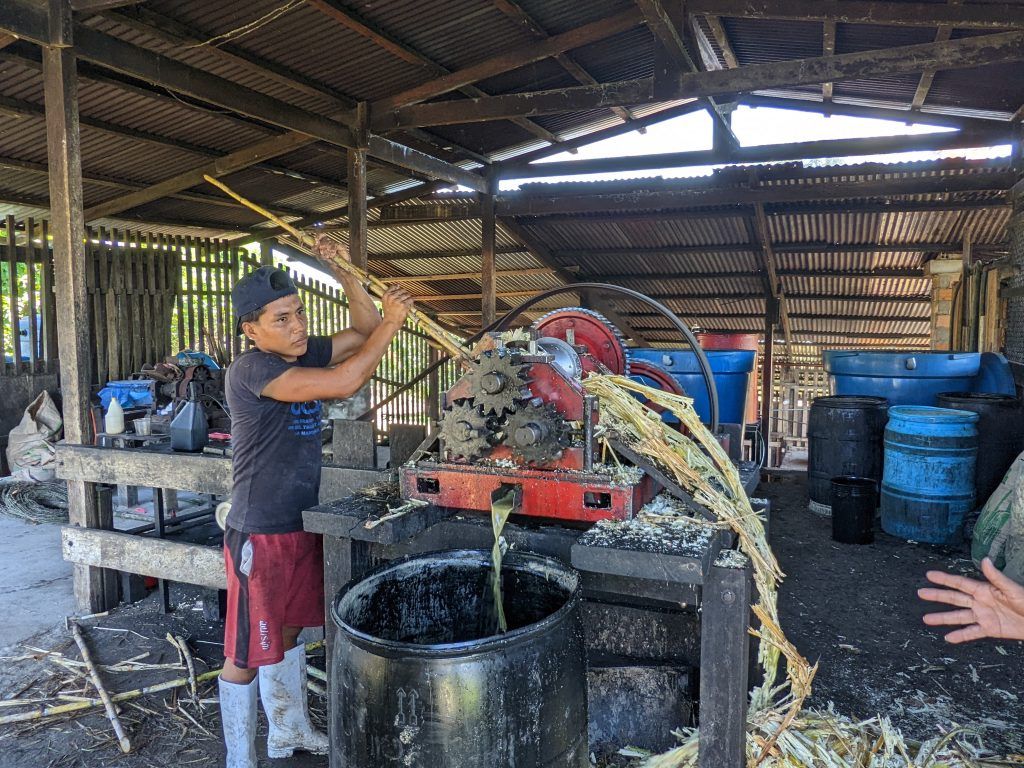
After sqeezing out the juice it ferments in the blue vats for 1-2 days. My guide Willy on the left and the owner on the right.
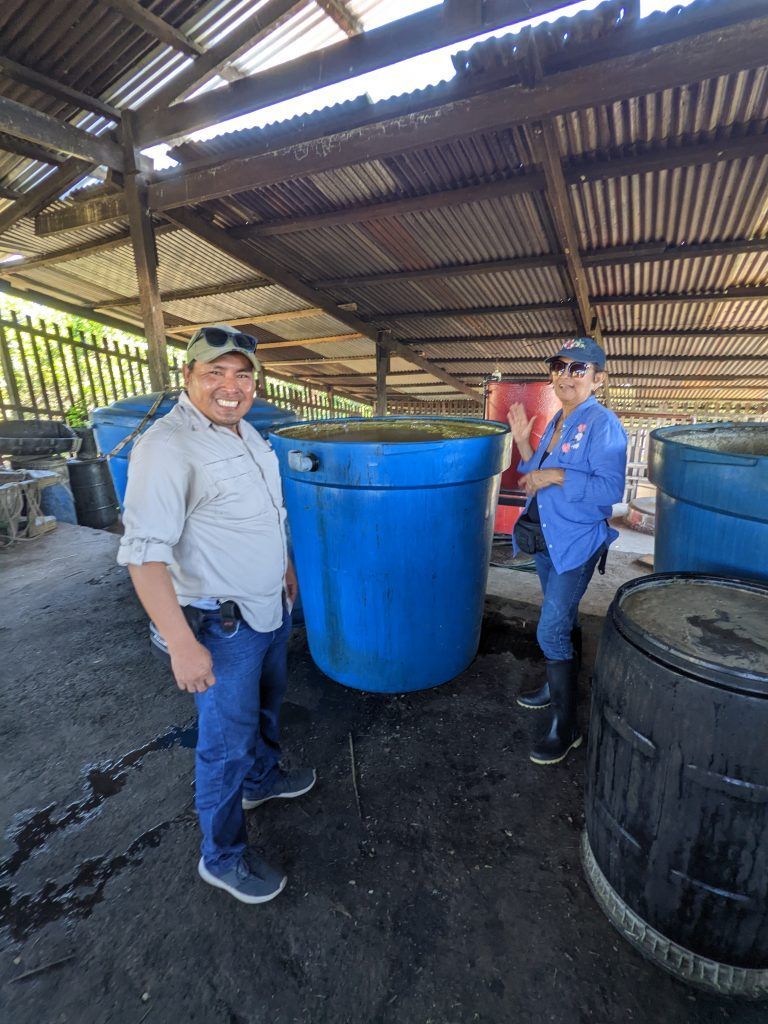
They then take a few hours to boil out the fermented bacteria through the cement furnace below.
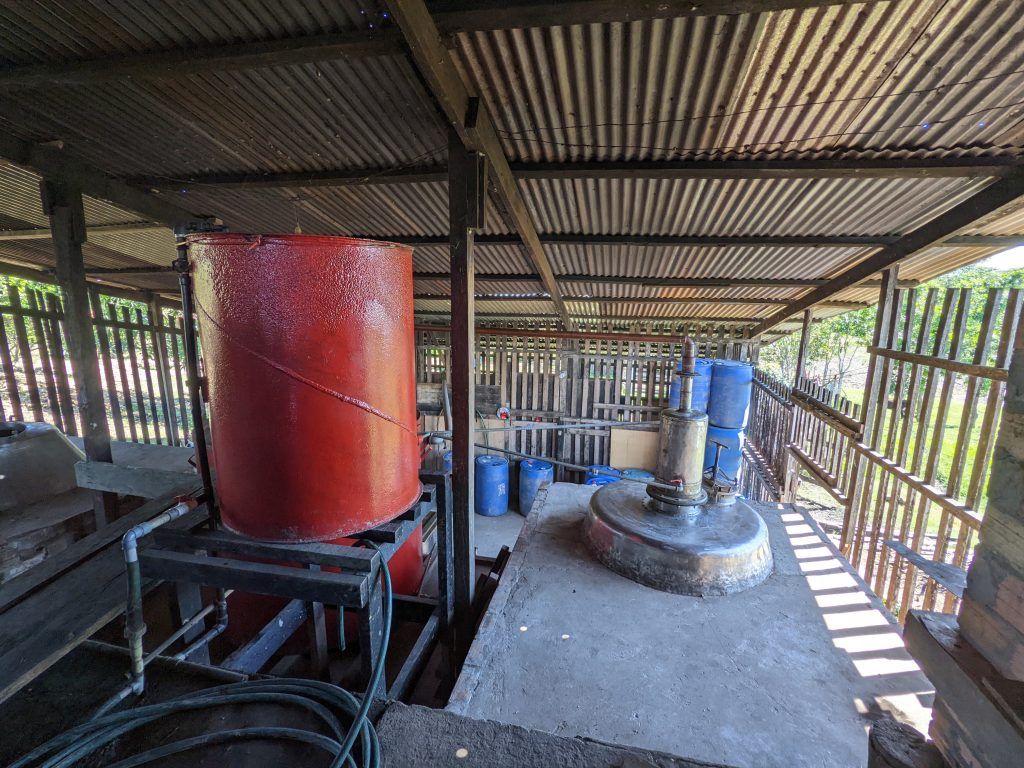
The fourth step is to put the boiled juice through a filter.
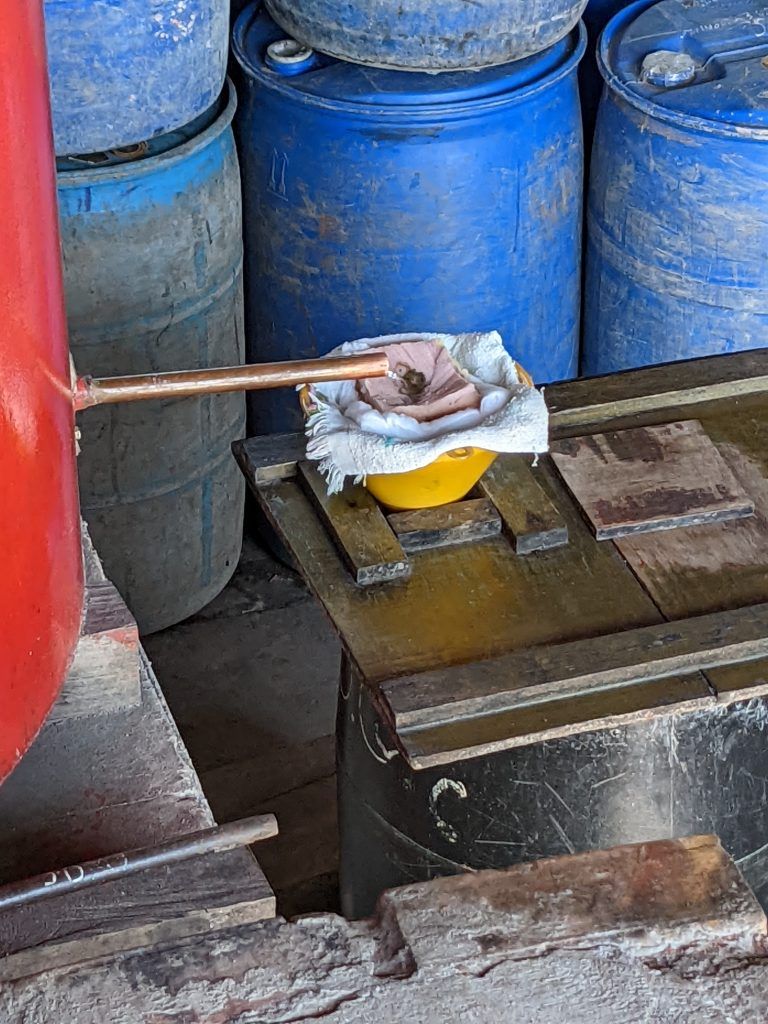
This rum batch is 48% alcohal from the technician’s quick test.
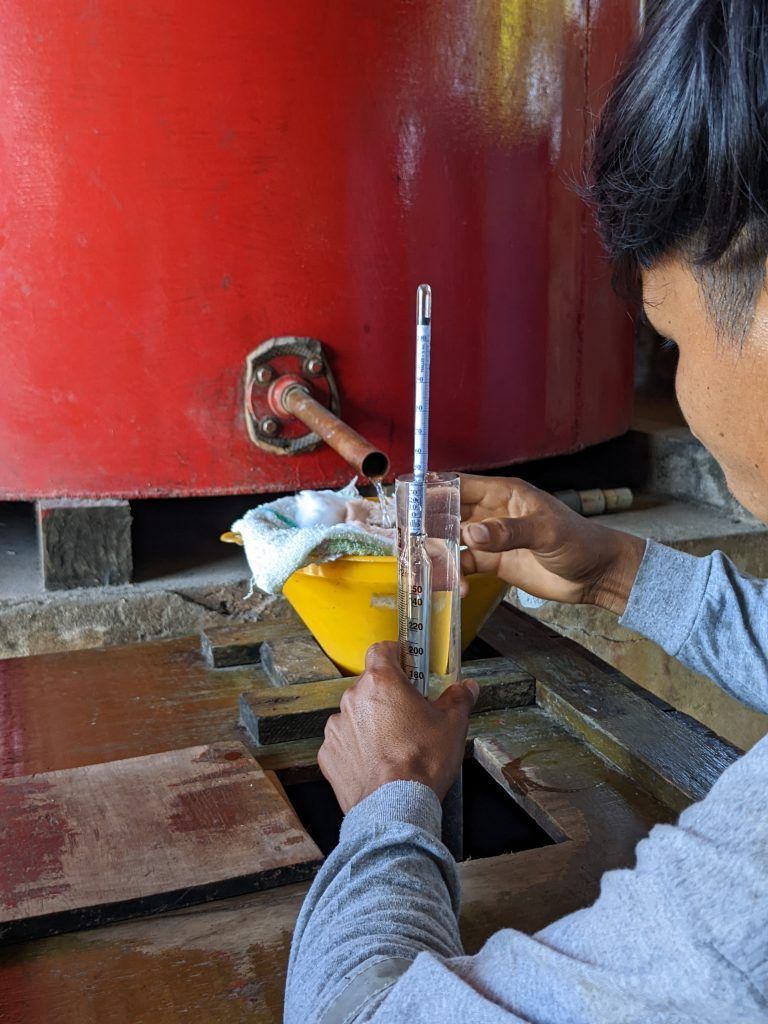
It definitely tasted strong!
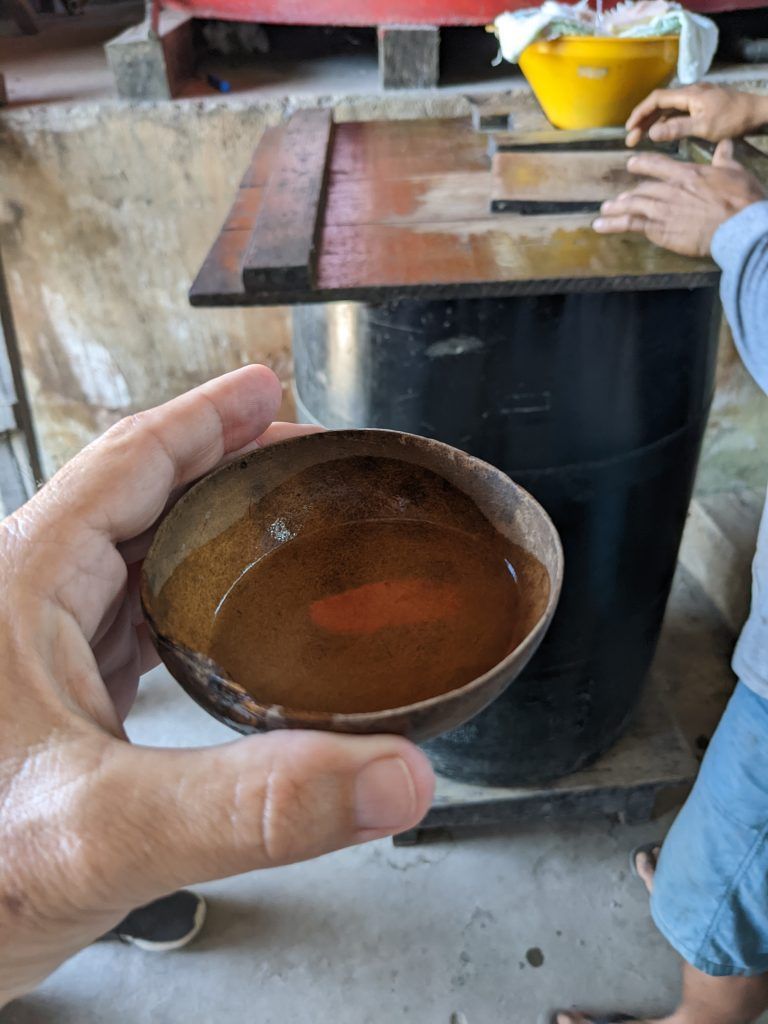
The bottle I bought. It was mixed with special bark and had a relatively smooth taste. They also sell it straight, mixed with fruit or mixed with ginger. My guide preferred the ginger mix.
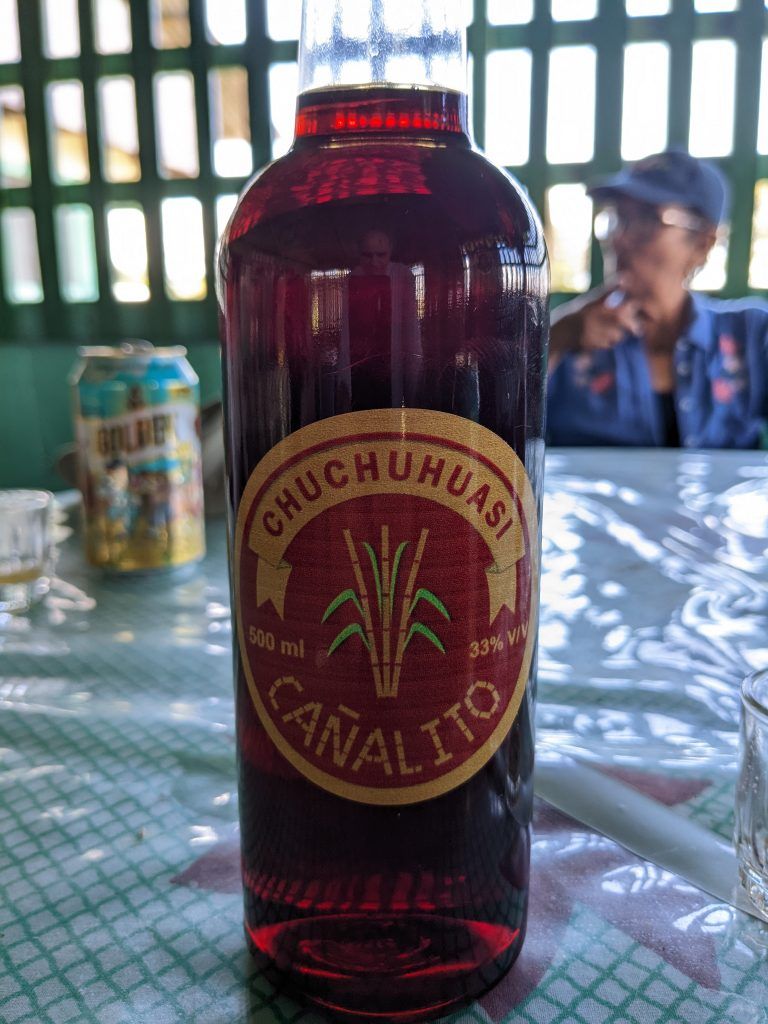
The City of Iquitos
Iquitos is a rough and tumble city of over 400,000 people near the Amazon River. It’s the largest city in the world that cannot be reached by road, it is accessible only by river and air. It grew significantly from a rubber boom in the early 20th century and still has some nice architecture generated from the wealth from that period. But overall from what I’ve seen outside the main tourist area, it’s a tumbled down city with scores of tuks tuks and buses dominating the roads. I stayed there before and after my Amazon excursion.
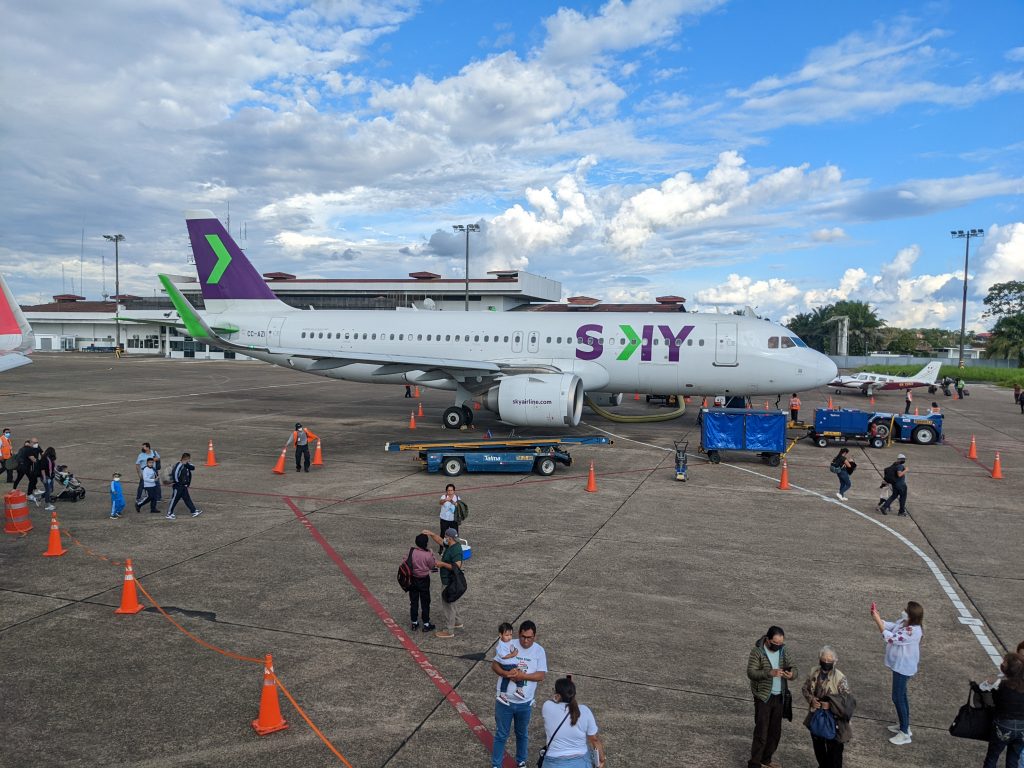
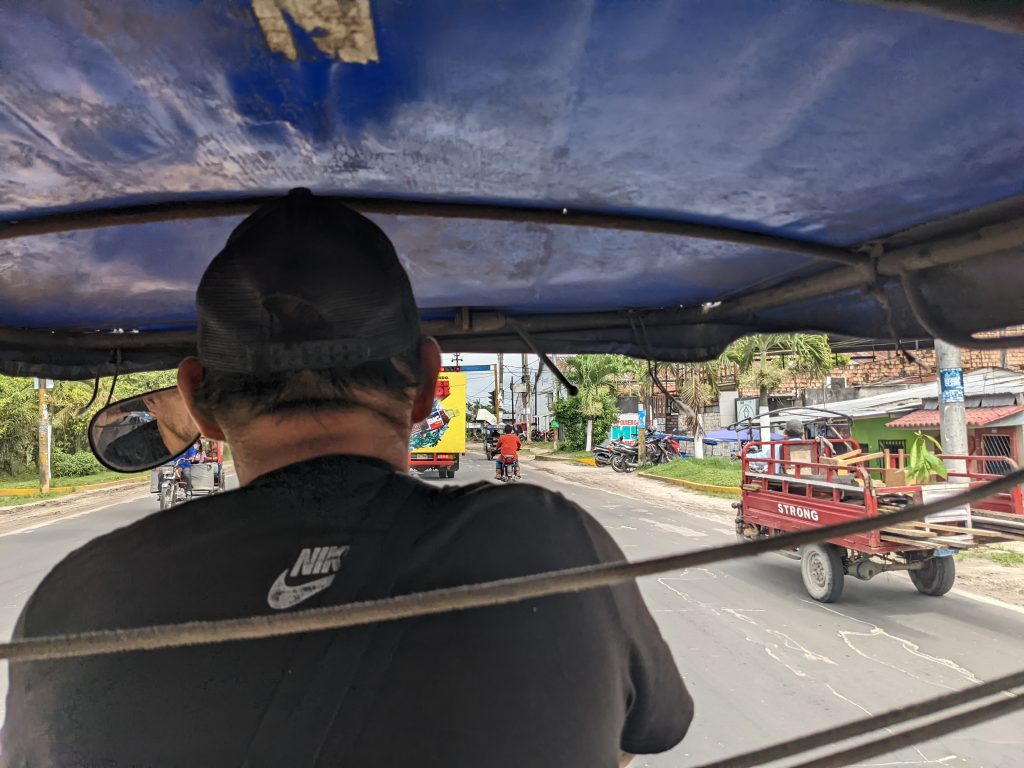
One of the nicest things to see in Iquitos is the Amazon Rescue Center. They are primarily known for their extensive manatee rehabilitation efforts. They also do a wide range of educational activities for local schools. There are even some school excursions that visit from as far away as Lima.
